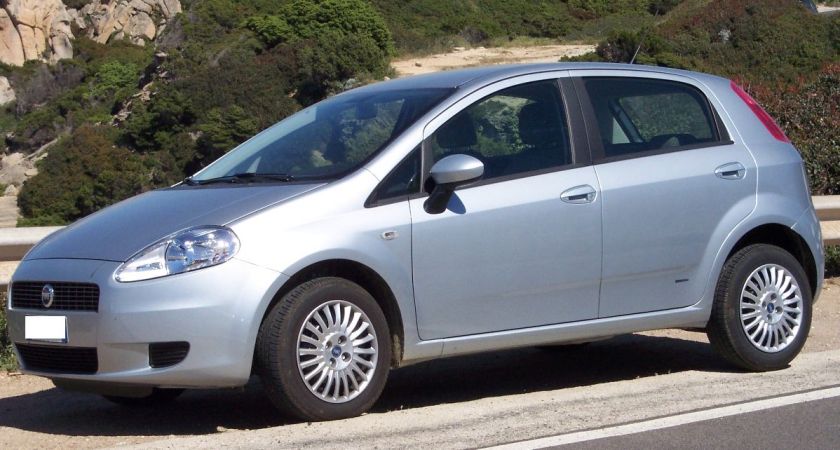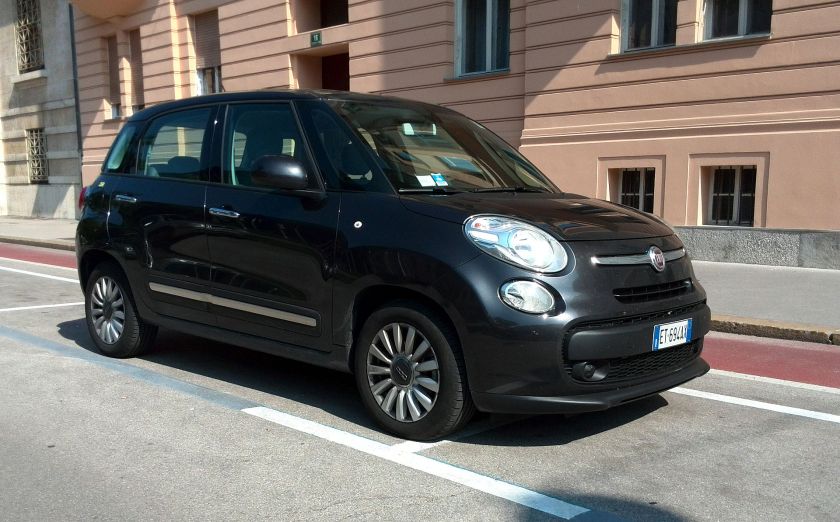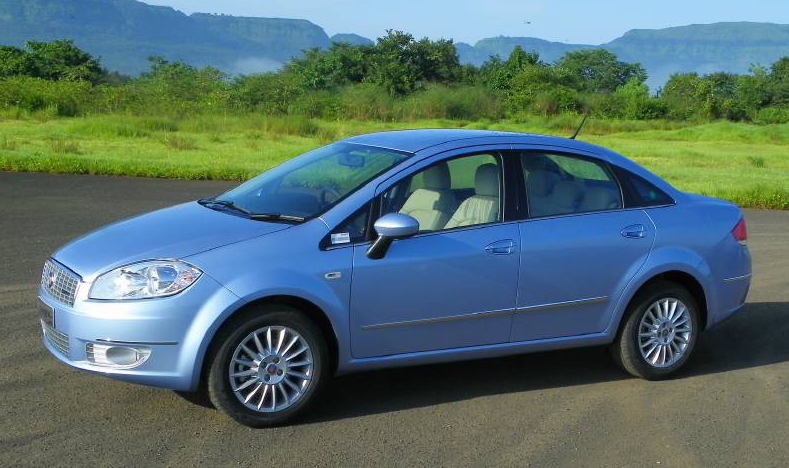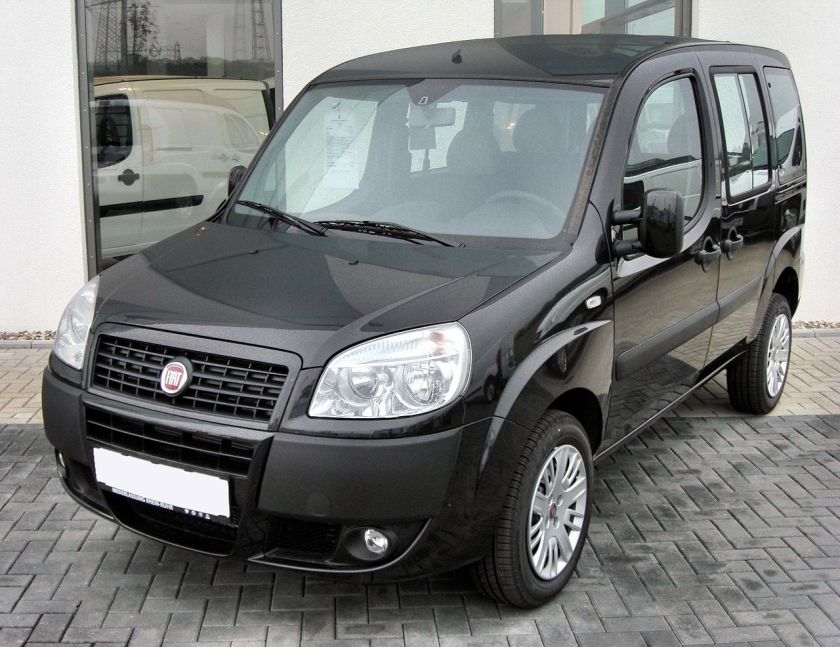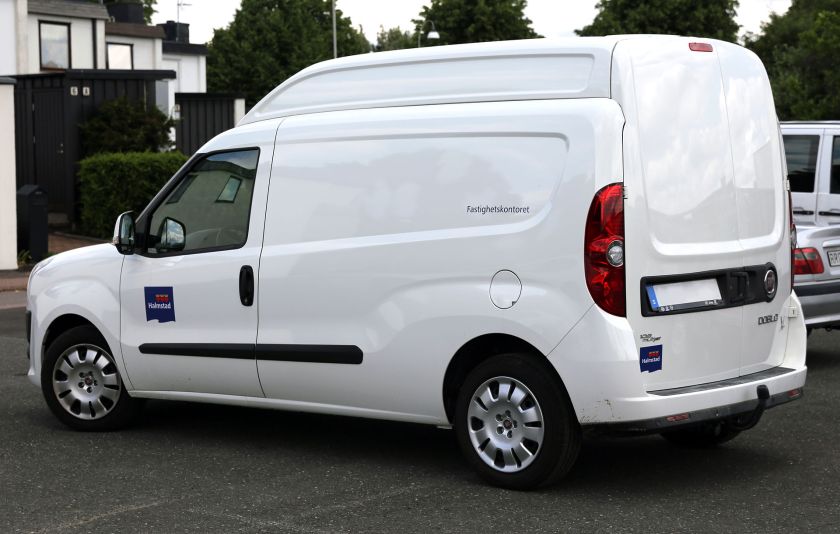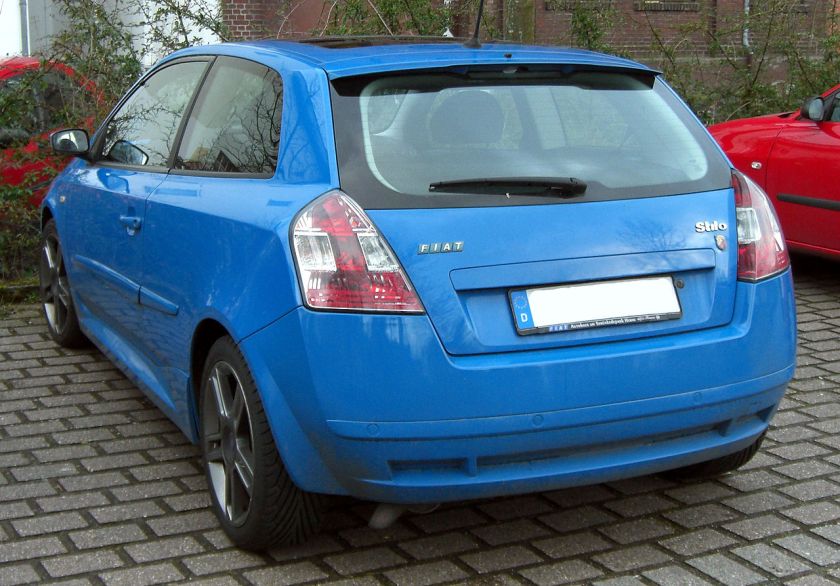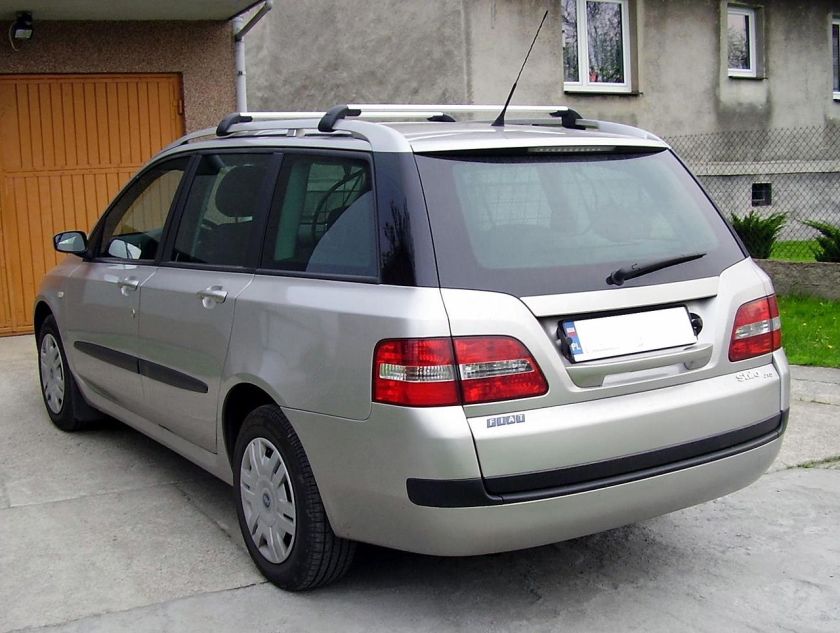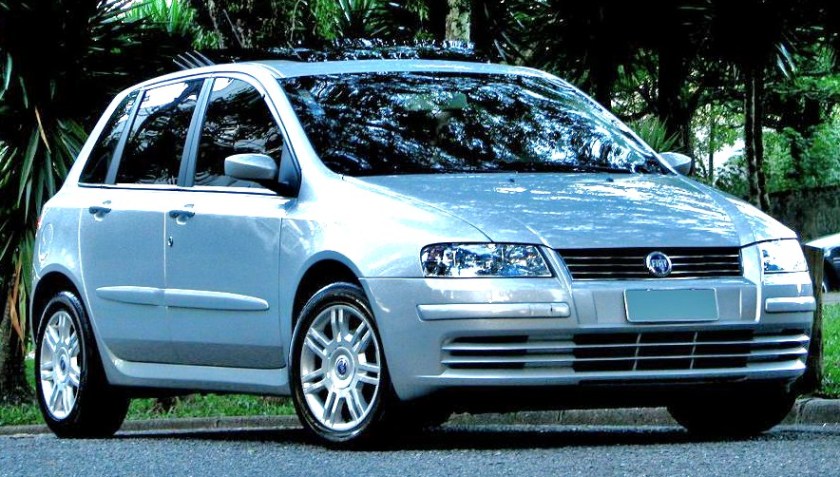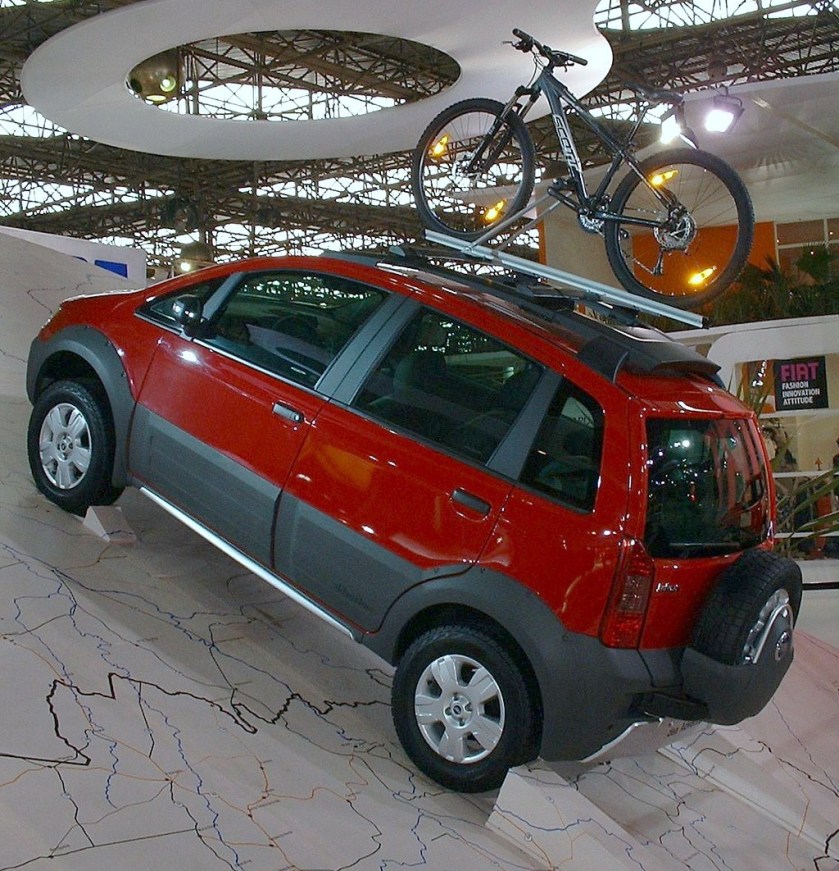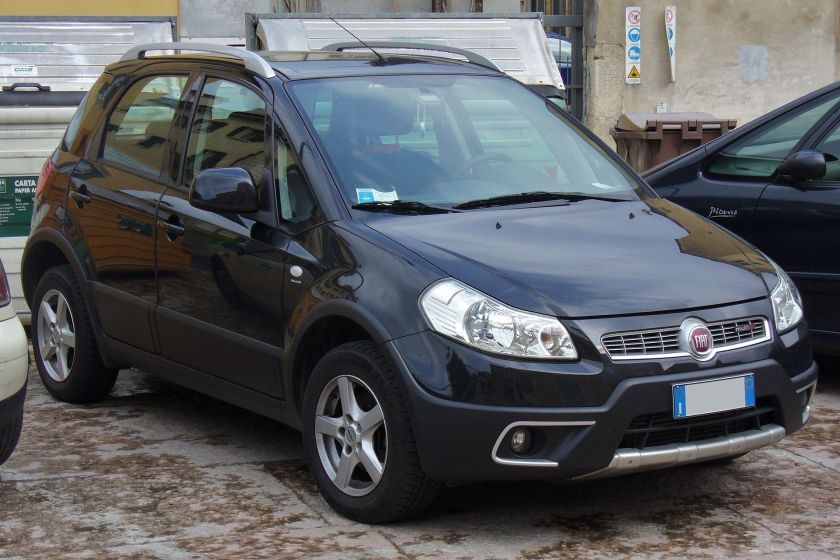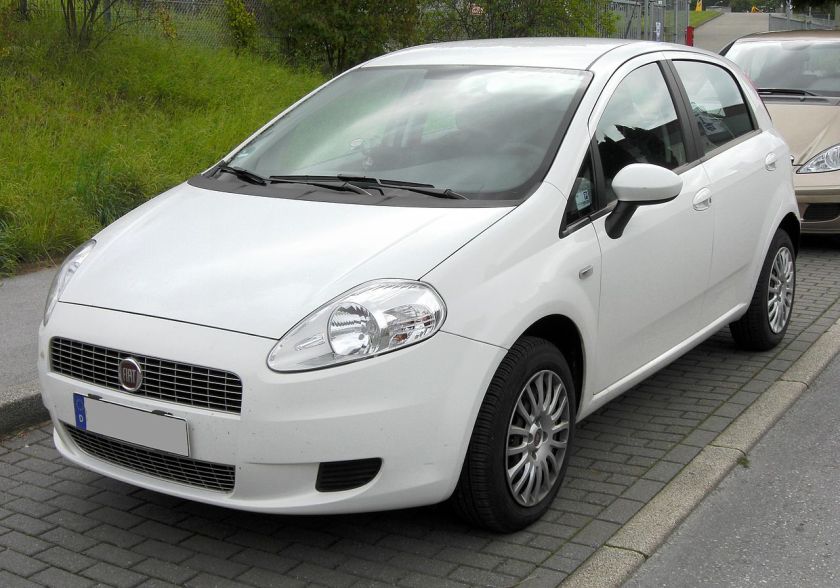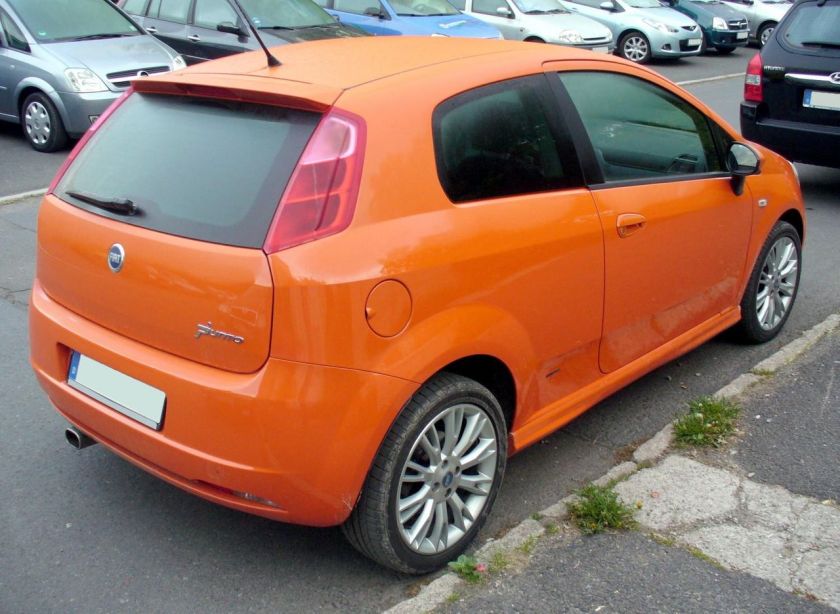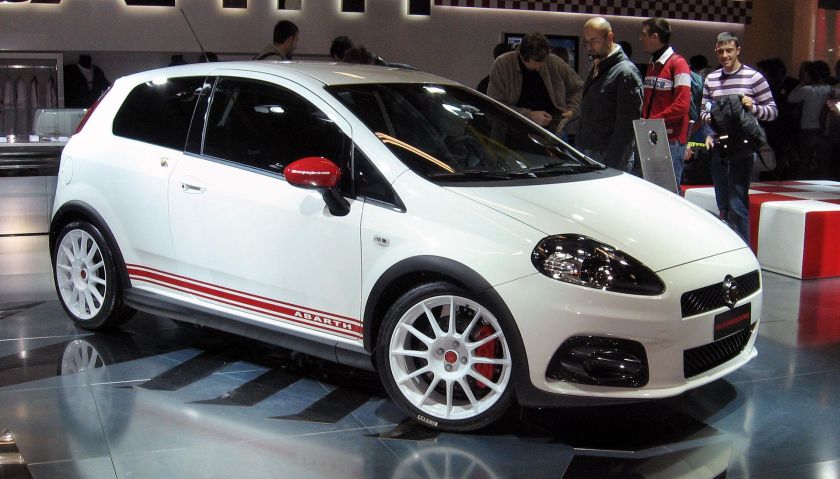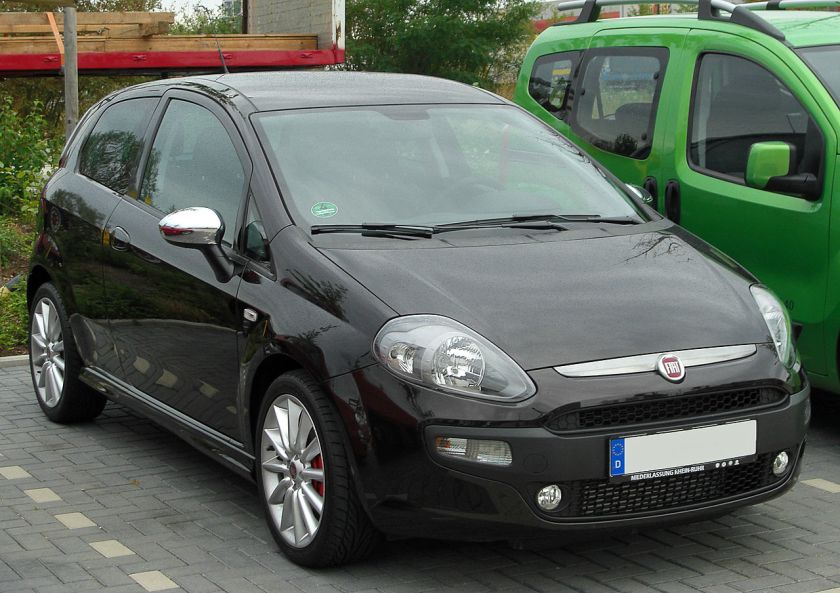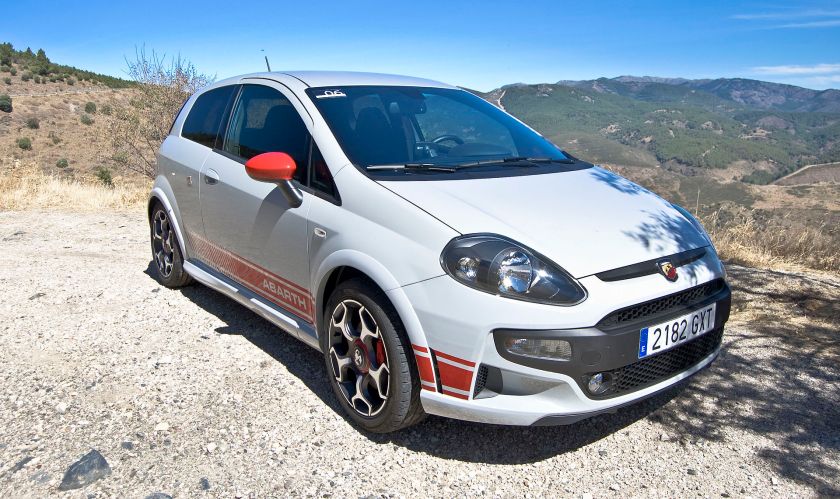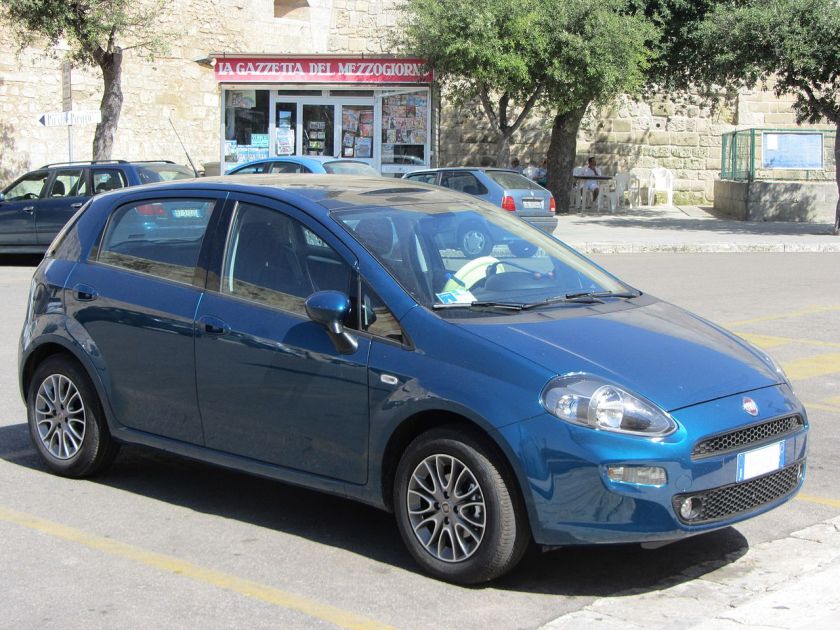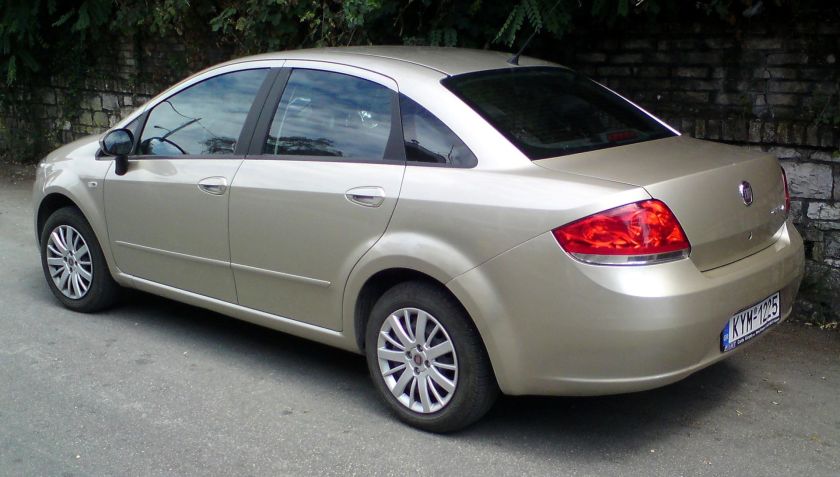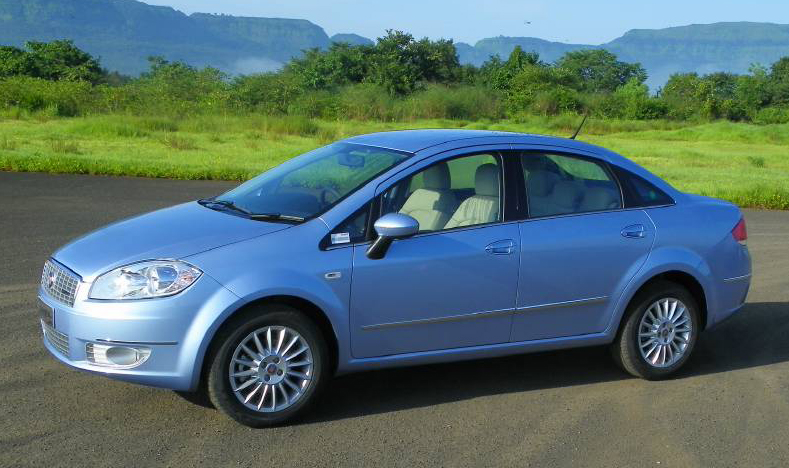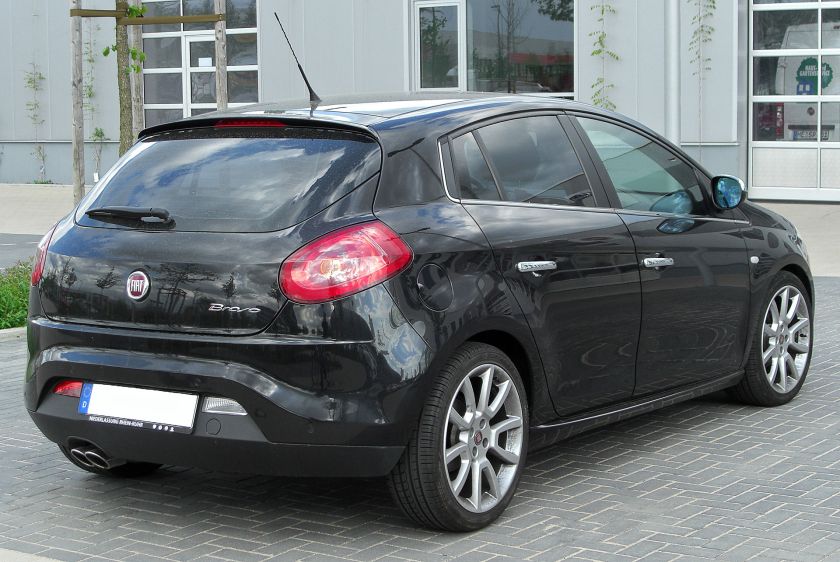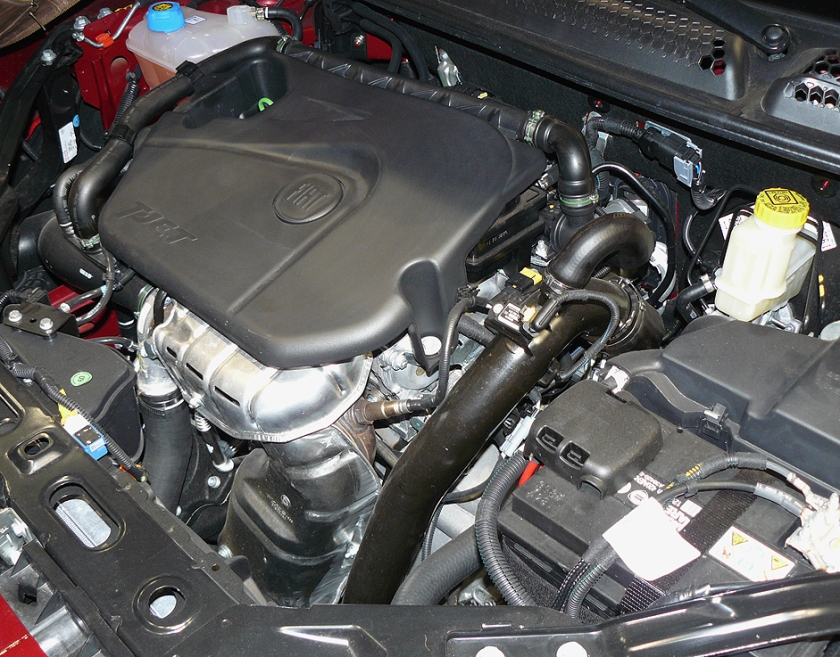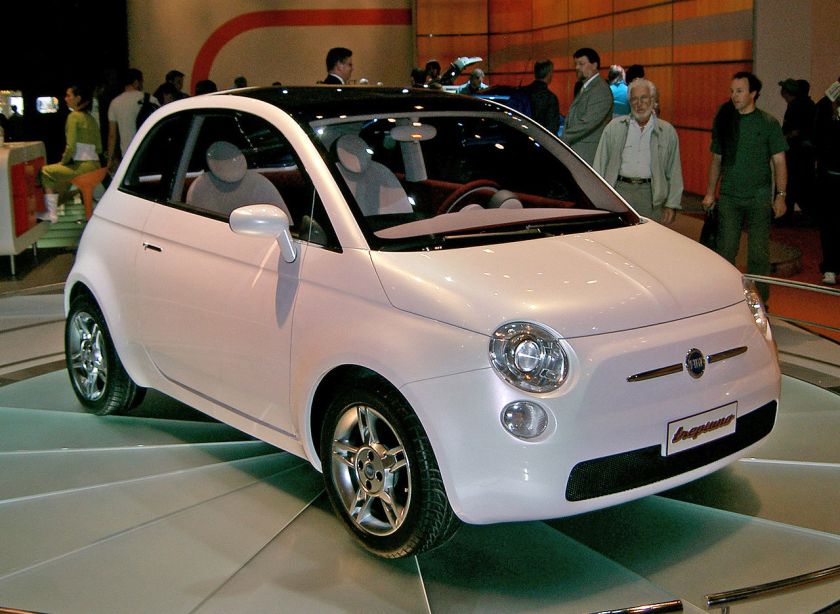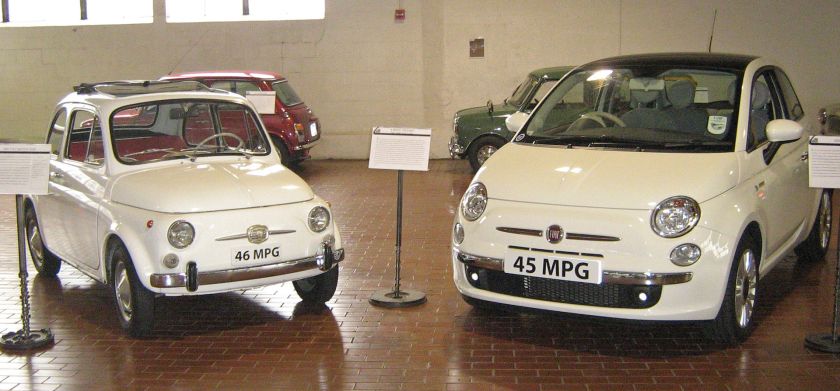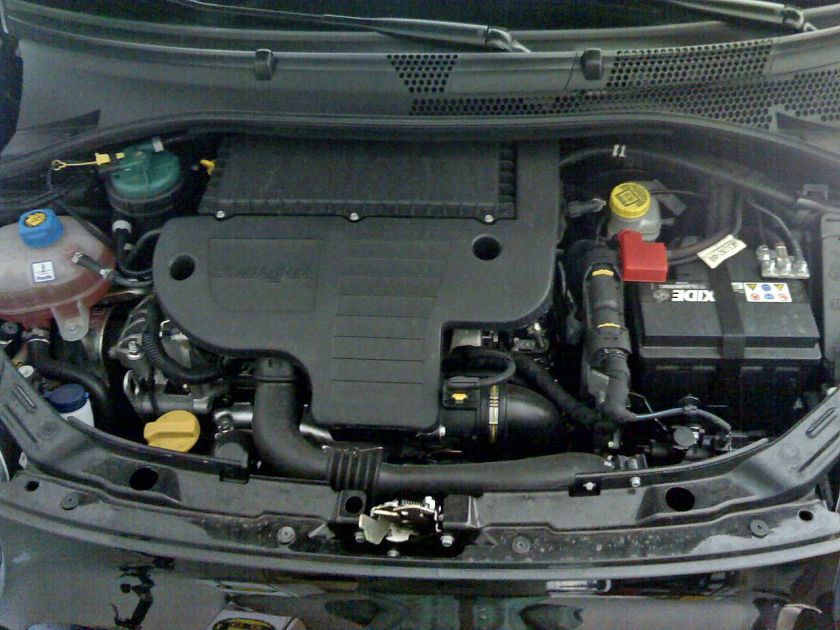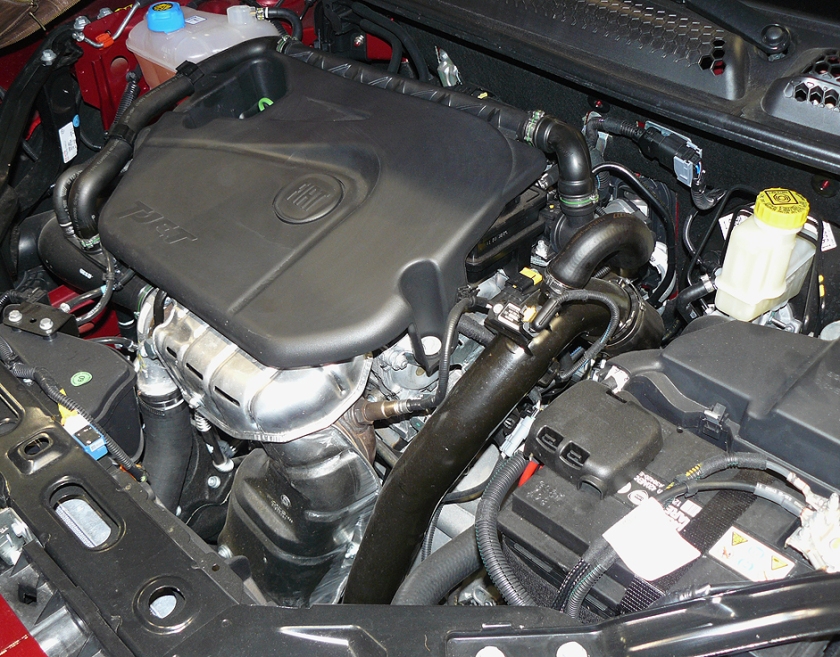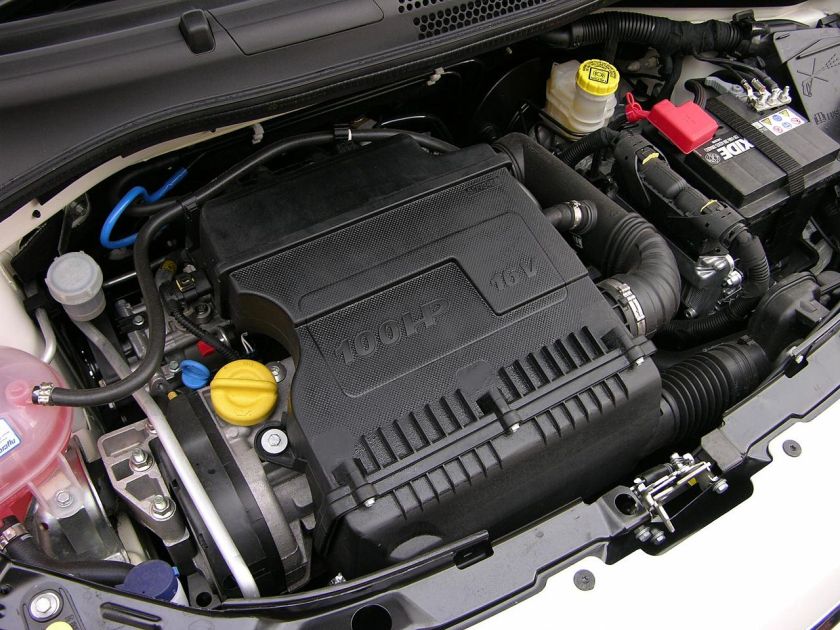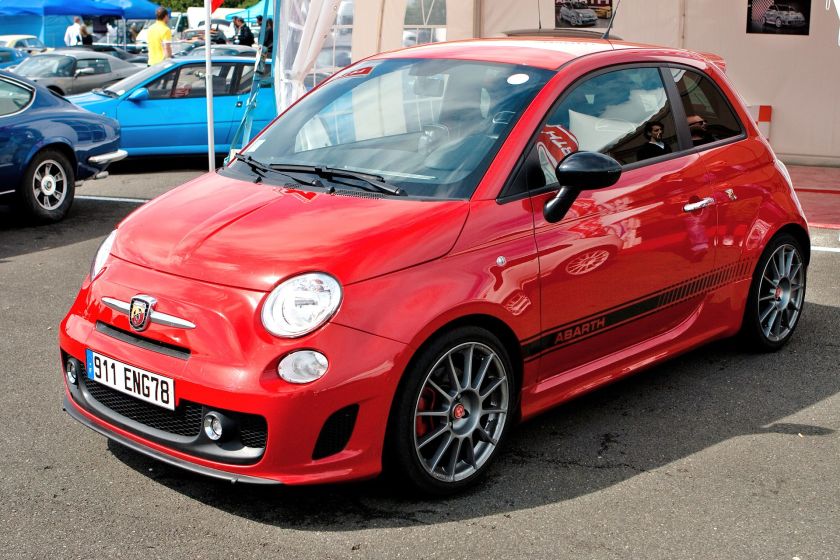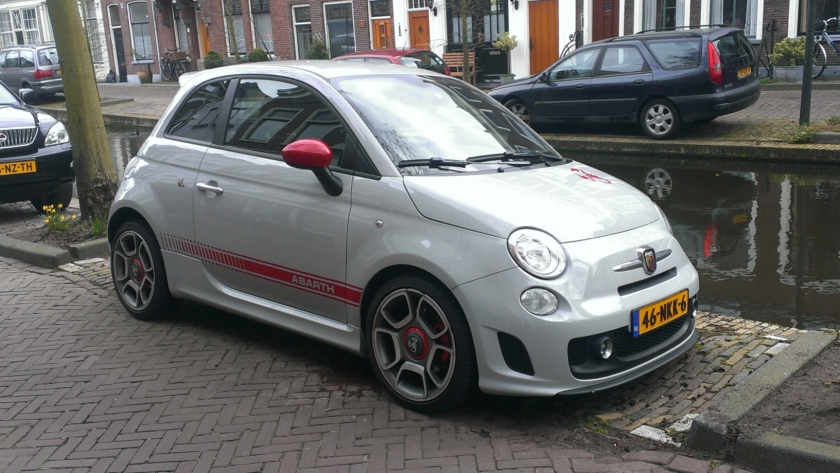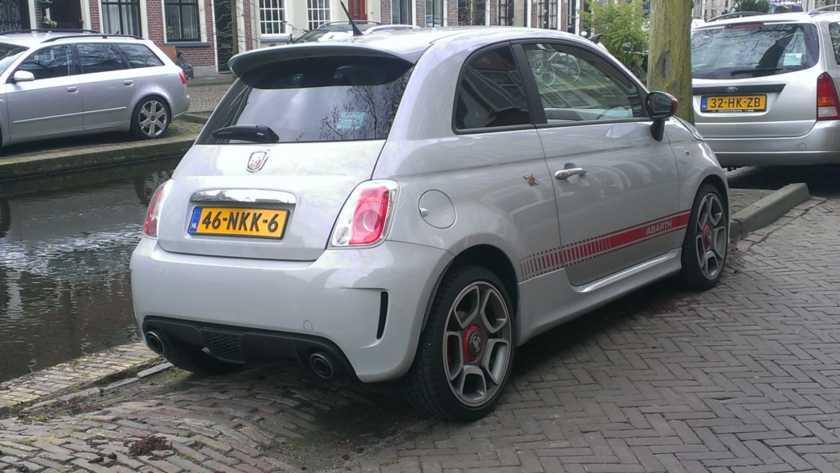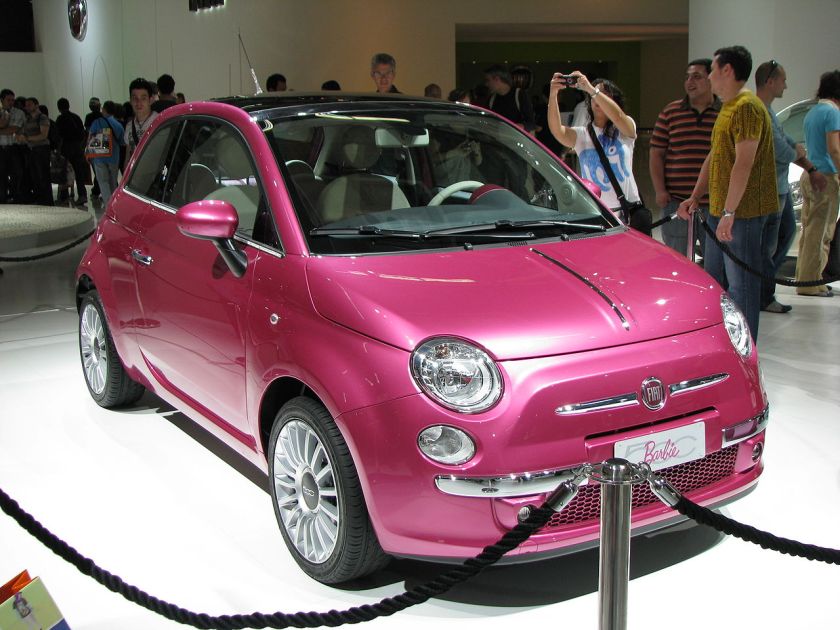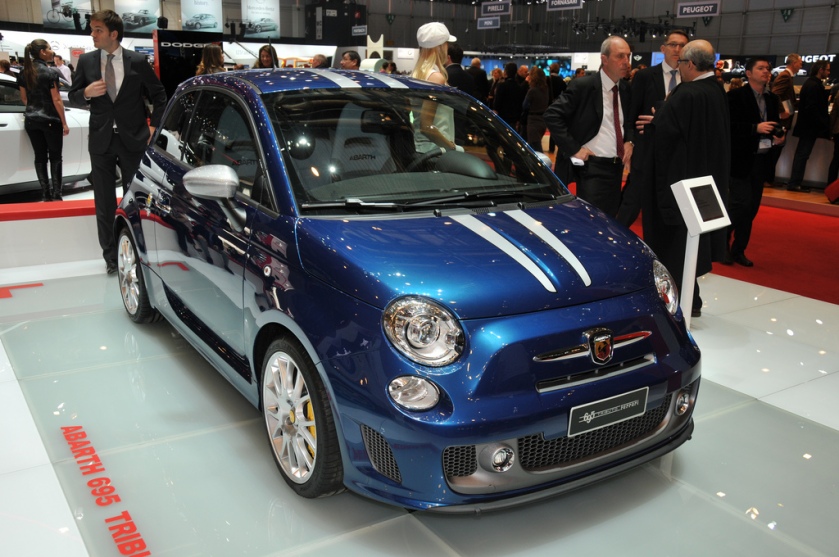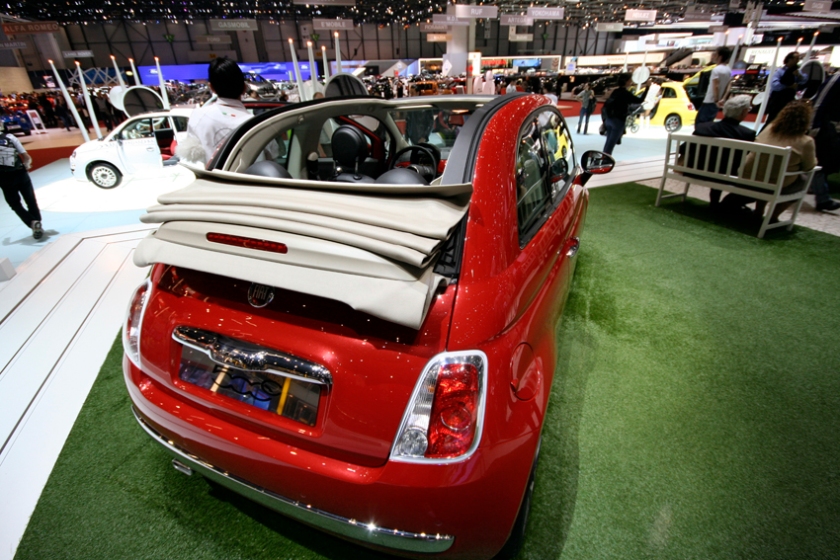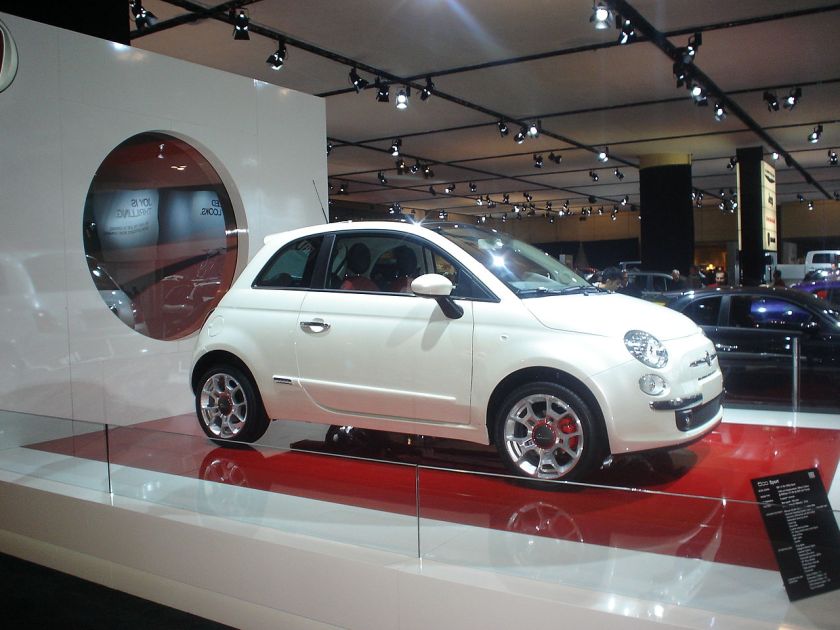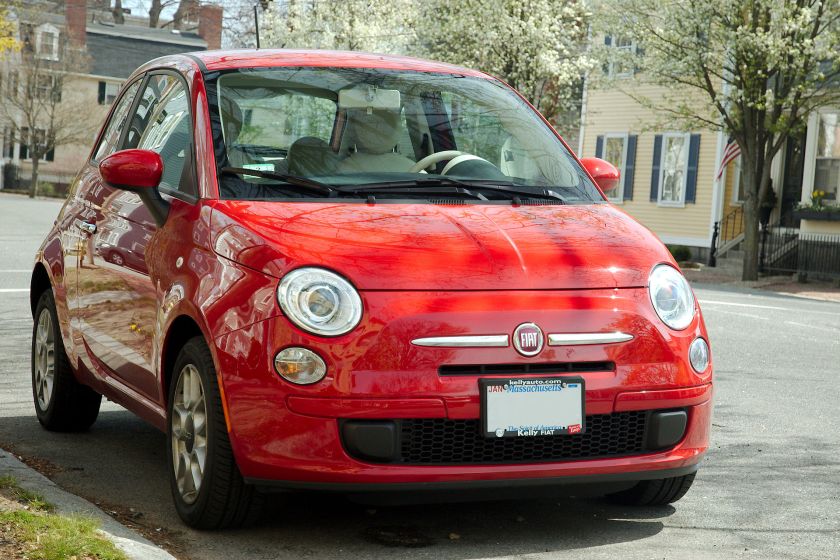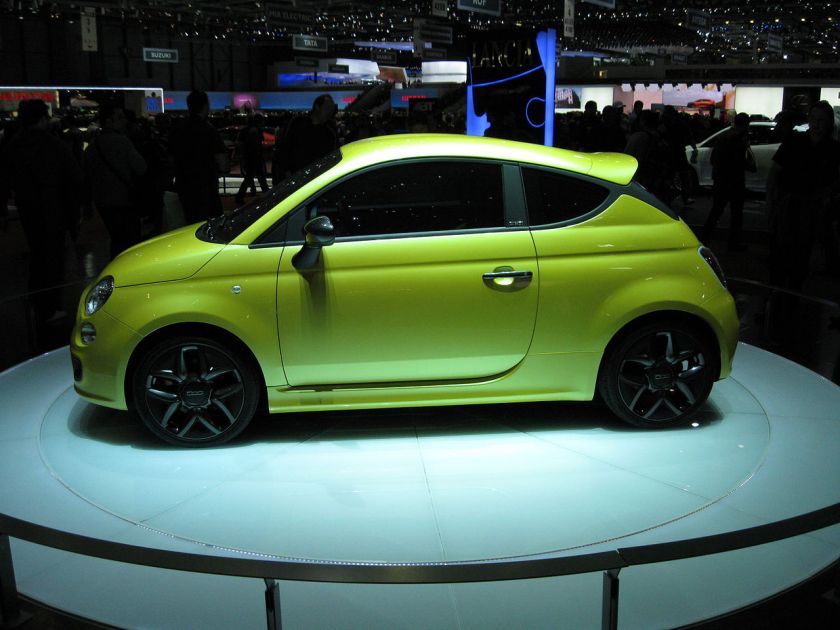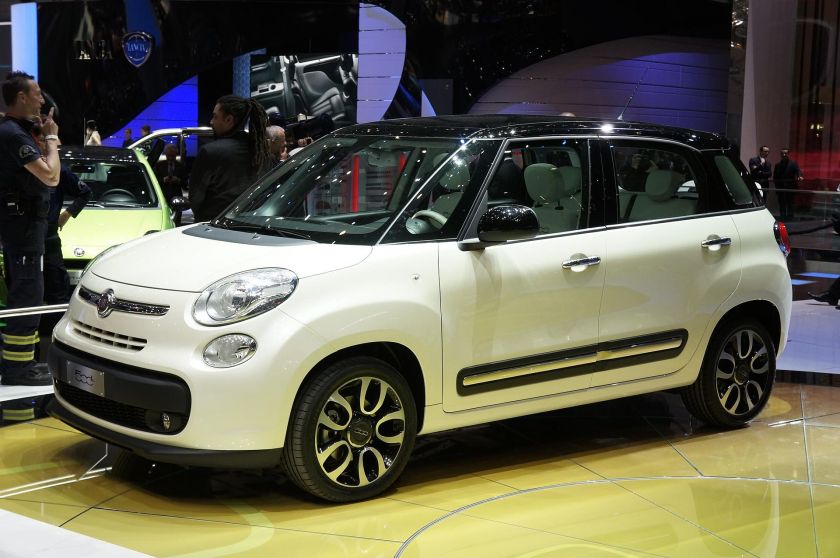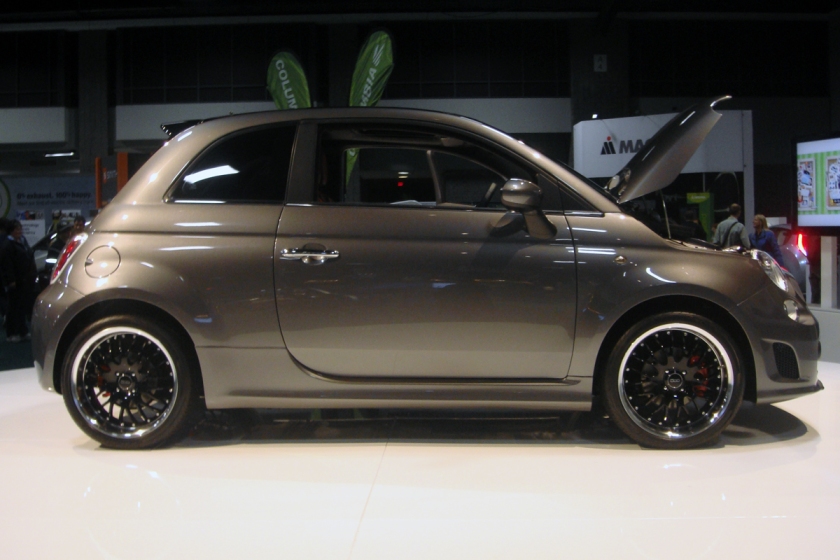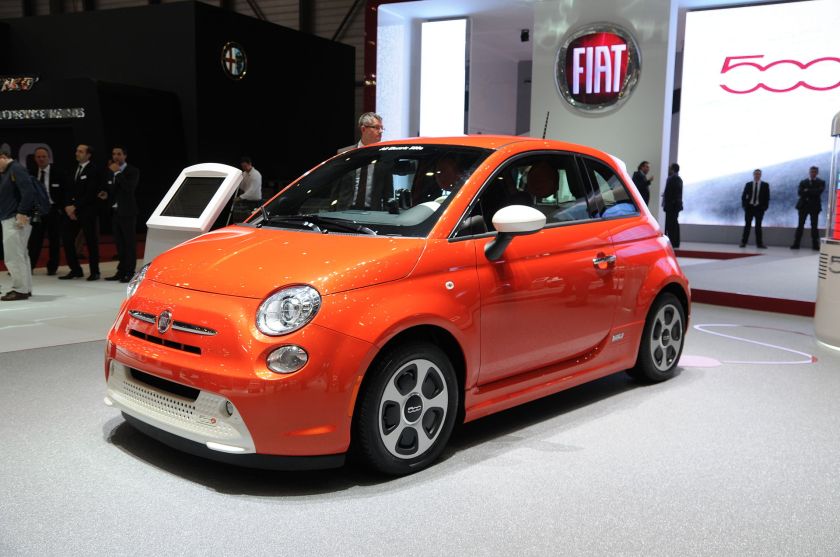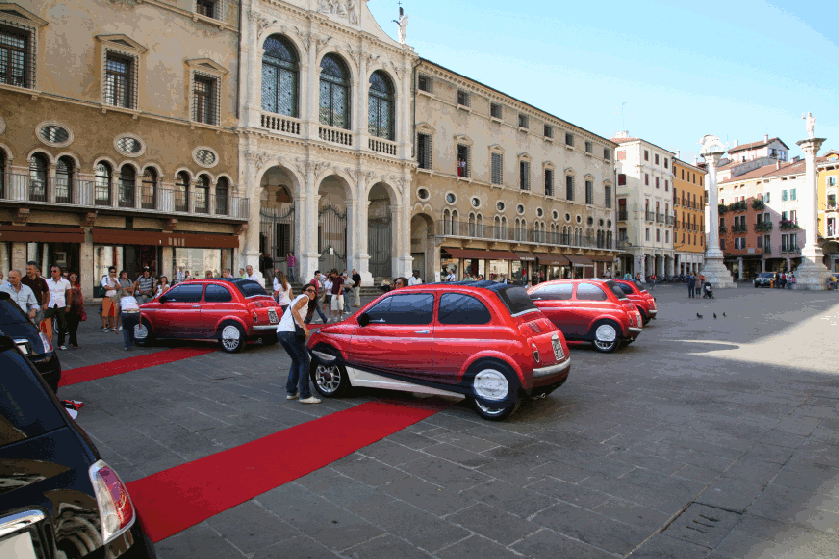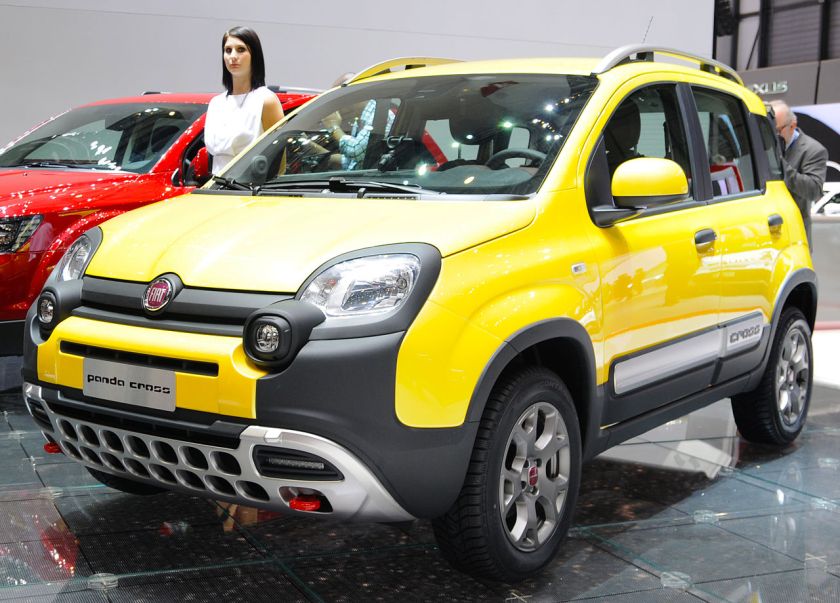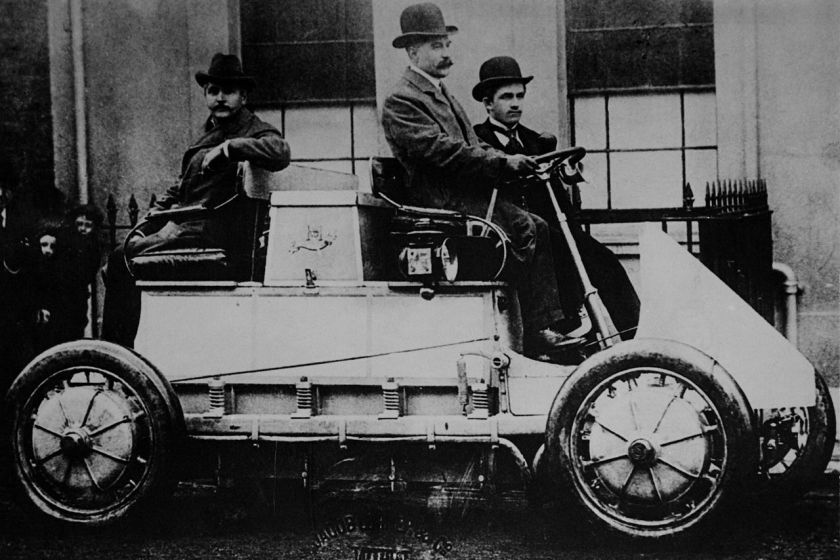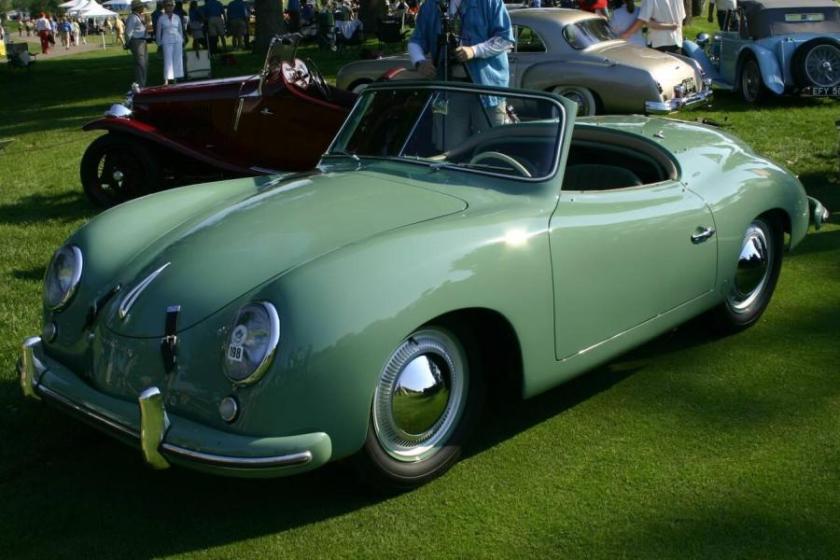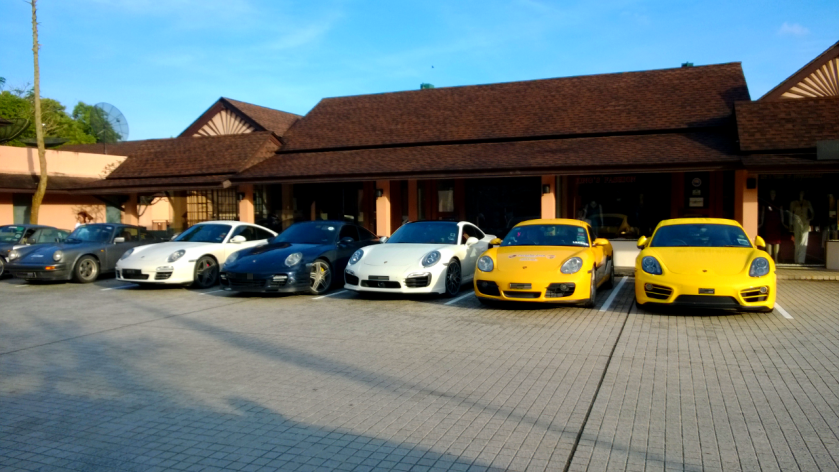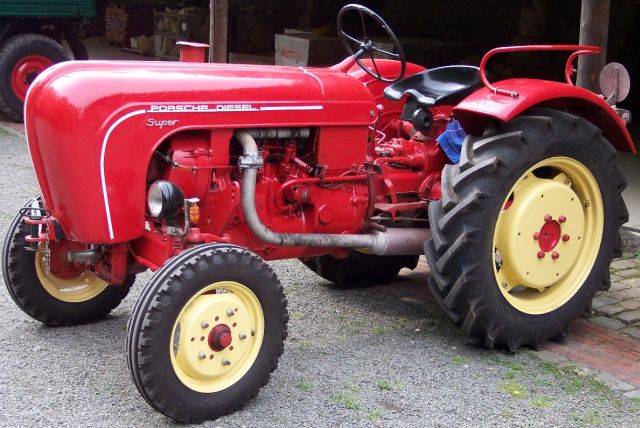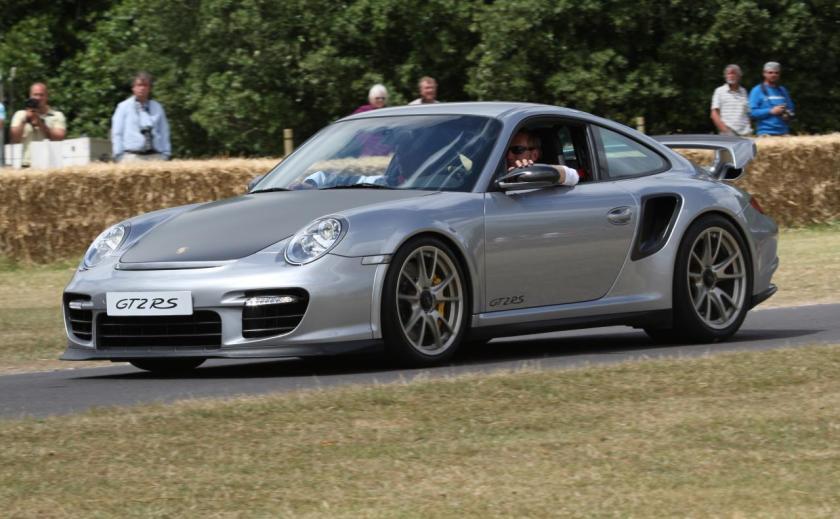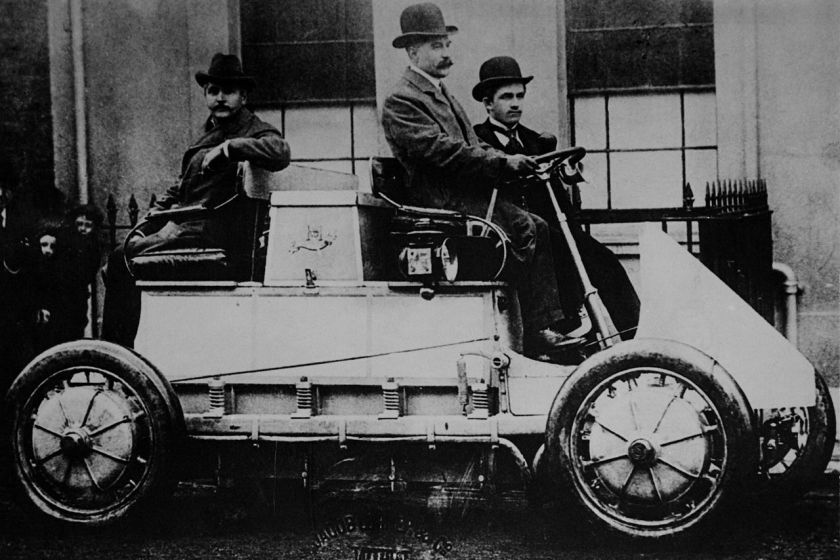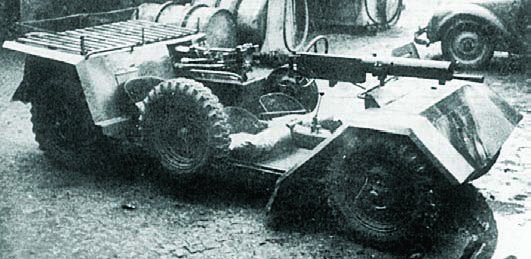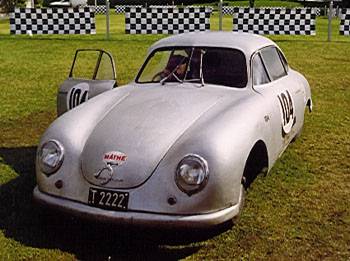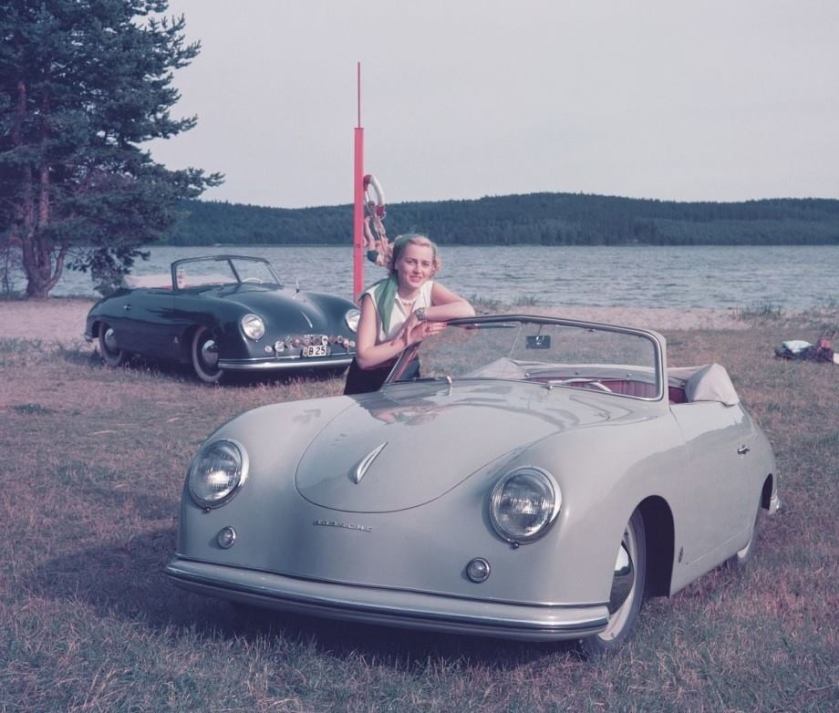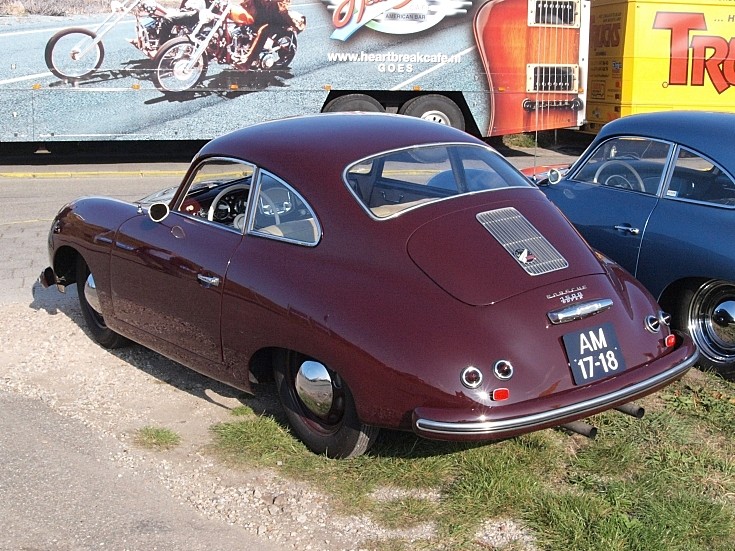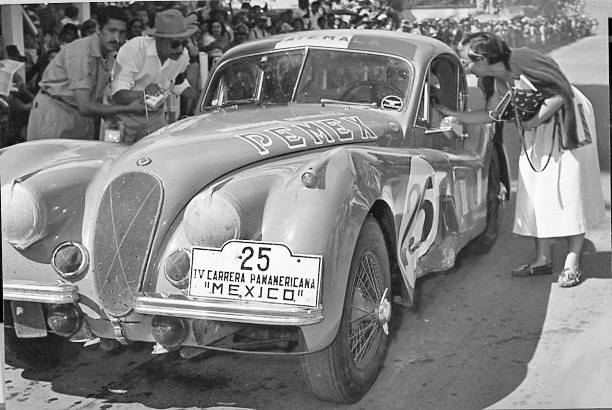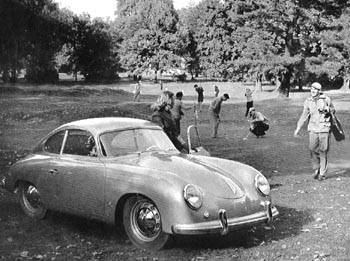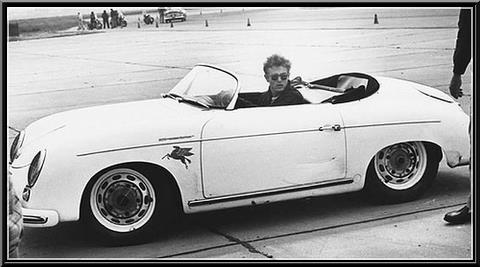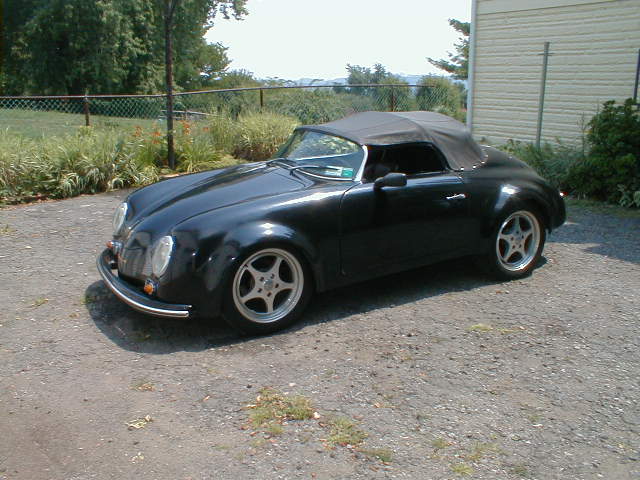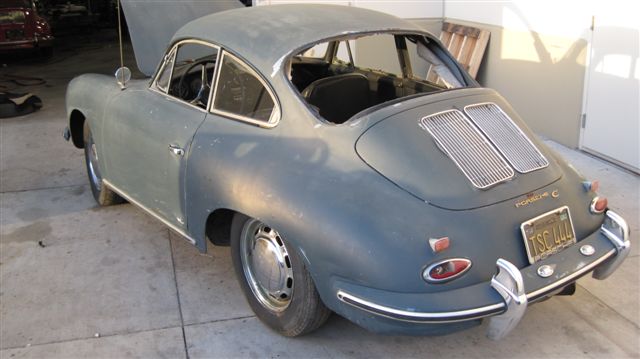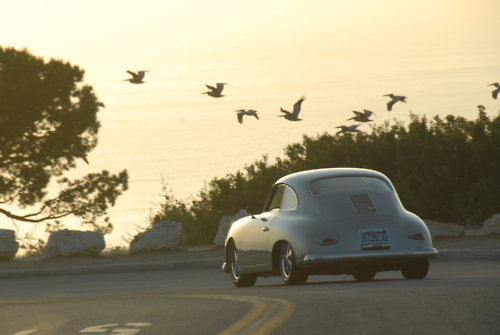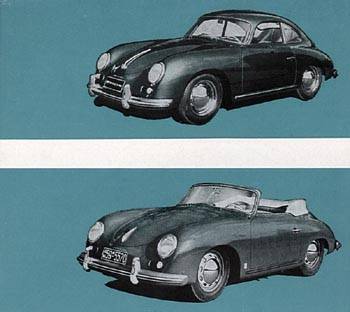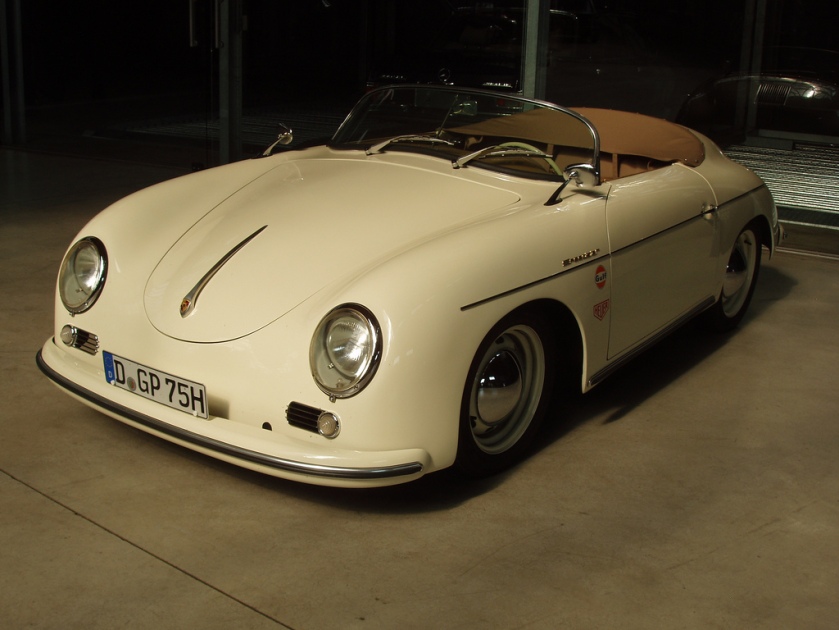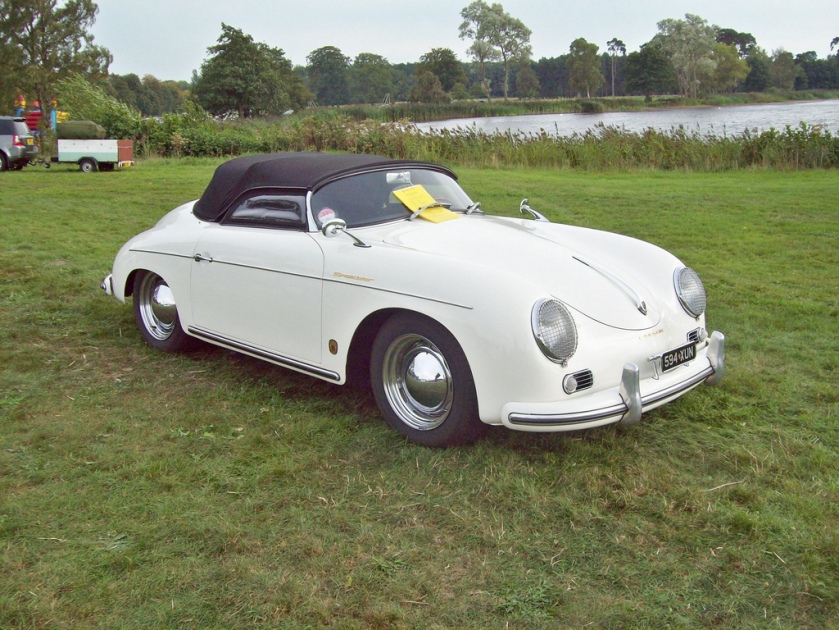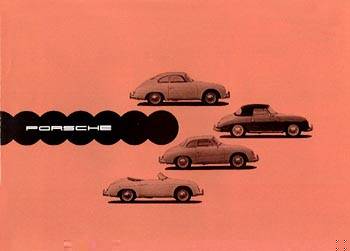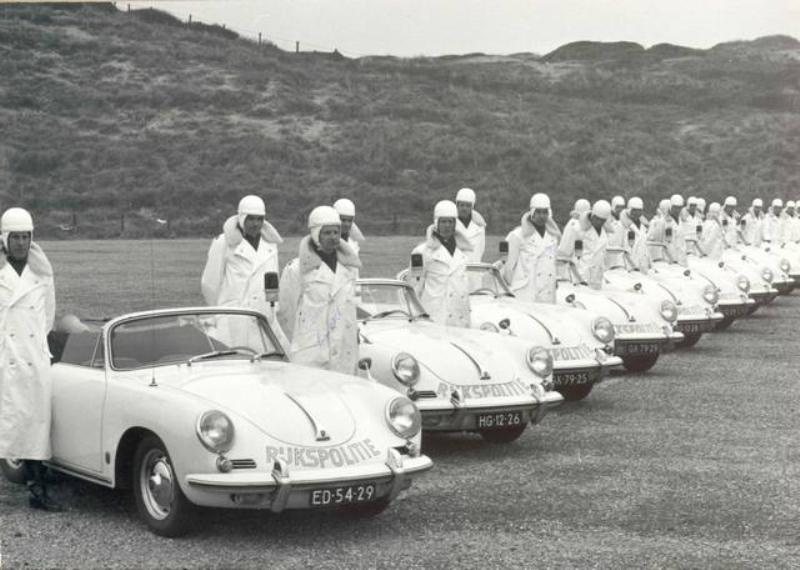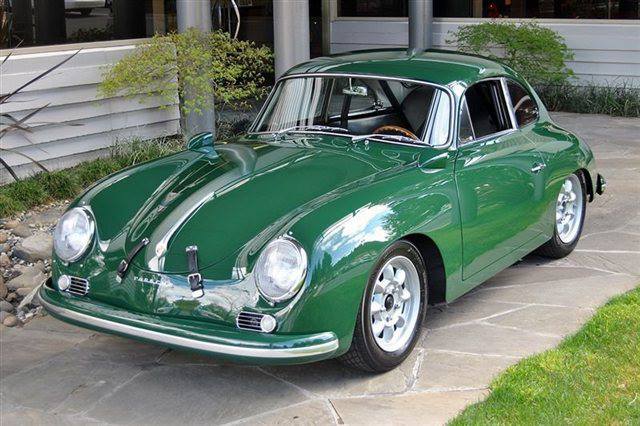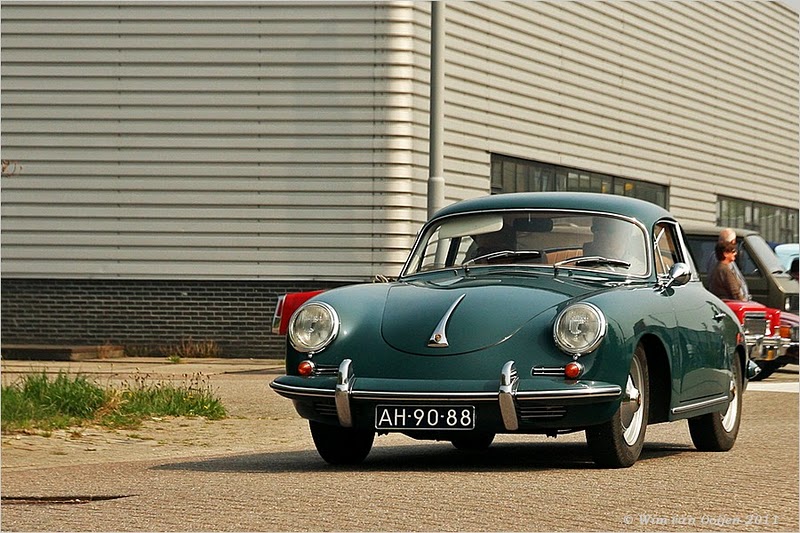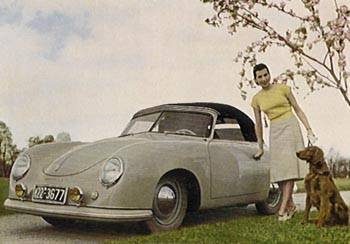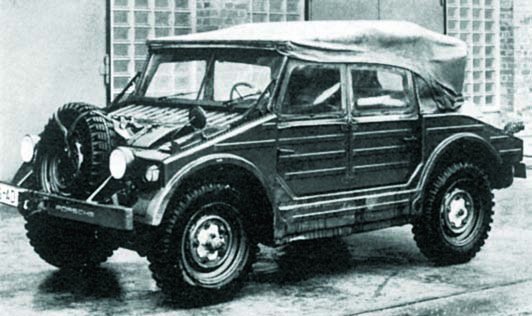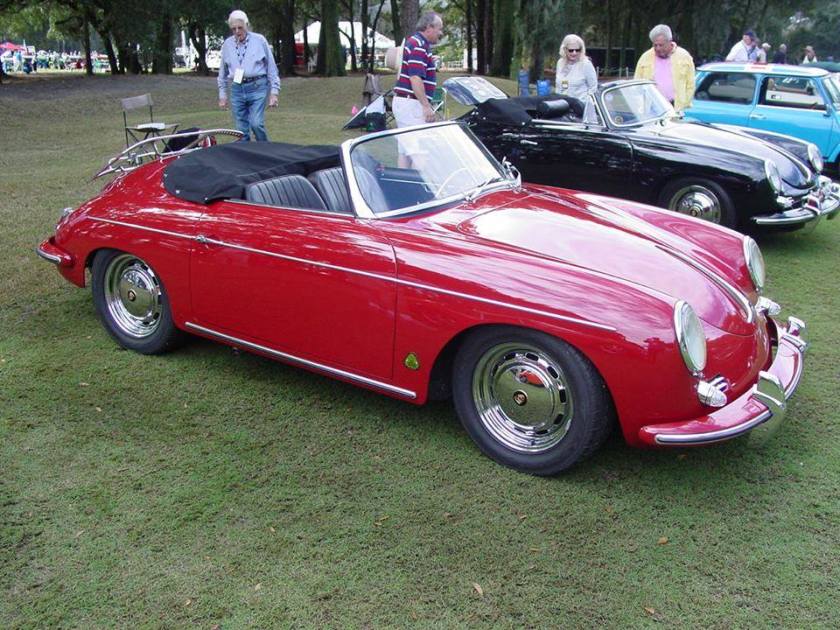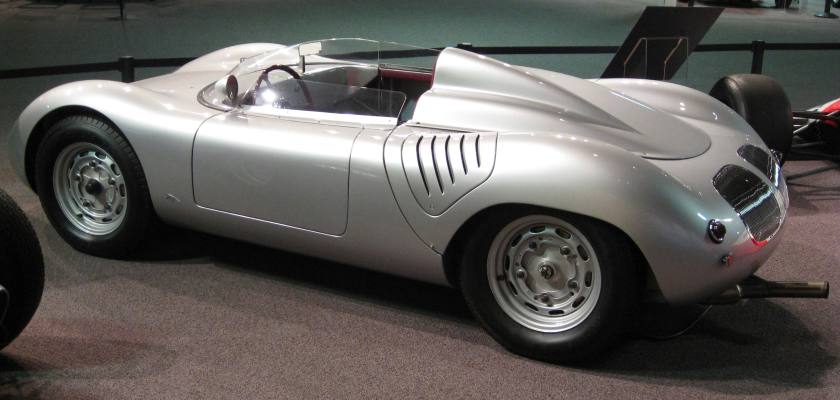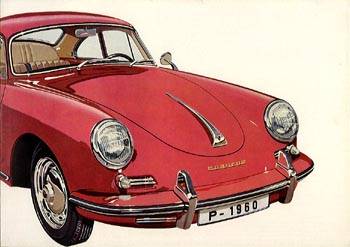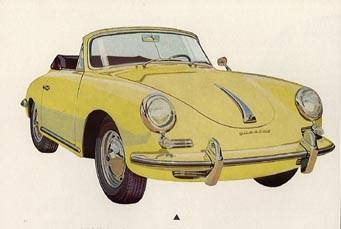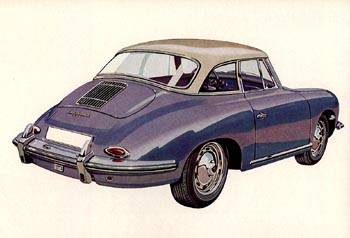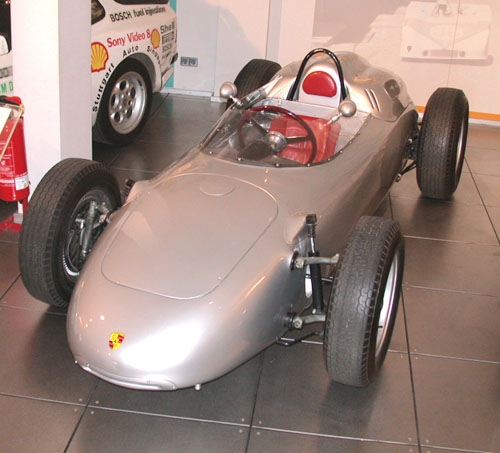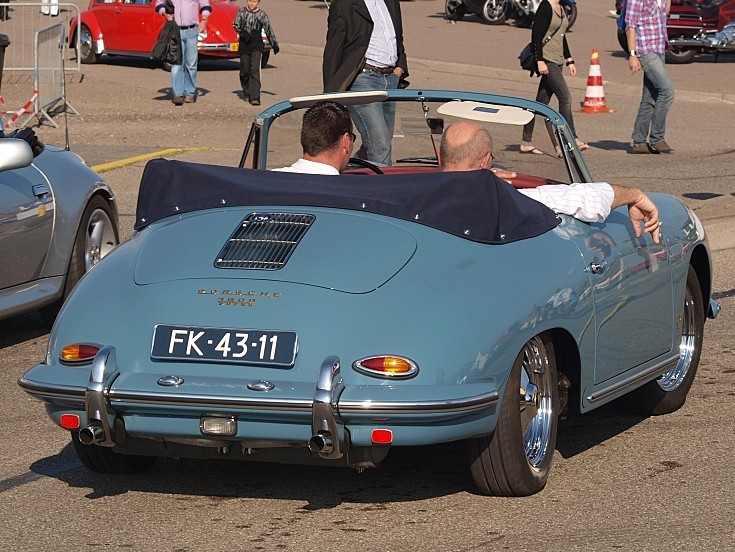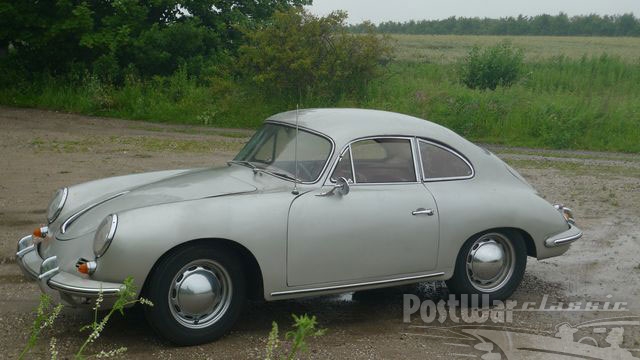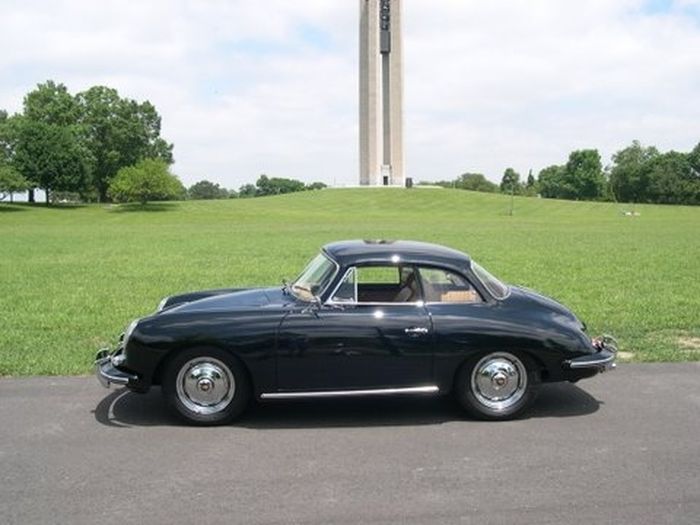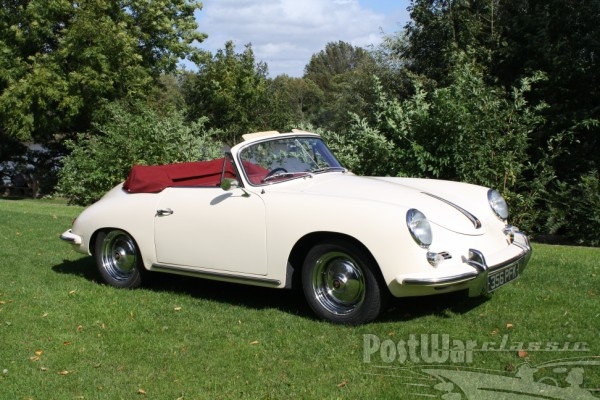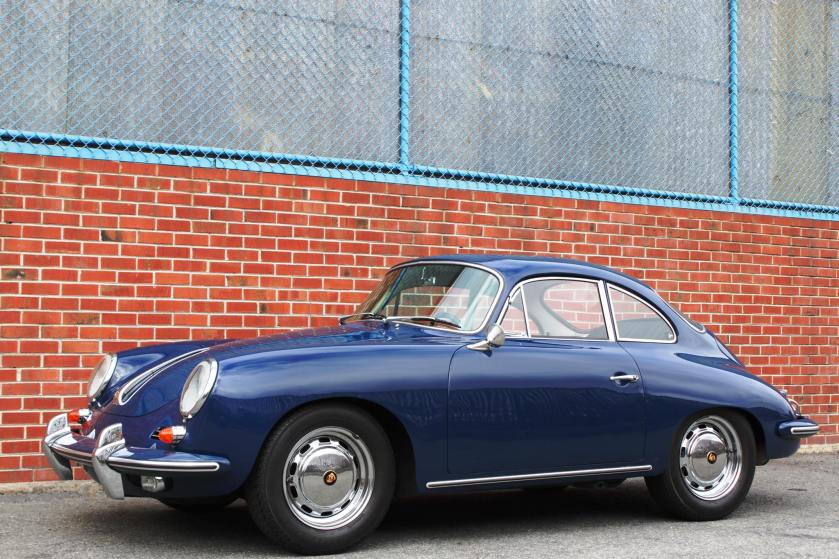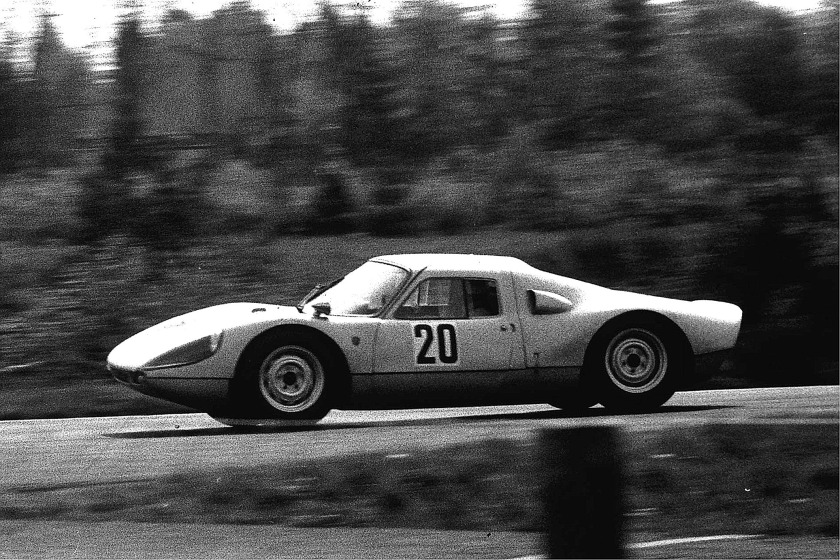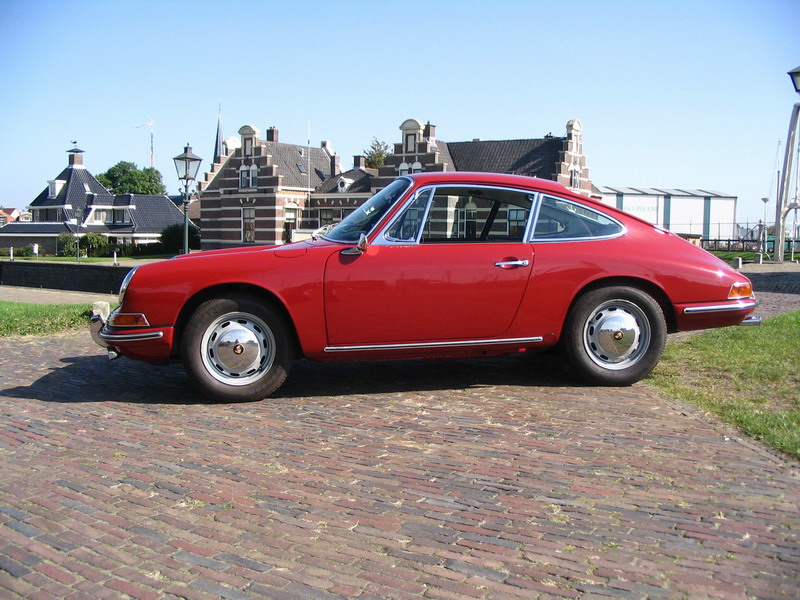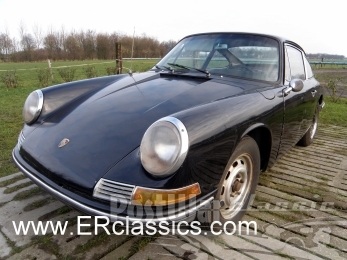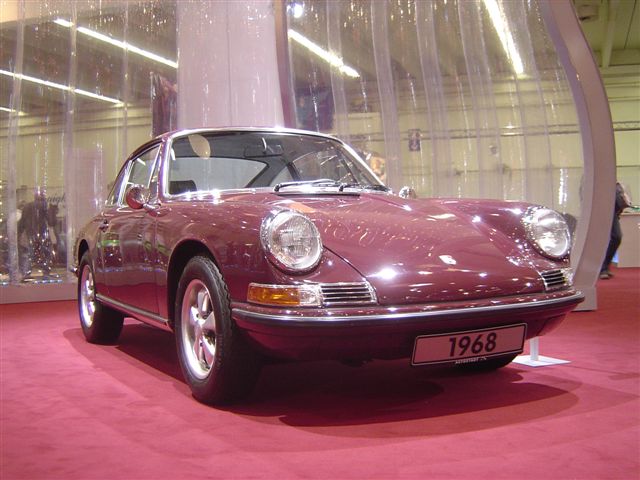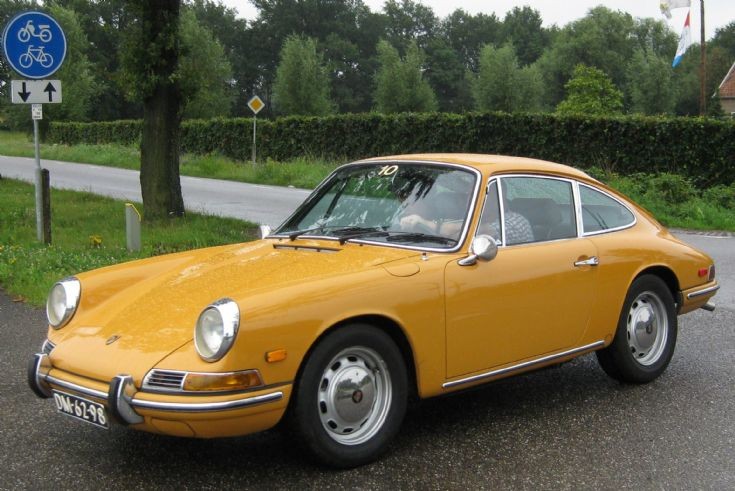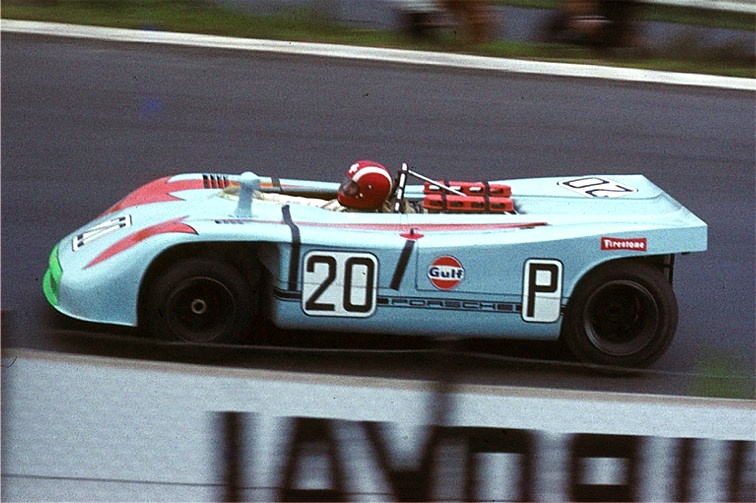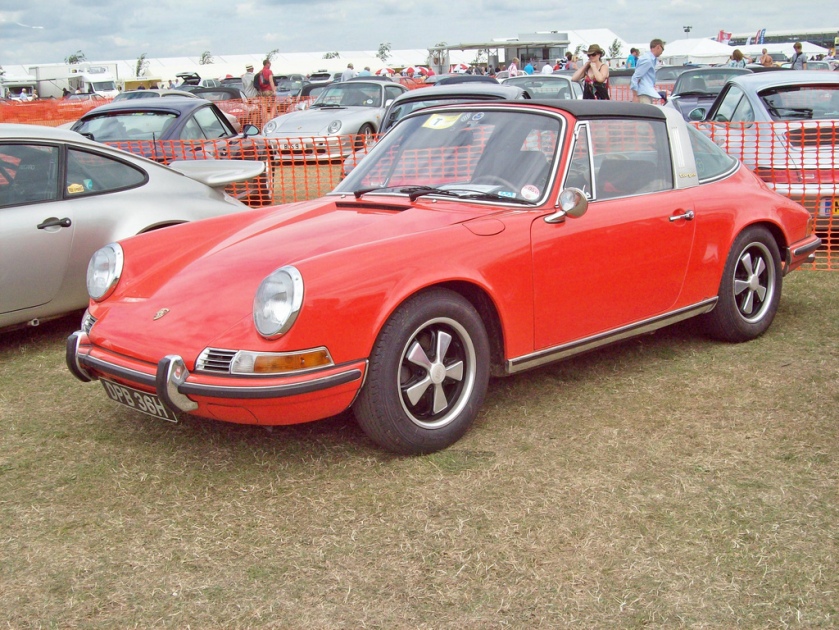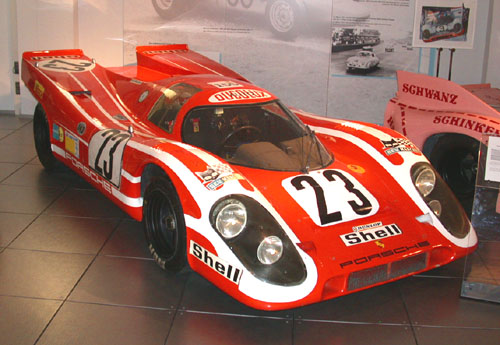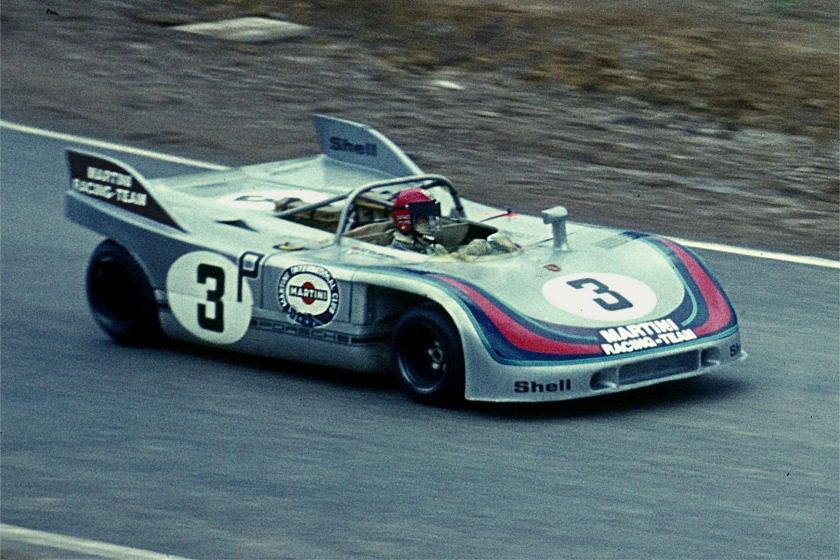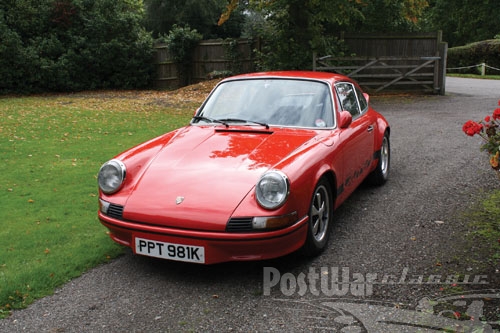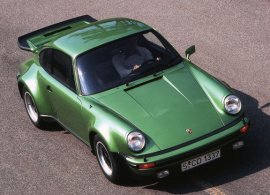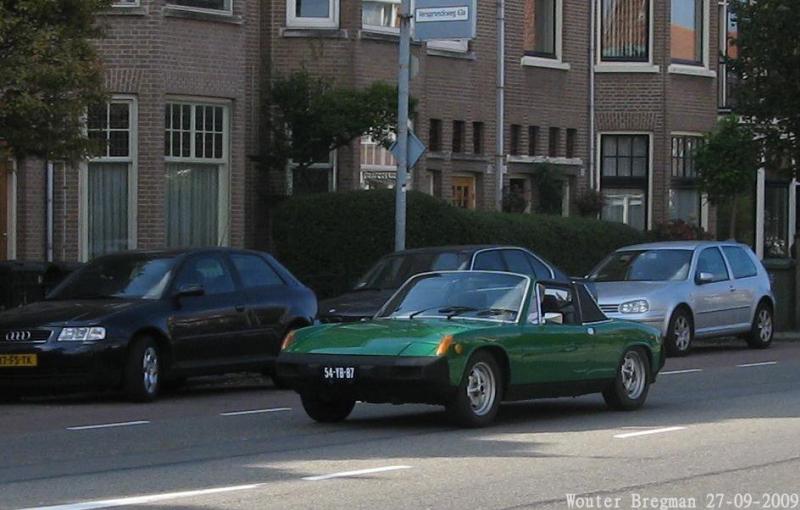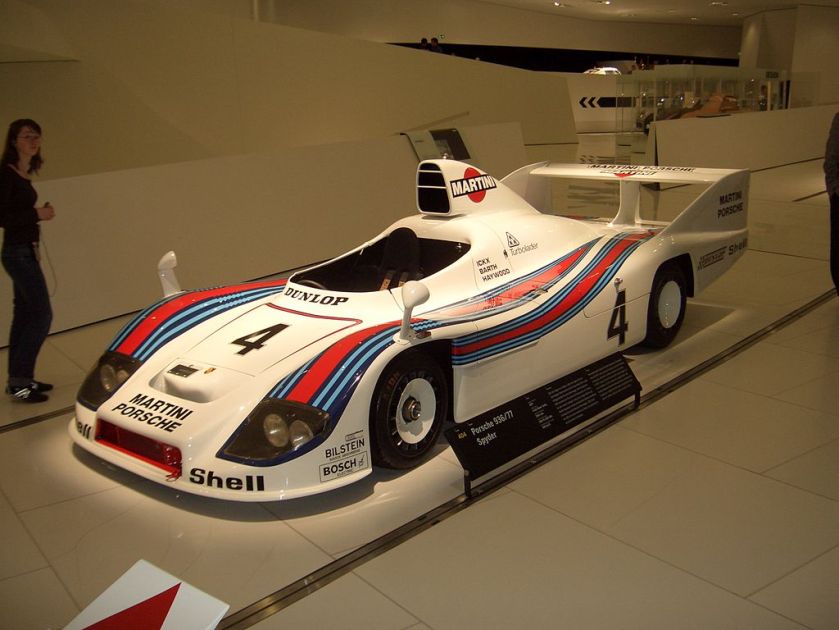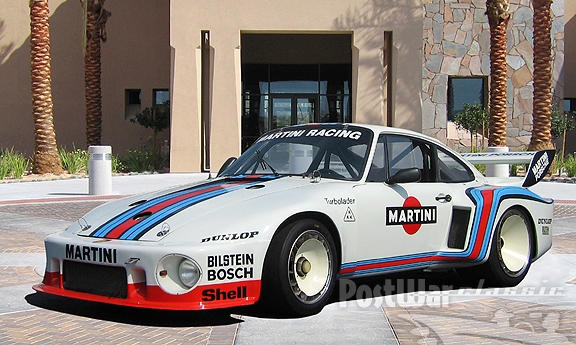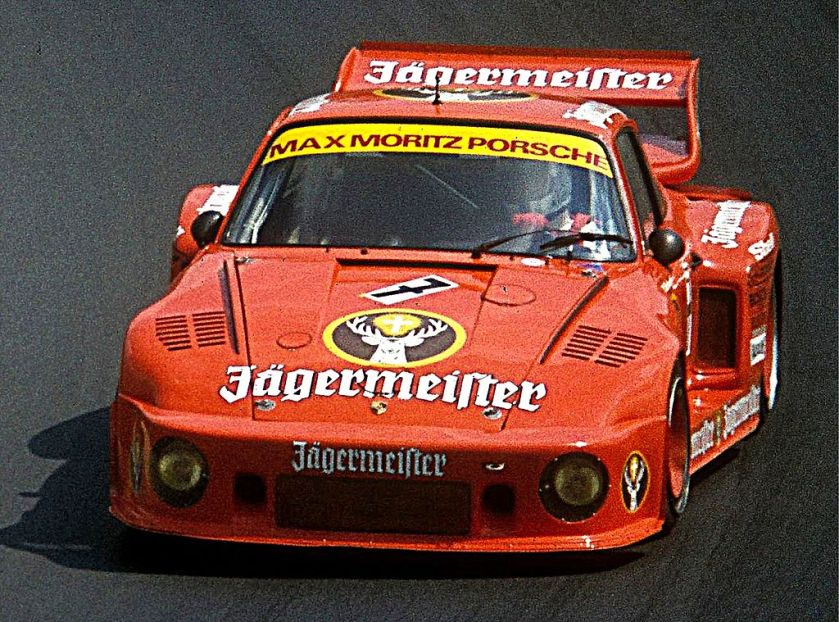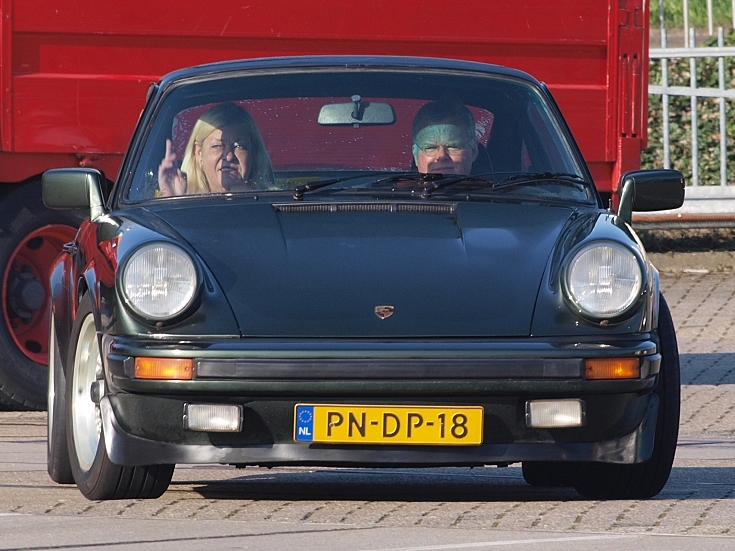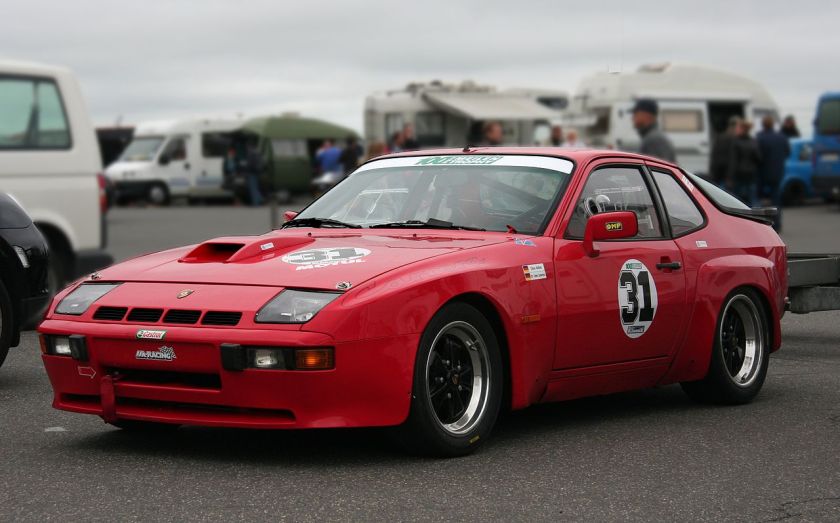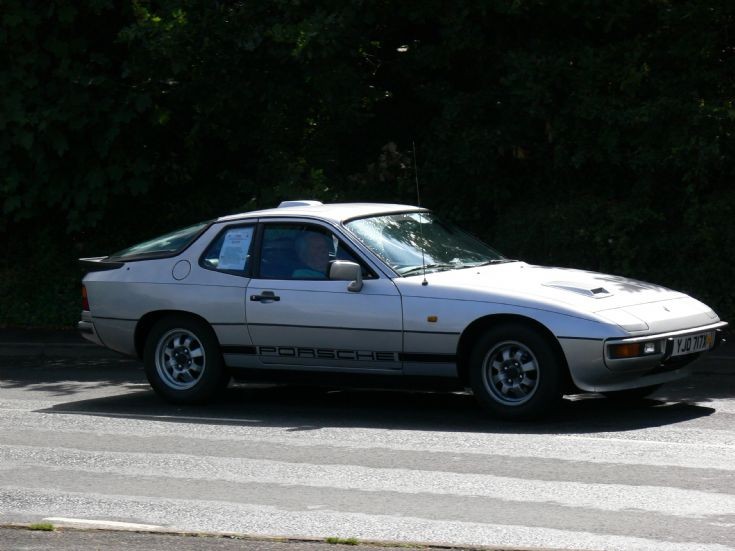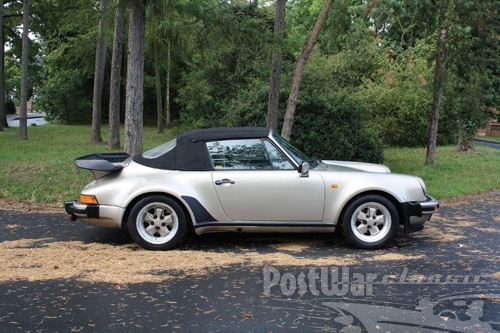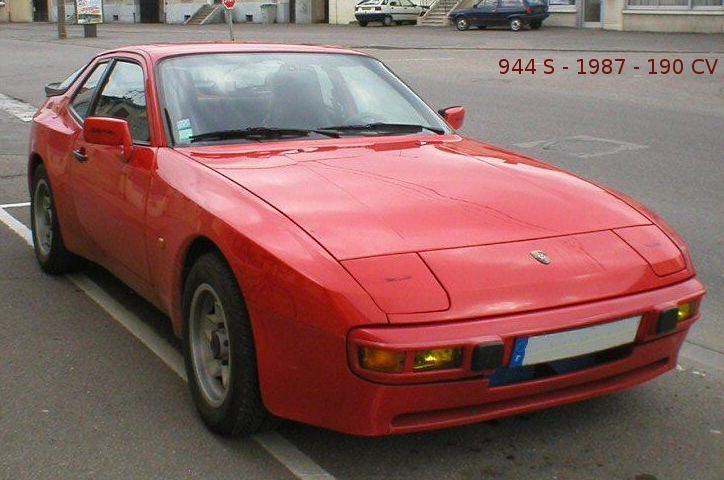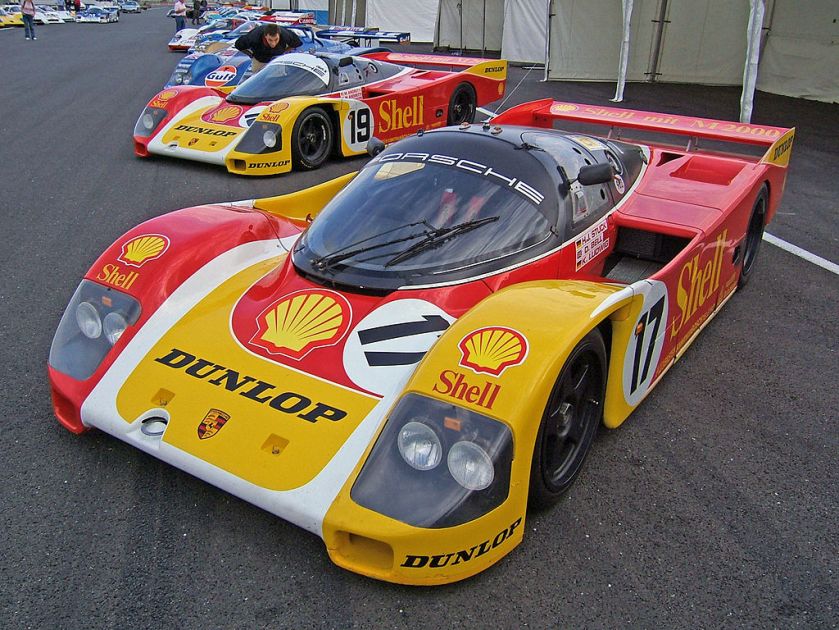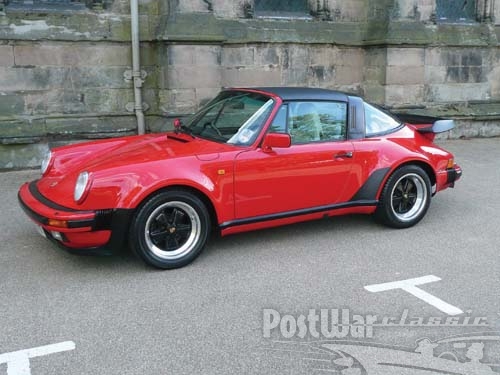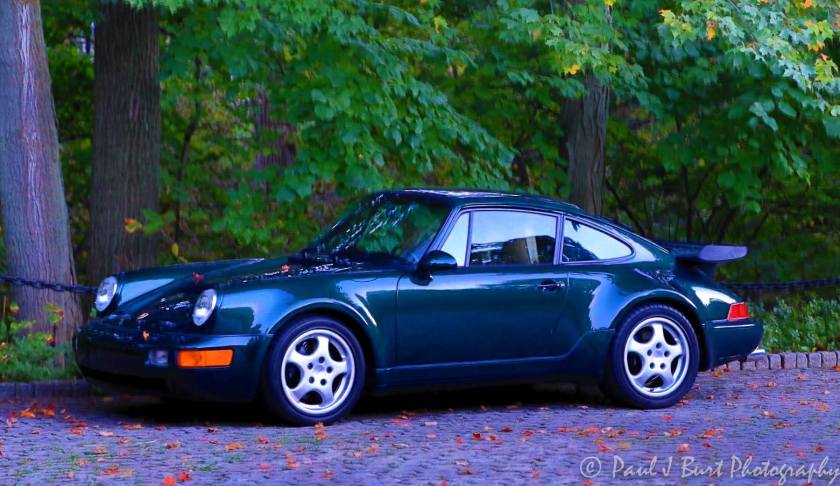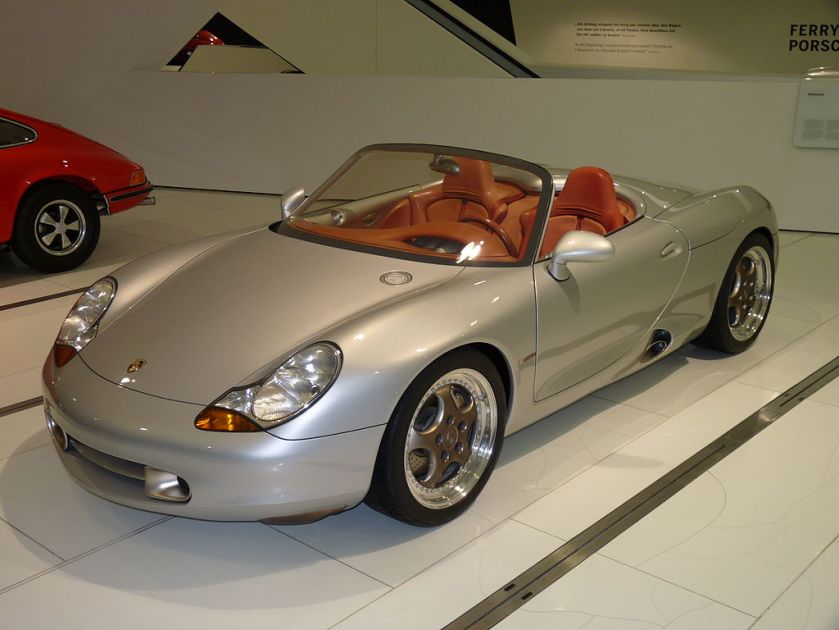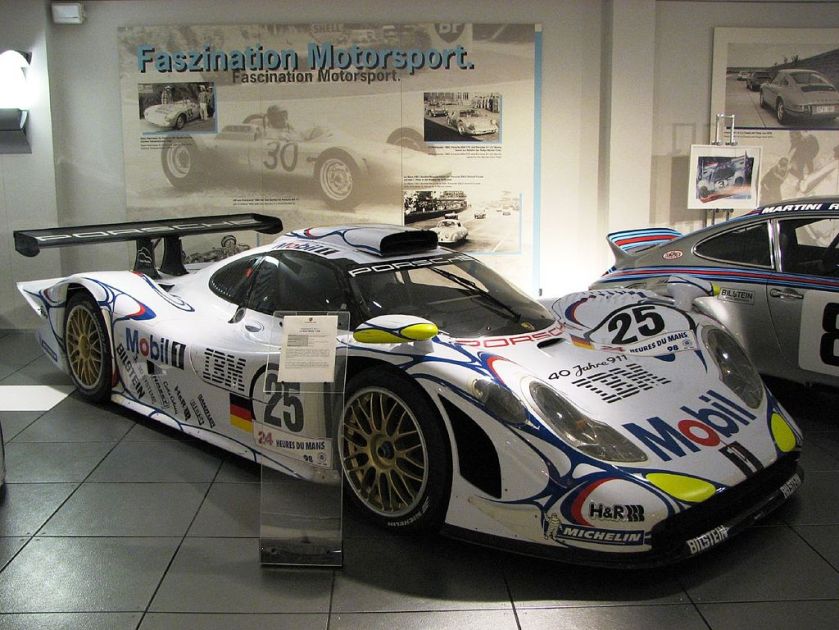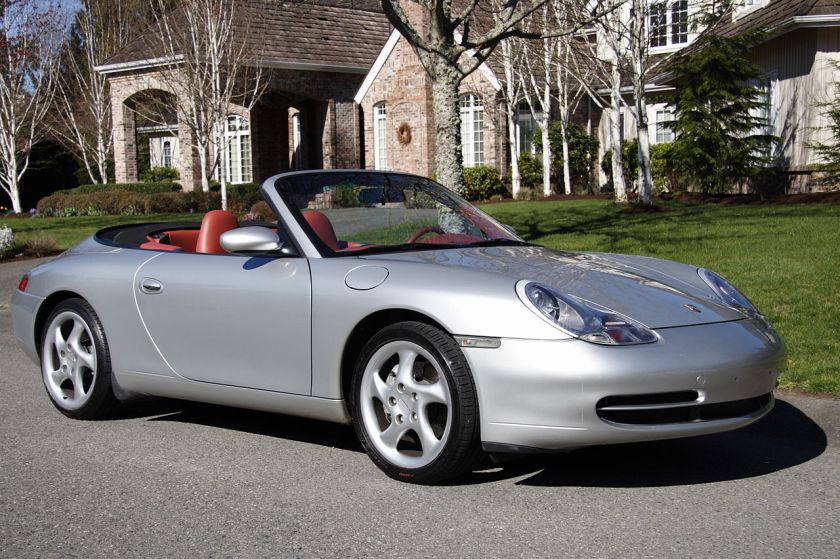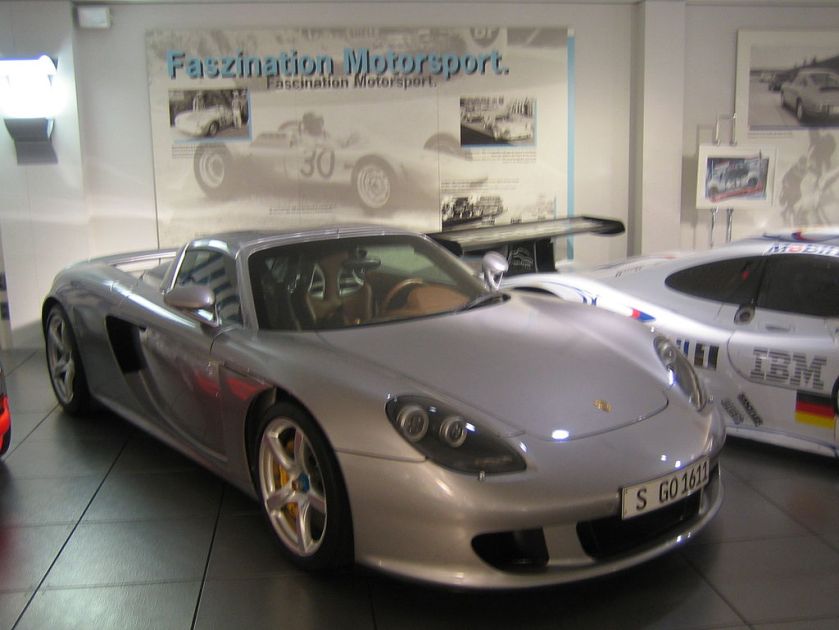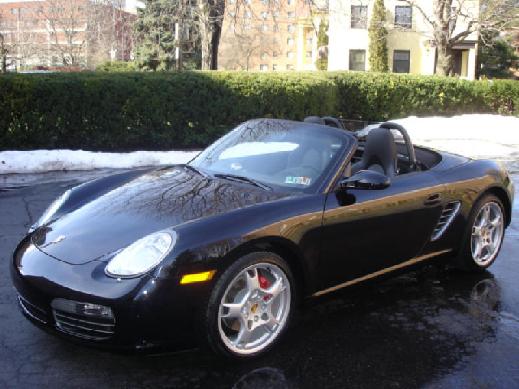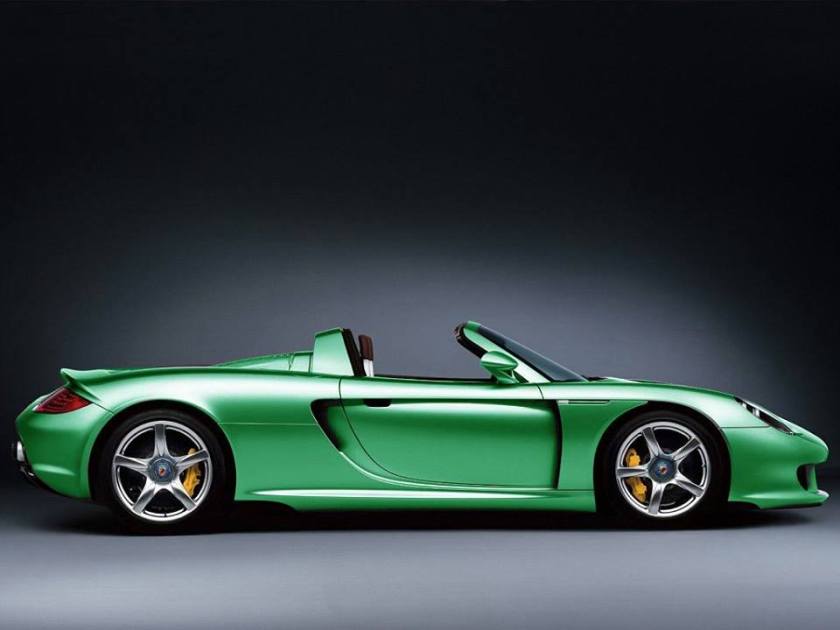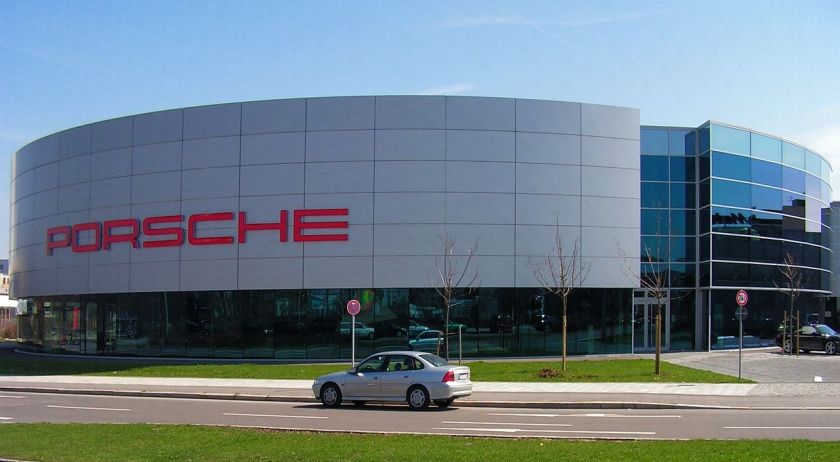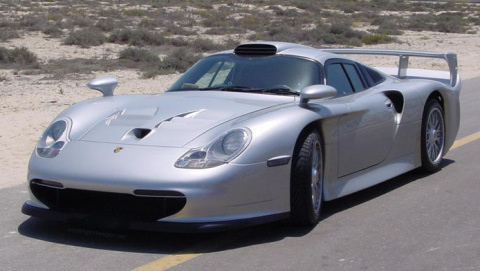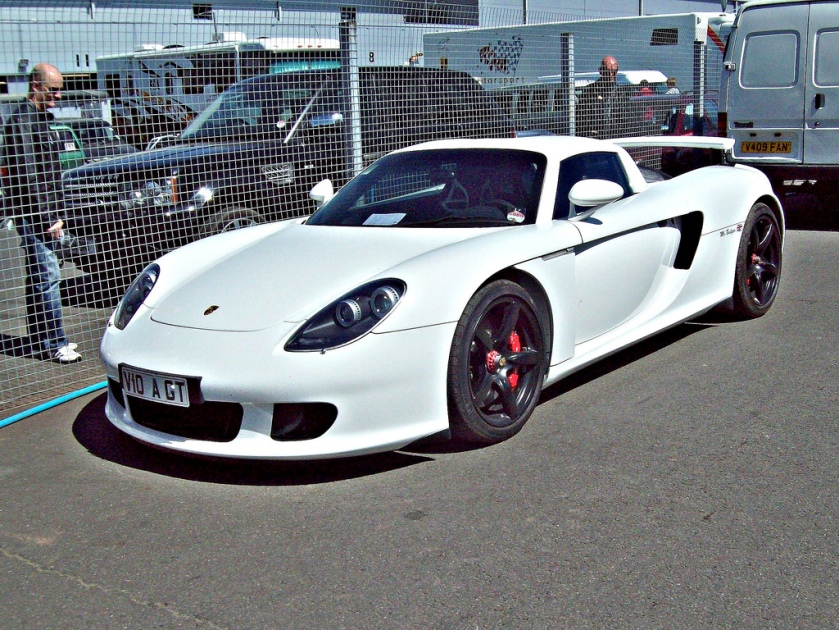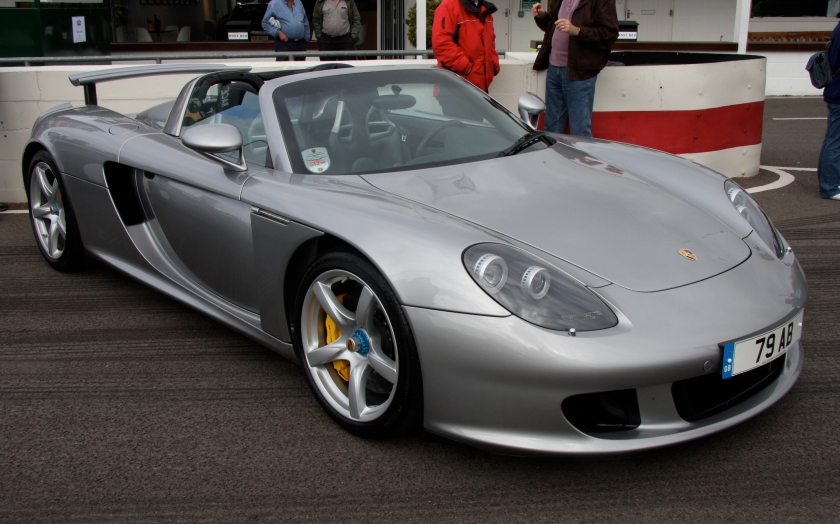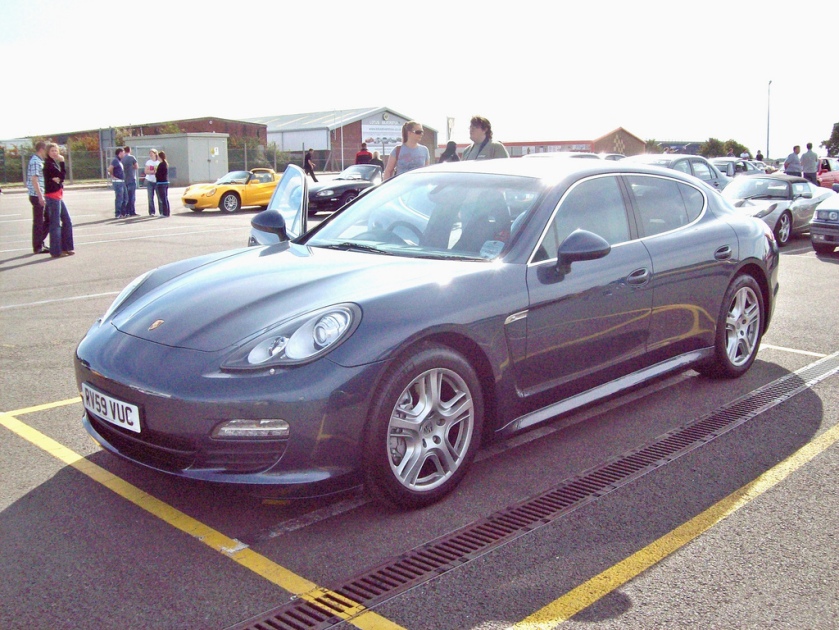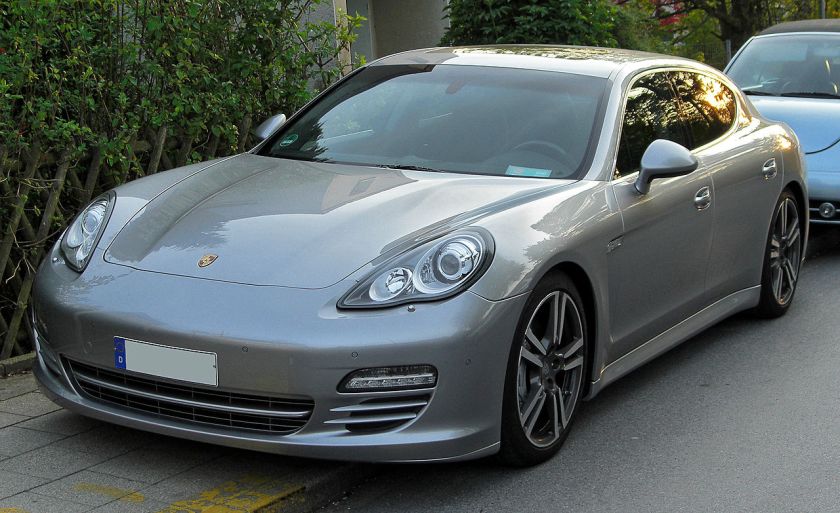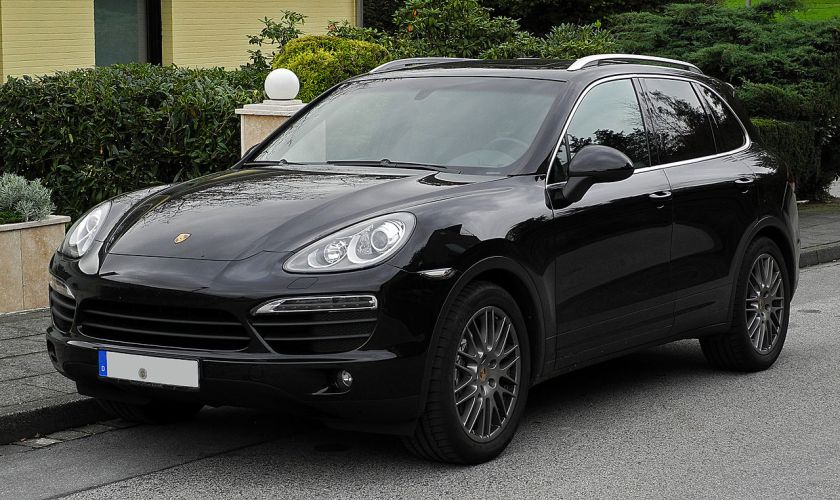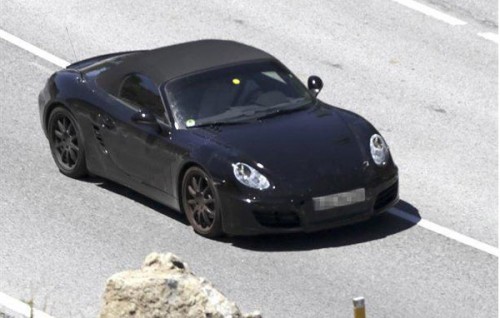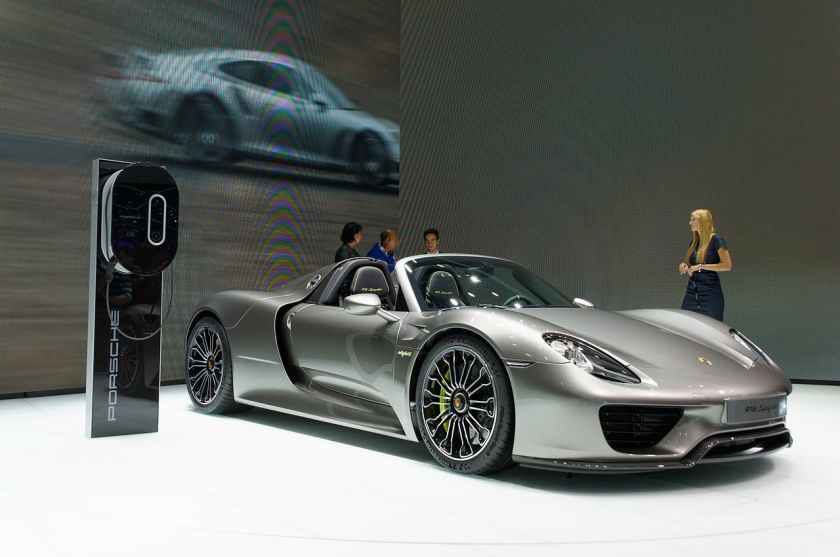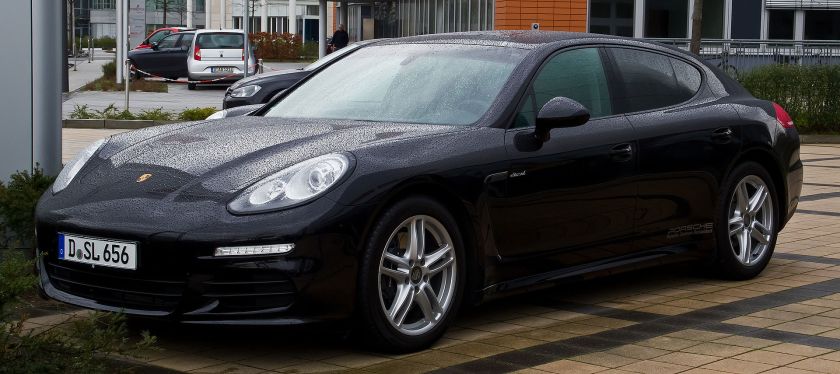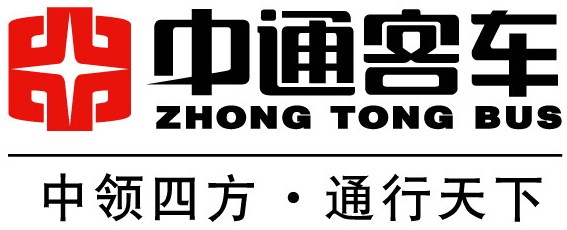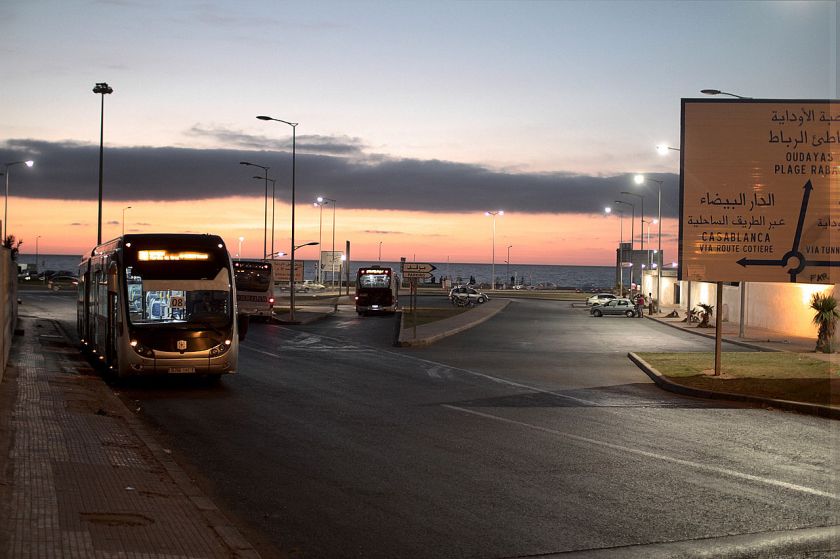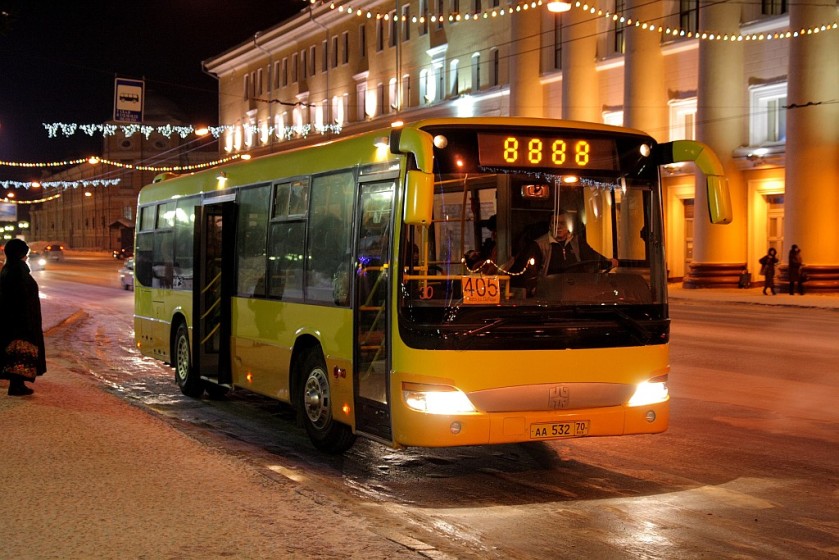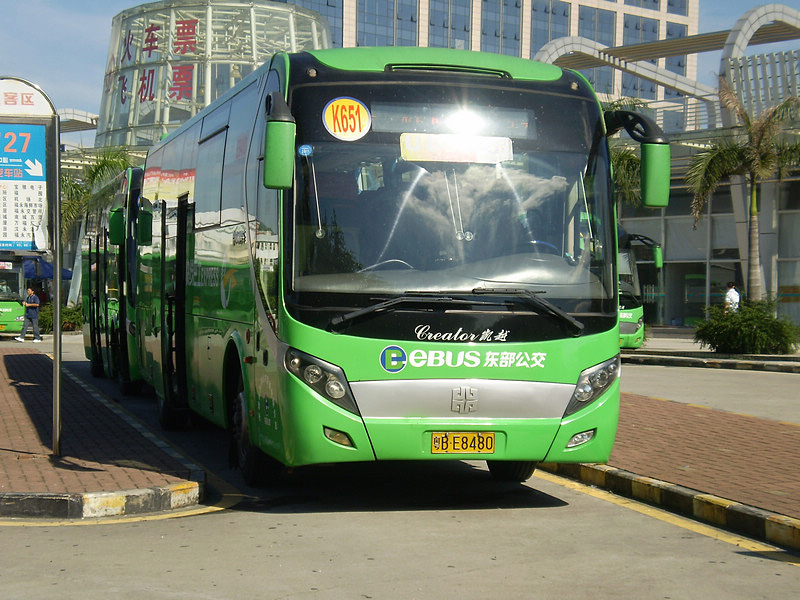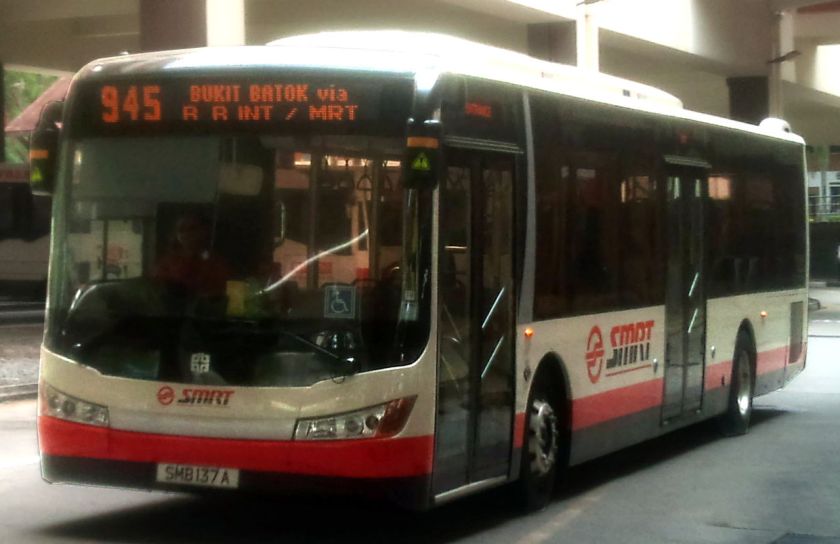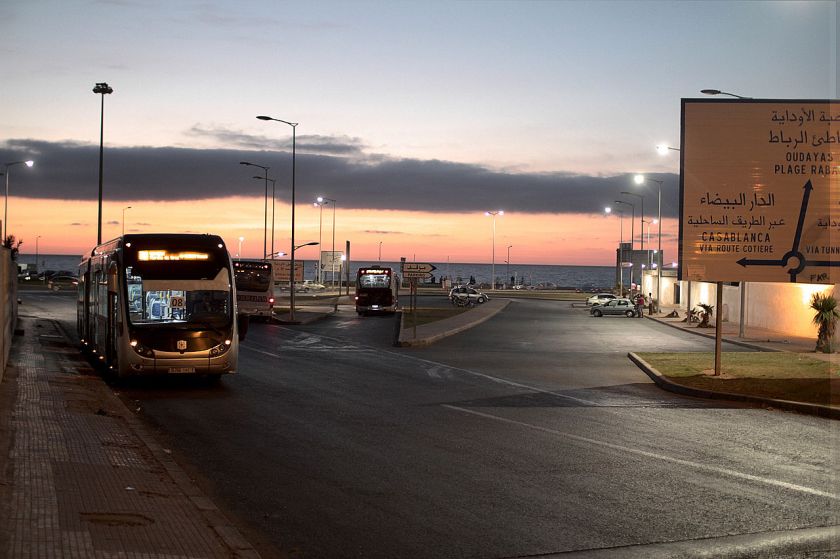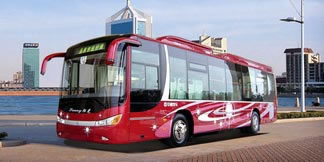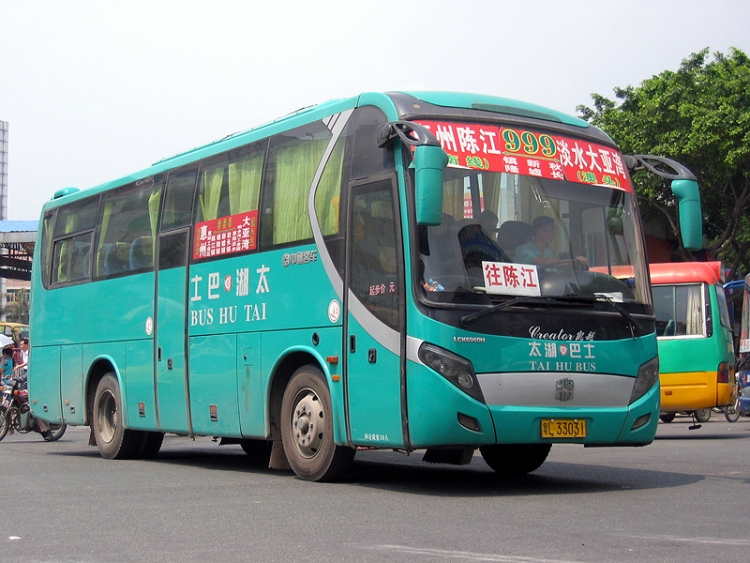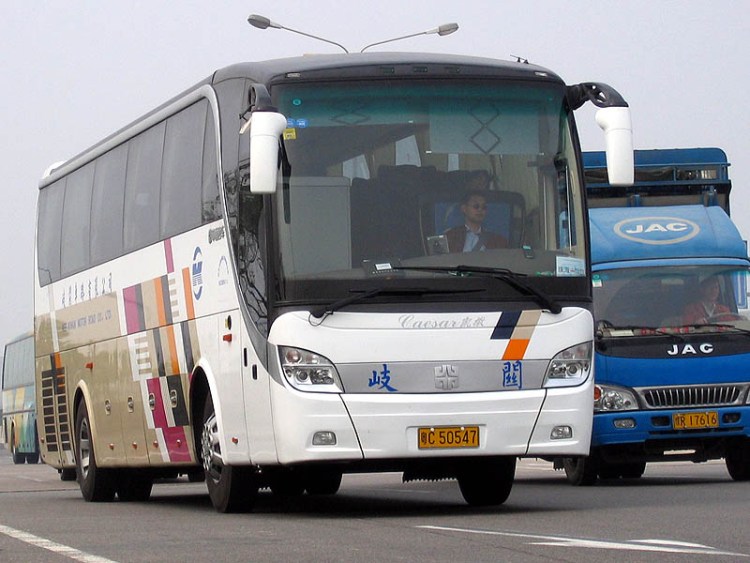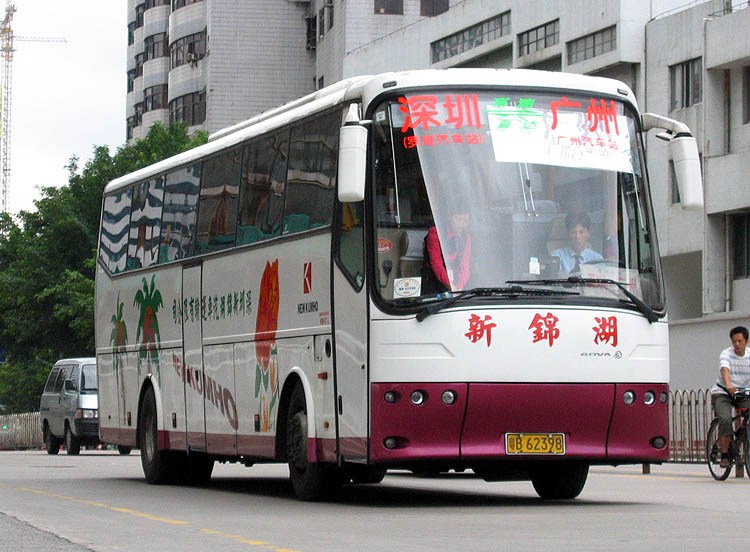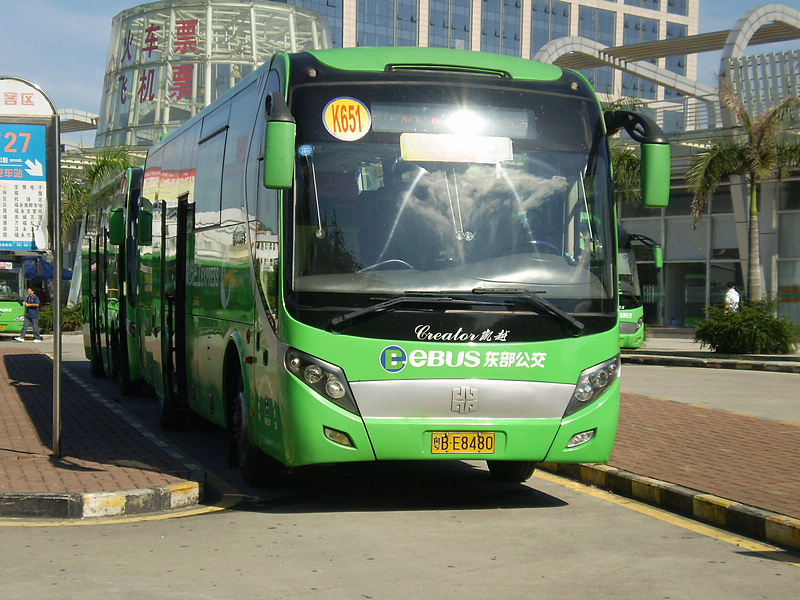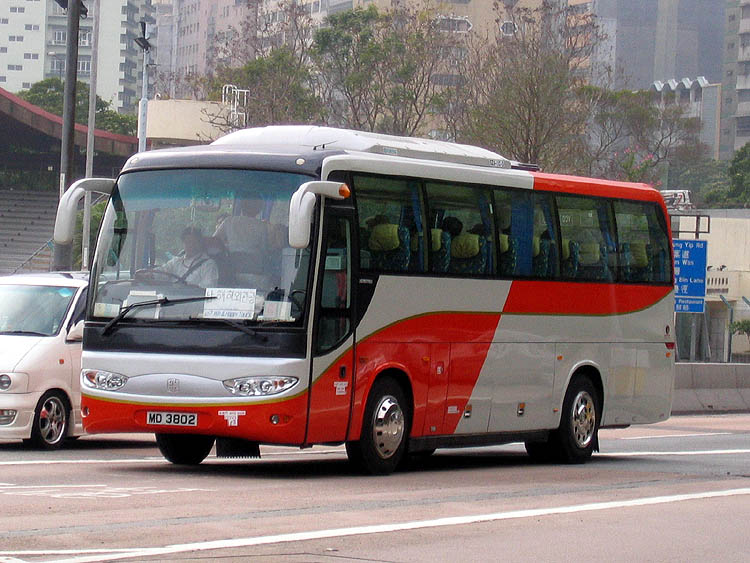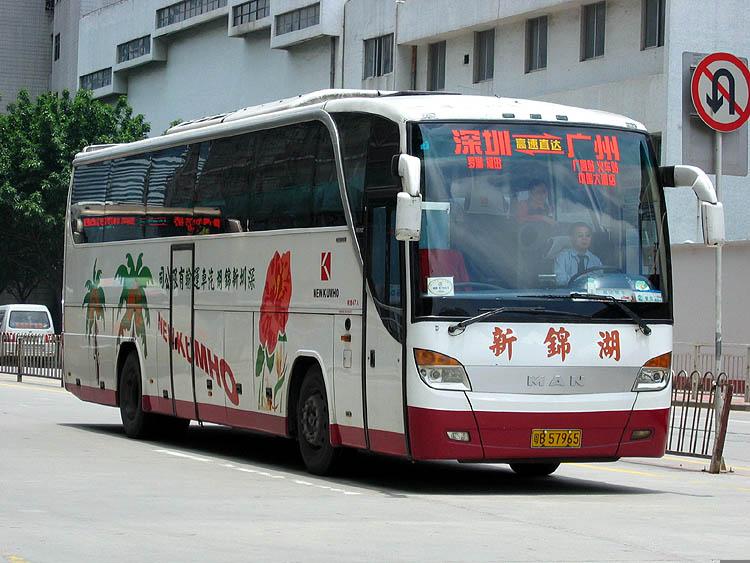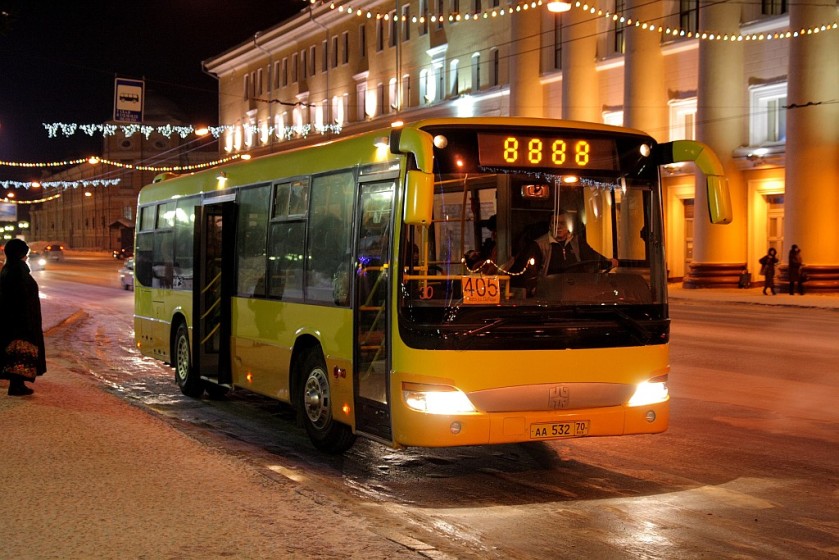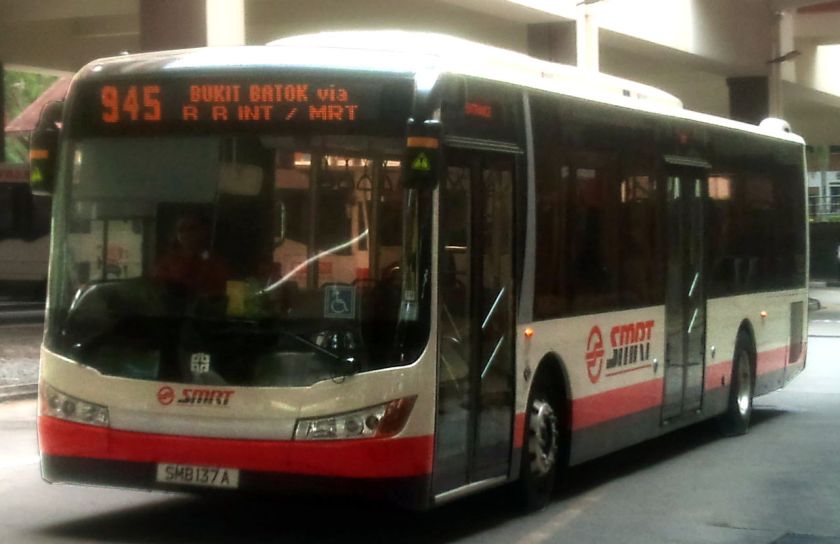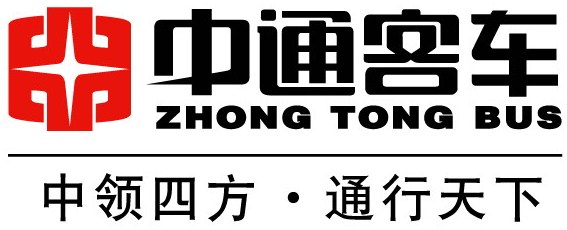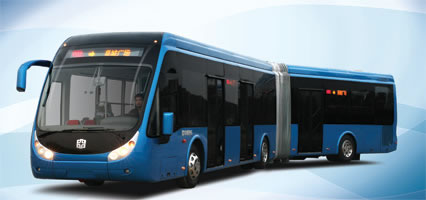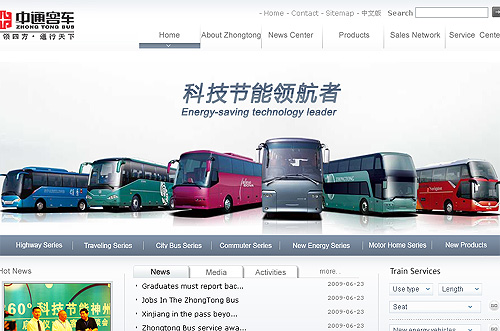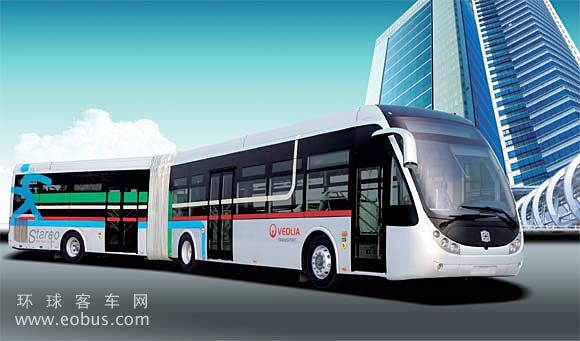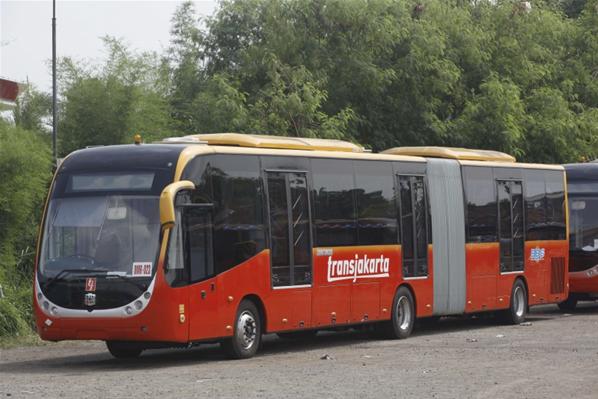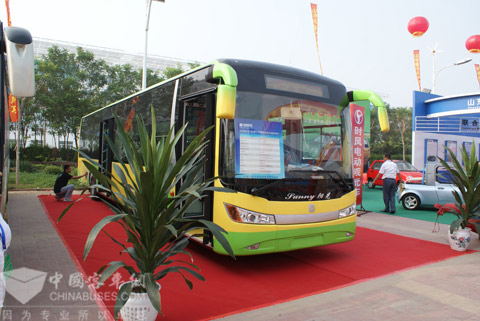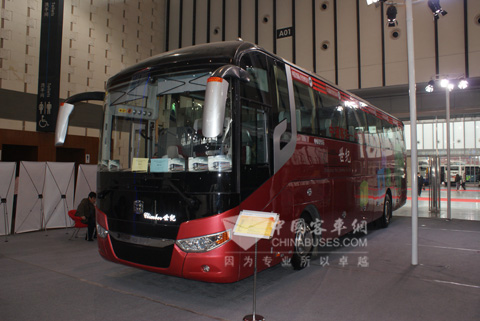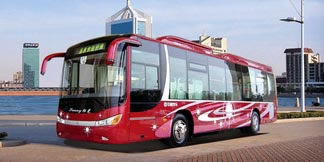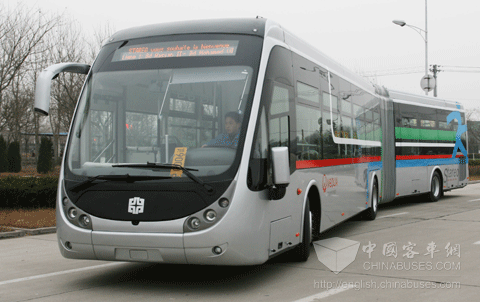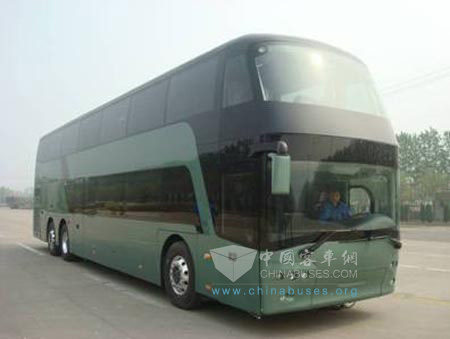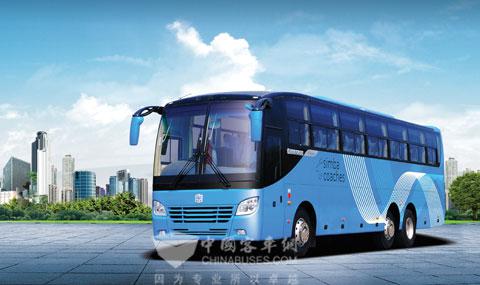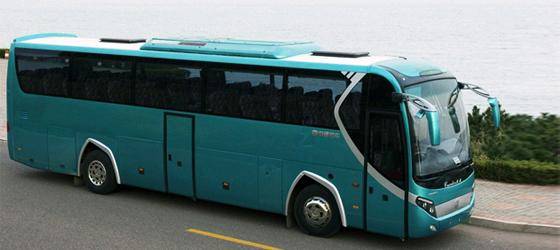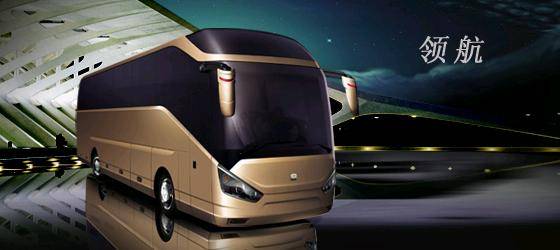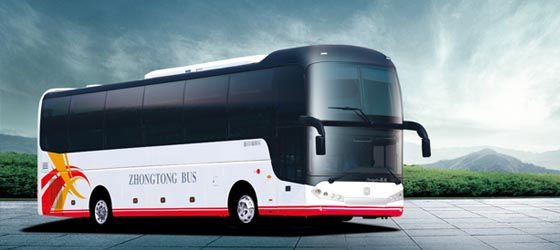History FIAT
part VII
2000-present
2001-present
Fiat 500L
500L
- 2001 Fiat Doblo
2001 Fiat Doblò
| Fiat Doblò | |
|---|---|
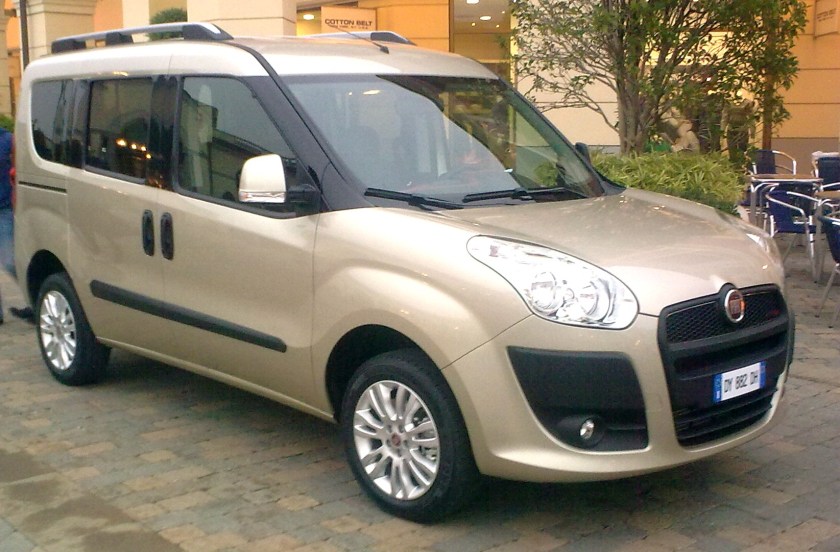 |
|
| Overview | |
| Manufacturer | Fiat |
| Production | 2000–present |
| Body and chassis | |
| Class | Panel van / leisure activity vehicle |
| Chronology | |
| Predecessor | Fiat Fiorino |
The Fiat Doblò is a panel van and leisure activity vehicle produced by Italian automaker Fiat since 2000. It was unveiled at the Paris Motor Show in 2000.
First generation (2000–present)
| First generation | |
|---|---|
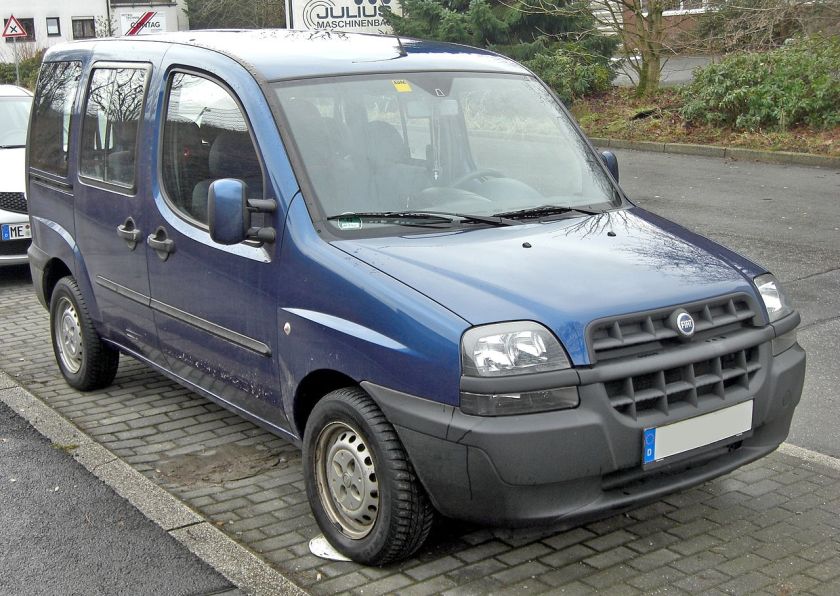 |
|
| Overview | |
| Also called | Fiat Panorama Pyongwha Ppeokkugi |
| Production | 2000–present |
| Assembly | Bursa, Turkey (Tofaş) Akçalar, Turkey (Karsan) Betim, Minas Gerais, Brazil (Fiat Automóveis) Naberezhnye Chelny, Russia (SeverstalAvto) Ho Chi Minh City, Vietnam (Mekong Auto) |
| Body and chassis | |
| Body style | 3-door panel van 4-door panel van 5-door panel van 5-door leisure activity vehicle |
| Related | Fiat Punto Fiat Palio Fiat Albea Fiat Siena Fiat Strada Lancia Y |
| Powertrain | |
| Engine | 1.2L Fire I4 petrol 1.4L Fire I4 petrol 1.6L I4 petrol 1.6L Natural Power I4 CNG 1.8L E.torQ I4 Flexfuel 1.3L Multijet I4 diesel 1.9L D I4 diesel 1.9L JTD I4 diesel 1.9L Multijet I4 diesel |
| Transmission | 5-speed manual 6-speed manual |
| Dimensions | |
| Wheelbase | 2,583 mm (101.7 in) 2,963 mm (116.7 in) (Doblò Maxi) |
| Length | 4,158 mm (163.7 in) 4,253 mm (167.4 in) (from 2005) 4,633 mm (182.4 in) (Doblò Maxi) 4,354 mm (171.4 in) (Adventure) |
| Width | from 1,715 mm (67.5 in) to 1,722 mm (67.8 in) 1,763 mm (69.4 in) (Adventure) |
| Height | from 1,818 mm (71.6 in) to 1,831 mm (72.1 in) 2,086 mm (82.1 in) (high roof) 1,957 mm (77.0 in) (Adventure) |
It was first launched to the public in the Netherlands, and received the “2006 International Van of the Year” award by an international jury from 19 countries. In Singapore, a 1.4-litre LAV variant is marketed as the Fiat Panorama in 5 and 7-seater versions.
The Doblò carries a payload of up to 730 kg (1,609 lb), with an interior volume of 3.2 cubic metres (110 cu ft). The Doblò uses platform of Fiat Palio Station Wagon.
It is manufactured by Fiat’s Tofaş subsidiary factory in Bursa, Turkey, in Brazil since 2002 and in Russia and Vietnam. Turkish models have an engine range that includes a 1.4-litre petrol, a 1.9-litre MultiJet, and a 16-valve 1.3-litre MultiJet.
In North Korea Pyonghwa Motors produces Doblò branded as its own name Ppeokkugi.
The facelift version came in autumn 2005, and was restyled with modifications to the front and rear light groups, and the total design of the front part.
Brazilian Doblò
Launched in 2002 the Brazilian Doblòs were initially available with two 16-valve petrol engines, a 1.3-litre Fire and a 1.6-litre Torque. From 2004 to 2009, the only engine available in Brazil was an 8-valve 1.8-litre Powertrain, supplied by General Motors do Brasil. This engine was produced initially in a petrol version and later as flex fuel.
In 2003 Fiat Brazil introduced an off-road 4×2 version called Fiat Doblò Adventure, also with the straight-4 Powertrain 1800 cc engine. It has revised exterior look with bigger bumpers and mouldings and raised ride height 6 cm (2.4 in) and spare wheel on the rear. In 2009, the whole Adventure line (Doblò, Idea, Strada and Palio Weekend) was equipped with a locking differential. The line was rebadged as Adventure Locker. Only in the 2010 model, the Brazilian Doblò and the Doblò Adventure were updated with the 2005 European facelift. Besides the 1.8-litre Powertrain, Doblò is now equipped with a 1.4-litre Fire flex engine. In the 2011 model, the 8-valve 1.8-litre Powertrain engine was replaced by the brand new 16-valve 1.8 litre E-Torq engine, produced by Fiat Powertrain Technologies.
Engines
2000–2006
| Model | ||
|---|---|---|
| 1.2 | petrol | 65 PS (48 kW; 64 hp) |
| 1.6 natural power | natural gas | 92 PS (68 kW; 91 hp) |
| 1.9 D | diesel | 69 PS (51 kW; 68 hp) |
| 1.9 JTD | diesel | 105 PS (77 kW; 104 hp) |
2006–2009
| Model | Type | Power |
|---|---|---|
| 1.4 | petrol | 77 PS (57 kW; 76 hp) |
| 1.6 Natural Power (CNG) | Natural gas | 92 PS (68 kW; 91 hp) |
| 1.3 16v Multijet | diesel | 75 PS (55 kW; 74 hp) |
| 1.9 Multijet | diesel | 105 PS (77 kW; 104 hp) |
| 1.9 16v Multijet | diesel | 120 PS (88 kW; 120 hp) |
Electric versions
Micro-Vett Fiat Doblò has three battery versions:
- Go Green, an 18 kWh Altairnano lithium-ion NanoSafe battery pack. The battery pack can be fully recharged in less than ten minutes using AeroVironment´s high voltage, 125 kW rated, rapid charging system.
- a 43 kWh lead-acid battery pack, providing a range of 150 km (93 mi) in the urban duty cycle on a single charge; recharging takes 5–8 hours
- 60 x 200 AH 3.6V lithium modules; Battery life: 1000 cycles at 80% DOD / 2000 cycles at 70% DOD
The vehicle uses a 30 kW (60 kW peak) motor from Ansaldo Electric Drives, that gives 120 km/h (75 mph) top speed.
On October 2, 2007, a 60 day demonstration of the All-Electric Fiat Doblo was begun. The Electric engine is powered by a custom 18 kWh Altairnano high performance NanoSafe(R) battery pack, traveled 300 kilometers (190 mi) in an urban delivery circuit. The custom battery pack was fully recharged in less than ten minutes a total of three times using AeroViroments’ high voltage, 125 kW rated, rapid charging system. The vehicle will be driven an estimated total of 7,500 kilometres (4,700 mi) during the 60-day demonstration period, which translates to an annual equivalent use of 45,000 kilometres (28,000 mi).
Second generation (2009–present)
| Second generation | |
|---|---|
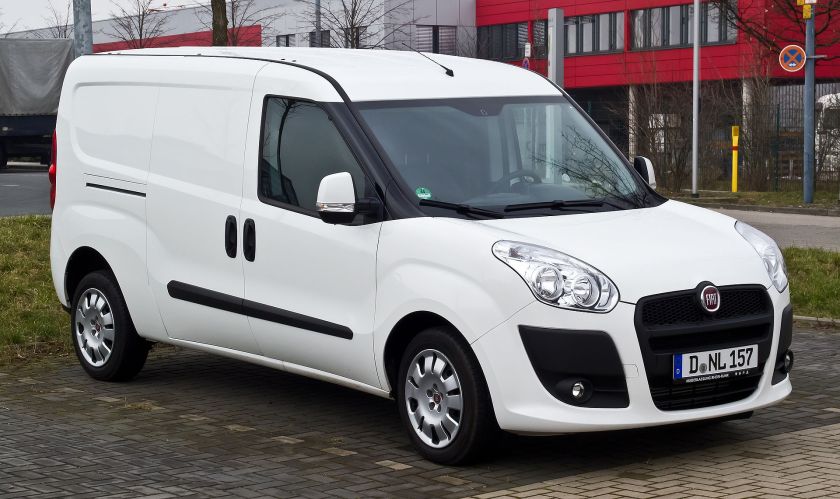 |
|
| Overview | |
| Also called | Opel Combo Fiat Doblò Work Up Fiat Pratico Vauxhall Combo Ram ProMaster City (US and Canada, from 2015) |
| Production | 2009–present |
| Assembly | Bursa, Turkey (Tofaş) |
| Body and chassis | |
| Body style | 2-door chassis cab 2-door pick-up truck 3-door panel van 4-door panel van 5-door panel van 5-door leisure activity vehicle |
| Platform | GM Fiat Small Wide platform |
| Related | Fiat Fiorino Fiat Grande Punto Fiat Linea Opel Corsa D Opel Meriva B |
| Powertrain | |
| Engine | |
| Transmission |
|
| Dimensions | |
| Wheelbase | 2,755 mm (108.5 in) (SWB)
3,105 mm (122.2 in) (LWB) |
The all new Doblò was launched in early 2010 and is built in Turkey by Tofaş. The 2010 Doblò uses new platform which has 2,755-millimetre (108.5 in) wheelbase, 790-litre (28 cu ft) luggage compartment, and low CO2 emissions (129 g/km with the 1.3 Multijet 90 PS (66 kW; 89 hp) engine). The Doblò is also sold by General Motors European Opel and Vauxhall brands as Combo.
As of July 2011 the Doblò is available as a pickup called Fiat Doblò Work Up or Fiat Pratico in Turkey. There is also a raised roof version, as well as an extended wheelbase van called the “Doblò Cargo Maxi”. These two features are combined for the Fiat Doblò Cargo XL, a high-roofed, long wheelbase panel van model with a one-tonne payload, equipped with the 105 hp (78 kW) 1.6 litre Multijet common rail diesel. The XL, which can carry as much as the bigger and more expensive Scudo, was presented in the UK in May 2013. In other markets the XL appeared in 2012, and it is available with all diesel engines excepting the 1.3 and also the 1.4 T-Jet. There is also an XL Combi, with a 135 PS (99 kW) version of the 2.0 diesel.
Doblò EV
In February 2010, Tofaş have revealed their development activities on the All-Electric version of their Doblò 2010.
The vehicle itself was also been introduced to press in July 2010, as “The First Commercial Electrical Vehicle Developed in Turkey”. It has been also revealed that, Tofaş will be FIAT’s development pole for electric light commercial vehicles (LCV). In 1 Millionth Doblo ceremony, Doblo EV was tested by press and Turkish Minister of Industry and Commerce, Nihat Ergün.
2015 facelift
Introduced at the Hanover Motor Show, the 2015 Fiat Doblò receives a revised front end with new headlamps, grille, and front bumper, likely to coincide with the release of the Ram ProMaster City.
Ram ProMaster City
The Ram ProMaster City is an Americanised version of the Fiat Doblò. The ProMaster City will be built in the same plant in Turkey as the Doblo and imported to North America. To circumvent the chicken tax, only passenger vans will be imported into North America, with cargo vans being post-import conversions. Unlike the Doblò, passenger versions of the ProMaster City will have solid metal panels instead of glass in its rear quarters. The 2.4 L Tigershark engine matted to the 948TE 9-speed automatic transmission will be the sole powertrain available for the ProMaster City.
- 2001 Fiat Stilo
2001 Fiat Stilo
| Fiat Stilo | |
|---|---|
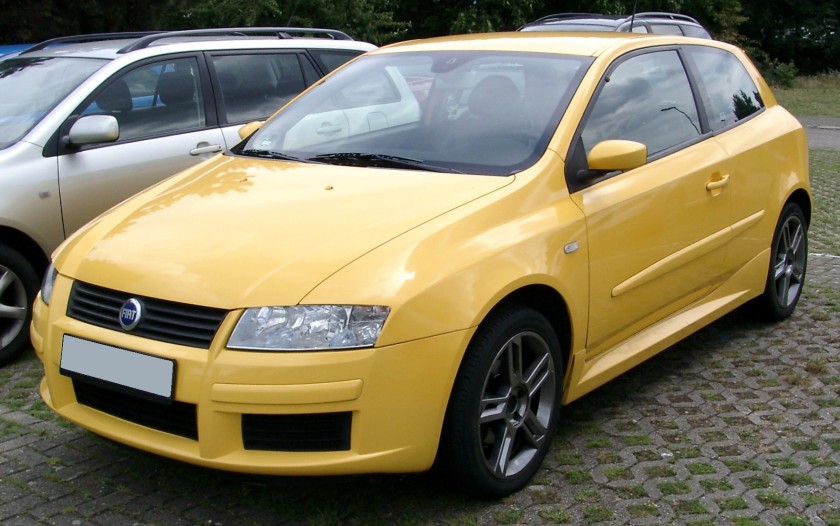 |
|
| Overview | |
| Manufacturer | Fiat |
| Production | 2001–2007 (Italy) 2003–2010 (Brazil) |
| Assembly | Cassino, Frosinone, Italy Betim, Minas Gerais, Brazil |
| Body and chassis | |
| Class | Small family car |
| Body style | 3-door hatchback 5-door hatchback 5-door estate |
| Layout | FF layout |
| Platform | Fiat Group C-platform |
| Related | Fiat Bravo (2007) Lancia Delta (2008) |
| Powertrain | |
| Engine | 1.2 L Fire I4 petrol 1.4 L Fire I4 petrol 1.6 L I4 petrol 1.6 L Ecotec I4 petrol 1.8 L I4 petrol 2.4 L I5 petrol 1.9 L JTD I4 diesel 1.9 L MultiJet I4 diesel |
| Transmission | 5-speed manual 6-speed manual 5-speed semi-auto (Selespeed) |
| Dimensions | |
| Wheelbase | 2,600 mm (102.4 in) |
| Length | 4,182 mm (164.6 in) (3-door) 4,253 mm (167.4 in) (5-door) 4,516 mm (177.8 in) (estate) |
| Width | 1,784 mm (70.2 in) (3-door) 1,756 mm (69.1 in) (5-door) 1,756 mm (69.1 in) (estate) |
| Height | 1,475 mm (58.1 in) (3-door) 1,525 mm (60.0 in) (5-door) 1,570 mm (61.8 in) (estate) |
| Curb weight | 1,090–1,320 kg (2,400–2,910 lb) |
| Chronology | |
| Predecessor | Fiat Bravo/Brava |
| Successor | Fiat Bravo |
The Fiat Stilo (Type 192) is a small family car available as a 3-door and a 5-door hatchback, as well as an estate (Fiat Stilo MultiWagon), produced by the Italian automaker Fiat Automobiles. The Stilo 3-door and 5-door were launched in 2001 to replace the Fiat Bravo/Brava, with the Stilo MultiWagon following in 2002. The all-new Fiat Bravo is the successor of the Stilo in most markets, however the 5-door Stilo continued to be manufactured in Brazil until late 2010, where it was replaced by the New Bravo.
Overview
Originally, its petrol engines were the 1242 cc DOHC 16 valve engine also powering the Punto and Lancia Ypsilon with an output of 80 PS (59 kW; 79 hp) combined with a 6 speed manual gearbox, a 103 PS, 1.6 L with a 5 speed manual gearbox (The 1.6 was also available with a 6 speed manual gearbox, but these are quite rare) a 133 PS, 1.8 L, again with a 5 speed manual gearbox and a 170 PS (125 kW; 168 hp), 5 cylinder, 2.4 L engine combined with Fiat’s Selespeed 5 speed semi-automatic gearbox, also used on the Alfa Romeo 147. An 8 valve, 1.9 JTD unit with 80 PS (59 kW; 79 hp), 100 PS (74 kW; 99 hp), 116 PS (85 kW; 114 hp), 120 PS (88 kW; 118 hp) or 16 valve 140 PS (103 kW; 138 hp) and 150 PS (110 kW; 148 hp) diesel unit were/are also available.
The Stilo’s styling received mixed reviews, with many journalists and enthusiasts criticising it as being too bland and too German-looking (somewhat ironically as the styling of the preceding Bravo and Brava had been criticised for being too “Italian”). Critics also attacked the car’s excessive weight and its semi-independent rear torsion beam suspension / twist-beam rear suspension, (like a previous generation Volkswagen Golf), which was seen as a step backwards from the acclaimed fully independent rear suspension used in the Bravo/Brava, and which resulted in handling many found uninspired and uninvolving. Although the Bravo/Brava IRS was prone to suspension bush wear. The engine range, particularly the 1.2 litre petrol, was also criticised for being underpowered. The car’s fuel economy was also seen as poor for its class, a result of the car’s heavy weight and the transmission, which used very long gear ratios. Another point of criticism was the Selespeed gearbox, which was seen as too slow in its reactions and particularly inappropriate for the high-powered Abarth version. Nevertheless, the car won praise for its high levels of grip (aided by the unusually wide tires) and its brakes.
In the UK, different trim levels available are/were: Active, Active Aircon, Blue, Dynamic, Sporting, Abarth, GT, Prestigio, Xbox limited edition, Michael Schumacher and the Schumacher GP, with general modifications by British car specialists, Prodrive.
The Stilo was the first car worldwide to use the TRW Column-Drive Electric Power-Assisted Steering (EPS) technology later introduced on the 2003 Nissan Micra & Renault Megane.
As the model range aged, the range of available options was reduced. The Stilo was originally offered in some markets with a radar guided cruise control option; it included sensors in the front bumper and rear of the car to adjust the speed of the car according to other vehicles’ speed. This was soon dropped as it became apparent that other interferences were creating undesired results for the driver. A keyless entry, named ‘Easy Go’, push button start, similar in function to Citroen’s, Mercedes’s and BMW Mini’s systems, was also an available option.
For MY 2006 the Stilo was updated with a new front grille, different seat fabric, a relocation of the electric mirror controls from the window control console to just behind the gear stick. The entry models also had the centre arm-rest removed (which when in the downward position prevented comfortable use of the handbrake as in the Audi A3) and the deletion of the rear air vent.
The Stilo was ultimately a sales disappointment. An extensive advertising campaign using Formula 1 stars Michael Schumacher and Rubens Barrichello did little to aid the car’s sales. In October 2013, The Economist magazine placed the Stilo into the report on Europe’s Biggest Loss Making Cars. In 2004, the 1242 cc engine was dropped in favour of the Punto‘s 1.4 L unit, increasing the car’s power to 95 bhp (71 kW), again combined with the 6 speed gearbox. Also, the tail lights were altered, and the Abarth version gained a manual gearbox, instead of the Selespeed.
Specifications
| Capacity | 1242–2446 cc |
| Power | 80 PS (59 kW; 79 hp)–170 PS (125 kW; 168 hp) |
| Max. speed | 170–225 km/h (106-134 mph) |
| Acceleration | 0–100 km/h: 13.8-8.5 seconds |
Safety
The Fiat Stilo passed the Euro NCAP car safety tests with following ratings:
| Euro NCAP test results | ||
|---|---|---|
| Fiat Stilo (2008) | ||
| Test | Score | Rating |
| Adult occupant: | 27 | |
| Child occupant: | 37 | |
| Pedestrian: | 8 | |
Stilo in rallying
A group N version of the car was developed by Abarth to compete in the single make trophy called Trofeo Stilo Abarth, held in Italy from 2002 to 2005. The car was revealed in November 2001 at the Bologna Motor Show. It was derived from the Stilo 1.8 16v version, with the engine power increased from 133 bhp (99 kW; 135 PS) to 157 bhp (117 kW; 159 PS), and from the 2003 season to 180 bhp (134 kW; 182 PS). A similar competition was held in the UK in 2004 and 2005, called the Fiat Stilo Rally Cup.
In 2004 a junior team backed up by Fiat UK competed in the Wales Rally GB of the World Rally Championship with group A cars, and the following year two other cars took part in the rally. Stilo cars have also been present in the Andros Trophy during the last years.
South American Stilo
Only available in the 5-door hatchback version, the Stilo was launched in South America in 2003, being assembled in Brazil. The engines were the Family I GM engines 1.8 L with 8-valve (103 hp) and 16-valve (122 hp) versions, and a 2.4 20-valve version (170 hp) for the Abarth model as well. For export, the chosen engines were the Italian-made 1.8 16v VIS engine with 133 hp (99 kW) and the 1.9 JTD Diesel of 115 hp (86 kW) specially for Argentina, Uruguay and Chile. (Chile did not get the JTD, but was the only country in the region to receive the Italian 3-door version, and the MultiWagon version.)
A Schumacher special edition of the Stilo was added in 2004 and lasted until 2006; contrary to the European version, which was based on the 3-door version and equipped with the 2.4 20-valve engine, the Brazilian was only available with five doors and the Family I GM 1.8 16v engine with 122 hp (91 kW). In 2006, the Stilo gained a GM-sourced flexible engine capable of using petrol and ethanol (1.8 8v with 110 hp (82 kW) on petrol and 114 hp (85 kW) with ethanol) and the 1.8 16v engine was retired.
In the Americas, the Stilo was partially replaced by the new Bravo in late 2010, when it will be built in Brazil; from 2007 on the Italian import is available in Chile and Venezuela.
Fiat Automóveis introduced a facelifted Stilo in late January 2008, in which the Dualogic manual-robotized gearbox was released, being available to every version with the 1.8 8v Flex engine, which now produces 112 PS (82 kW; 110 hp) (petrol) or 114 PS (84 kW; 112 hp) when using ethanol as fuel. The car also got minor cosmetic changes to front grille, bonnet, side bumpers and to the taillights, in order to end its production cycle, which is expected to happen in 2010.
For the MY2009, Fiat withdrew the Abarth version from the Brazilian market; the version wasn’t available in other markets anymore.
For the MY2010, Fiat do Brasil launched a “basic-features” versión called Attractive, still with the 1.8 8v Flex engine. This version marks the confirmation that the new Bravo is coming, with the Stilo Attractive as the only version.
In March 2010, Brazil’s Justice Ministry fined Fiat 3 million Reais (US$ 1.7 million) for failing to recall its Stillo without ABS brakes to fix a rear wheel problem that may have caused 30 accidents and eight deaths. Fiat denied any wrongdoing, saying that the rear wheel problem was not the cause of the accidents, but rather caused by them.
- 2002 Fiat Ulysse (second generation)
- 2003 Fiat Idea
2003 Fiat Idea
| Fiat Idea | |
|---|---|
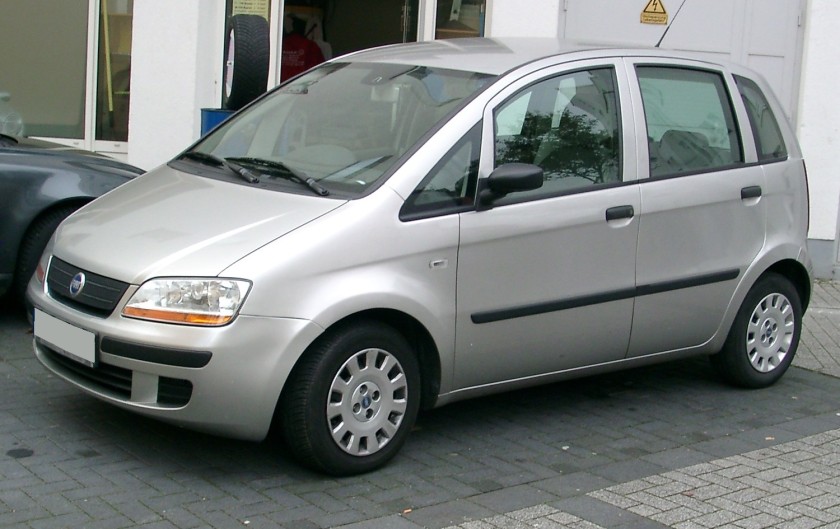 |
|
| Overview | |
| Manufacturer | Fiat |
| Production | 2003–2012 (Italy) 2005–present (Brazil) |
| Assembly | Mirafiori plant, Turin, Italy Betim (Minas Gerais), Brazil (Fiat Automóveis) |
| Designer | Giorgetto Giugiaro |
| Body and chassis | |
| Class | Mini MPV |
| Body style | 5-door MPV |
| Layout | FF layout |
| Platform | Project 188 |
| Related | Fiat Punto (188) Lancia Musa Lancia Ypsilon |
| Powertrain | |
| Engine | Petrol engines: 1.2 L FIRE I4 1.4 L FIRE I4 1.6 L E.torQ I4 (Brazil only) 1.8 L X18XE I4 (Brazil only) 1.8 L E.torQ I4 (Brazil only)Diesel engines: 1.3 L Multijet I4 1.6 L Multijet I4 1.9 L Multijet I4 |
| Transmission | 5-speed automatic 5-speed manual 6-speed manual |
| Dimensions | |
| Wheelbase | 2,510 mm (98.8 in) |
| Length | 3,930 mm (154.7 in) |
| Width | 1,700 mm (66.9 in) |
| Height | 1,660 mm (65.4 in) |
| Curb weight | 1,275 kg (2,811 lb) |
| Chronology | |
| Successor | Fiat 500L |
The Fiat Idea (Type 350) is a mini MPV built by the Italian manufacturer Fiat since 2003. The car is based on the Project 188 platform, originally used for the second-generation Fiat Punto. The Idea is noted for its versatile interior, which includes sliding and folding rear seats. In 2006 the Idea had a facelift with the main changes being a darker interior, chrome grill and clear front indicators.
Engines
The Fiat Idea engines are all Euro 4 compliant. The petrol engine is the 1.4-litre 16 valve 95 PS (70 kW; 94 hp), available with five- and six-speed gearboxes, and the diesel 1.3-litre 16 valve MultiJet units, with 70 PS (51 kW; 69 hp) or 90 PS (66 kW; 89 hp). All of these engines can be matched with the Dualogic robotised manual gearbox.
| Model | Engine | Displacement | Power | Torque |
|---|---|---|---|---|
| 1.2 Fire 16V | I4 | 1242 cc | 80 PS (59 kW; 79 hp) @ 5000 rpm | 114 N·m (84 lb·ft) @ 4000 rpm |
| 1.4 8V | I4 | 1368 cc | 77 PS (57 kW; 76 hp) @ 6000 rpm | 115 N·m (85 lb·ft) @ 3000 rpm |
| 1.4 FIRE 16V | I4 | 1368 cc | 95 PS (70 kW; 94 hp) @ 5800 rpm | 128 N·m (94 lb·ft) @ 4500 rpm |
| 1.3 16V Multijet | I4 | 1248 cc | 70 PS (51 kW; 69 hp) @ 4000 rpm | 180 N·m (130 lb·ft) @ 1750 rpm |
| 1.3 16V Multijet | I4 | 1248 cc | 90 PS (66 kW; 89 hp) @ 4000 rpm | 200 N·m (150 lb·ft) @ 1750 rpm |
| 1.6 16V Multijet | I4 | 1598 cc | 120 PS (88 kW; 120 hp) @ 4000 rpm | 300 N·m (220 lb·ft) @ 1500 rpm |
| 1.9 8V Multijet | I4 | 1910 cc | 100 PS (74 kW; 99 hp) @ 4000 rpm | 260 N·m (190 lb·ft) @ 1750 rpm |
Brazilian Idea
The Brazilian version of the Idea was launched in late 2005. The engines available are the new 1.4-litre 8-valve 86 hp (64 kW) Fire engine (the same as in the Grande Punto) and the latest version of the GM-sourced Powertrain 1.8-litre 8-valve 114 hp (85 kW) engine. Both have flexible fuel technology, which lets the driver use either gasoline or ethanol.
This version has a longer wheelbase and height compared to the European version. The interior design is taken from the Fiat Palio Mk. III, and adapted to the South American market. It also has a panoramic glass roof as an option, known as the SkyDome.
The Idea is exported in two different trim levels (the ELX with the 1.4-litre engine and the HLX with the 1.8 engine) and it has four airbags, anti-lock braking system with EBD; parking, rain and lights sensor, security laminated glass, the SkyDome, 15″ alloys, bluetooth phone system, and leather seats among other features.
Over 170,000 Ideas have been sold in Brazil since its launch (2005). In 2010 the Idea received another facelift with new front, rear and door handles.
Idea Adventure
The Idea Adventure is a mini XUV version that was launched in September 2006 in São Paulo, Brazil. It features a revised suspension, tires are Pirelli Scorpion 205/70 R15, a protective body kit, specially designed 15″ alloys, interior mods like the white instruments, the specially designed seats with leather, and a standard safety equipment which features double front and side airbags, ABS brakes with EBD. In 2009, the wholeAdventure line (Idea, Doblò, Strada and Palio Weekend) was equipped with a locking differential. The line was rebadged as Adventure Locker. Idea Brazilian Facelift
During his visit to Rio de Janeiro, Brazil in July 2013, Pope Francis chose to ride in a Fiat Idea for his public appearances, instead of the expensive and secure vehicles usually used by dignitaries and popes.
- 2003 Fiat Panda (second generation)
- 2003 Fiat Punto (mark 2 revision B)
- 2004 Fiat Panda 4×4 (second generation)
- 2005 Fiat Panda Alessi
- 2005 Fiat Panda Cross
- 2005 Fiat Croma
- 2005 Fiat Sedici
2005 Fiat Sedici
| Fiat Sedici | |
|---|---|
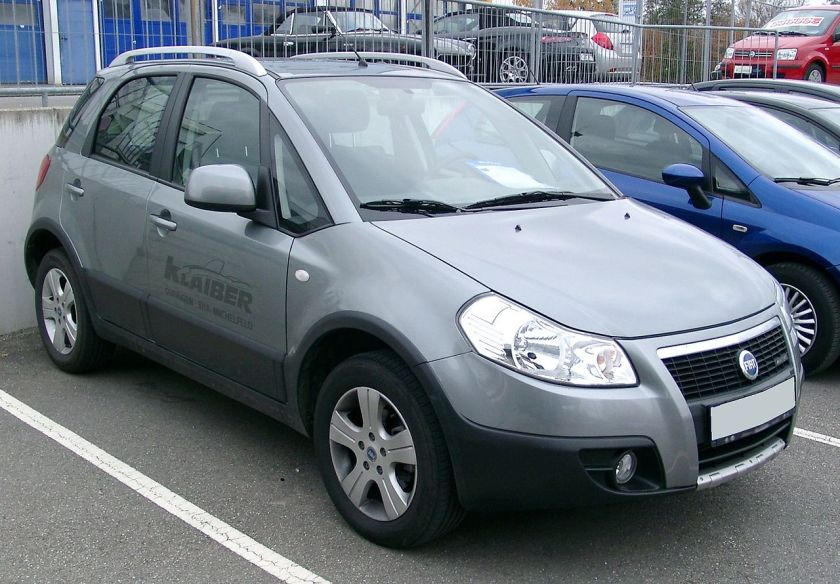 |
|
| Overview | |
| Manufacturer | Fiat |
| Also called | Suzuki SX4 Maruti Suzuki SX4 Lancia Pangea (cancelled) |
| Production | 2005–2014 |
| Assembly | Hungary: Esztergom (Magyar Suzuki) |
| Designer | Giorgietto Giugiaro |
| Body and chassis | |
| Class | Mini crossover SUV |
| Body style | 5-door hatchback |
| Layout | Front engine, front-wheel drive /four-wheel drive |
| Powertrain | |
| Engine | 1.6 L M16A I4 petrol 1.9 L Multijet I4 diesel 2.0 L Multijet I4 diesel |
| Transmission | 5-speed manual (petrol) 6-speed manual (diesel) |
| Dimensions | |
| Wheelbase | 2,500 mm (98.4 in) |
| Length | 4,115 mm (162.0 in) |
| Width | 1,730 mm (68.1 in) |
| Height | 1,575 mm (62.0 in) |
| Curb weight | 1,320–1,425 kilograms (2,910–3,142 lb) |
The Fiat Sedici is a mini sport utility vehicle co-developed by Fiat and Suzuki mainly for the European market.
History
It was introduced in December 2005 Bologna Motor Show, and is built at the Magyar Suzuki plant in Hungary. The expected production volume is 60,000 units per year, 1/3 of these to be sold by Fiat and 2/3 of these to be sold by Suzuki, where it is badged as the SX4. The design was created by Giorgetto Giugiaro‘s Italdesign Giugiaro studio, and it is an alternative to mini multi-purpose vehicles (MPV), which have a more “boxy” appearance.
It was the official car of the 2006 Winter Olympics. As the car is four wheel drive, it is considered a 4×4. As 4×4 is 16, the car is named Sedici (pronounced [ˈseːditʃi]), which means “sixteen” in Italian. By pressing a button the driver can change between 4×2 and 4×4 transmission modes. The car also has electronic stability control (ESC) on the options list and a diesel particulate filter (DPF) is a standard feature. In November 2006 it was the second best selling SUV in the Italian market, and by June 2007, it was the best selling vehicle.
The Sedici has been sold in Israel since 2012, with automatic (4 speed) or manual (5 speed) gearbox. In late 2010, the Sedici was withdrawn from the United Kingdom, due to poor sales of under 50,000 units.
Sedici 4×2
The front wheel drive version of the Sedici was unveiled in spring 2008. It was available with the same engine choices as the 4X4 version and was available in two trim levels: Dynamic and Emotion. The price, in Italy, was around €2000 cheaper than the 4×4 version.
2009 facelift
In spring 2009, the Sedici was given a more substantial upgrade: A changed front grille, similar to that of the Bravo, and a new bumper. Inside it has more sophisticated instrumentation, new fabrics, the air conditioning vents were changed, and it has new Euro 5-compliant engines. The 1.9 litre Multijet engine was replaced by the more modern 2.0 litre Multijet engine 135 PS (99 kW; 133 hp), also the petrol 1.6 litre engine was upgraded to have 120 PS (88 kW; 118 hp), with lower fuel consumption.
- 2005 Fiat Grande Punto
2005 Fiat Grande Punto
The Fiat Grande Punto is a supermini car produced by the Italian manufacturer Fiat since 2005. It is the third generation in the Fiat Punto series and was announced in August 2005, and launched at the Frankfurt Motor Show. In 2009, it was joined by the facelifted Punto Evo. In 2012, both were replaced by a revised model, called simply Punto, thus resurrecting the model name of its predecessor. It is manufactured in Italy, in Brazil (from 2007) and in India (from 2008).
Grande Punto (2005–2012)
The third generation Fiat to bear the name Punto, codenamed Project 199, the Grande Punto was unveiled at the 2005 Frankfurt Motor Show and went on sale later that year. Styled by Giugiaro, the car is based on the GM Fiat Small platform. Whilst the model shares some of its name with the previous Punto, a large number of its components are new, including a new chassis and body shell.
The engines are the Fiat 1.2 8v Fire (65 PS), a new 1.4 8v Fire (77 PS) and the 1.4 16v StarJet (95 PS). Four MultiJet diesel engines are also available: two 1.3 16v units (75 PS (55 kW) and 90 PS (66 kW), the latter with a variable geometry turbocharger) and two 1.9 with 120 PS (88 kW) and 130 PS (96 kW), all of them with diesel particulate filter. The 1.9 diesel was replaced with the new 1.6 MultiJet starting the end of 2008.
All the engines are Euro IV compliant. In 2007, a new 1.4 16v T-Jet turbocharged petrol engine, 120 PS (88 kW), became available. At the 2007 Frankfurt Motor Show, Fiat introduced 155 PS (114 kW) an Abarth version by Abarth & C S.p.A.. It was branded as an Abarth rather than Fiat. The car’s nose, headlights and front grill look reminiscent of the Maserati Coupé (both were designed by Giorgetto Giugiaro of ItalDesign).
Non-European markets
In Australia, Fiat introduced the Grande Punto in July 2006, sold only as the Punto; it is the first Fiat to be sold in Australia since 1989. In 2009, the Punto was discontinued in Australia, due to slow sales. The car was reintroduced in 2013 after Fiat began factory distribution in Australia, the car was repriced at a much lower price, that was more in keeping with its rivals.
It was launched in Mexico in November 2006. The Grande Punto is placed above the Fiat Palio in the Mexican Fiat car lineup. Initially it was sold with the 1.4 16v StarJet 95 PS (70 kW) engine with 6-speed manual gearbox in 5-door Dynamic and 3-door Sport trims. In December 2007, the 1.4 16v T-Jet 120 PS (88 kW) variant was launched. The Italian-made Grande Punto has already been launched in Chile and the Dominican Republic in petrol and diesel versions. The Grande Punto also went on sale in South Africa in 2006, replacing the previous generation.
In the rest of South America, the Brazilian-built Grande Punto (called only Punto) was launched in August 2007. Codenamed Project 310, it is produced in the factory of Betim, Minas Gerais, Brazil. The chassis is an adaptation of the Fiat Palio, a lower cost compact. Levels of safety were not maintained (airbags and ABS are optional on lower trim levels, and the highest one has only two airbags as standard), but the ride comfort is said to be the same. The five-door version is the only one available in the Brazilian line, and there are no plans for a two-door version (in Brazil, two-door vehicles are only accepted for cheaper cars). The engines available at launch were the 85 PS (63 kW) 1.4 Fire 8v and the 115 PS (85 kW) 1.8 Family 1 X18XE engine that comes from GM-Fiat/Powertrain, and later the 1.4 Fire 16v TurboJet, also available for the Linea. For the 2011 model, there were added the new E.torQ engines 1.6 16v and 1.8 16v. Produced by Fiat Powertrain Technologies, they were based on the discontinued Tritec engines. All non-Turbo petrol models produced in Brazil are flex-fuel.
The Grande Punto was launched in India during the Delhi Auto Expo in January 2008, with sales starting in June 2009. The Indian market Punto is manufactured by the Fiat-Tata Motors joint venture Fiat India Automobiles Ltd (FIAL) in a new plant in Ranjangaon, Maharashtra. The Indian Grande Punto was based on the same 310 project of the Brazilian Punto. In August 2014 Fiat launched a facelifted Punto Evo based on Fiat Avventura style with new front fascia, new front and rear LED lights and new interior (the same of the European Punto Evo).
A related sedan car, the Fiat Linea, was launched in early 2007 to replace the aging Fiat Marea. It is built on an extended version of the Grande Punto’s chassis, with a total length of 4,560 mm (179.5 in), making it part of the superior small family car segment.
Safety
The Grande Punto was awarded with 5 stars in the Euro NCAP crash test for passenger protection and 3 stars certification for pedestrian safety. The most powerful engines have electronic stability program and anti slip regulation fitted as standard, and it is an optional extra on some of the lower powered engines.
- Adult occupant:





- Child occupant:





- Pedestrian:




Abarth
The first car from the newly created (2007) Fiat-owned Abarth & C. S.p.A, the Abarth Grande Punto differs significantly from its donor car.
Initially the Abarth Grande Punto was released with a 150 PS (155 PS when using 97 RON fuel) 1.4 turbo engine, but from 2008 there was available an Essesse kit, which could be installed at official Abarth service centres rather than in the factory. Amongst various refinements included uprated brakes and suspension, the Essesse kit provided an uprated power output of 180 hp.
Punto Evo (2009–present)
The Punto Evo, a facelift version of the Grande Punto, was presented at the 2009 Frankfurt Motor Show. It has two new engines, a 1.3 L second generation Multijet diesel and a 1.4 L petrol engine with the MultiAir technology. It also features a new navigation system integrated to the Blue&Me system called Blue&Me–TomTom.
Abarth
The Abarth Punto Evo was shown at 2010 Geneva Motor Show. It has a 165 PS (121 kW; 163 hp) 1.4 L MultiAir Turbo engine. The top speed is 213 km/h (132 mph) and acceleration from 0 to 100 km/h (62 mph) takes 7.9 seconds.
A new Esseesse version was released in 2011, which was an optional upgrade that improved performance, with a 0–100 km/h (62 mph) time of 7.5 seconds.
Punto (2012–present)
Fiat introduced the 2012 Punto in September 2011 at the Frankfurt Motor Show,[18] as a facelifted version of the Punto Evo that re-introduced the Punto nomenclature (without Grande orEvo).
Engines
The 2012 Punto is available with two new engines: the 0.9 L TwinAir turbo petrol, with two cylinders and 85 PS (63 kW; 84 hp), and the new 1.3 L MultiJet II diesel, with Start&Stop air technology, 85 PS (63 kW; 84 hp) and CO2 emissions reduced to 90 g/km. The new engines do not replace the previous engines (1.2 Fire, 1.4 MultiAir, 1.3 MultiJet and 1.6 MultiJet).
The 2012 Punto has updated front and rear bumper clips along with new alloy wheels. The interior is also updated with new fabrics and a revised Blue&Me system.
Punto Evo (India, 2014–Present)
Fiat India gave the Punto EVO an extensive facelift in August 2014. The facelift consisted of large, swept back headlamps, a new grille and chrome inserts, whilst the rear of the car received LED taillamps from its European twin, and the dashboard from the European car.[19]
Avventura (2014–Present)
Fiat India launched a crossover version of the Punto Evo called Avventura in India on 21st October 2014 at a base price of INR 5.99 Lakh. The Avventura was aimed at the market inhabited by the likes of Toyota Etios Cross, Volkswagen CrossPolo and Ford EcoSport.
- 2006 Fiat Panda 100HP
- 2007 Fiat Linea
2007 Fiat Linea
| Fiat Linea | |
|---|---|
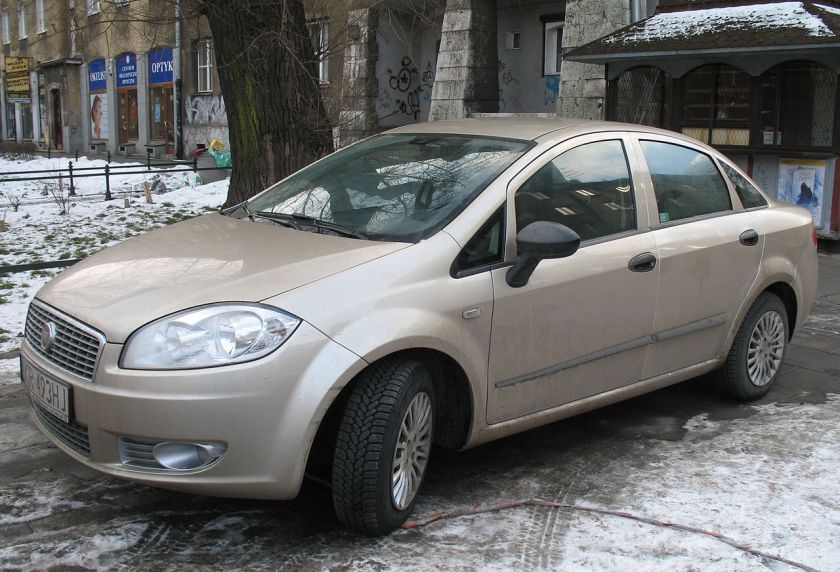 |
|
| Overview | |
| Manufacturer | Fiat |
| Production | 2007–present |
| Assembly | Betim, Minas Gerais, Brazil (Fiat Automóveis) Bursa, Turkey (Tofaş A.S.) Ranjangaon, Pune, India (Fiat India) Naberezhnye Chelny, Russia (Sollers) |
| Designer | Centro Stile Fiat |
| Body and chassis | |
| Class | Family car |
| Body style | 4-door saloon |
| Layout | FF layout |
| Platform | GM Fiat Small platform |
| Related | Alfa Romeo MiTo Fiat Grande Punto Fiat Punto Evo Fiat Fiorino III Fiat Qubo Opel Corsa D Opel Meriva B Citroën Nemo Peugeot Bipper |
| Powertrain | |
| Engine | 1.4L Fire I4 petrol 1.4L Fire Turbojet I4 petrol 1.8L E.torQ I4 Flexfuel 1.9L Torque I4 Flexfuel 1.3L Multijet I4 diesel 1.6L Multijet I4 diesel |
| Transmission | 5-speed manual 6-speed manual 5-speed semi-auto |
| Dimensions | |
| Wheelbase | 2,603 mm (102.5 in) |
| Length | 4,560 mm (179.5 in) |
| Width | 1,730 mm (68.1 in) |
| Height | 1,494 mm (58.8 in) |
| Curb weight | 1,160 to 1,185 kg (2,557 to 2,612 lb) |
| Chronology | |
| Predecessor | Fiat Marea |
The Fiat Linea (Type 323) is a family car released on March 26, 2007 at the Tofaş plant in Bursa, Turkey, by the Italian automaker Fiat as a world car in developing countries. It replaced the aging Marea as the largest saloon in the Fiat range. It is based on the current Fiat Grande Punto platform. The Linea was designed by Fiat Style Centre and co-developed by Tofaş (joint venture between the Fiat Group and Koç Holding) and Fiat do Brasil.
History
The Linea’s size is similar to saloon versions of other small family cars, such as the Ford Focus, Mazda 3 and Vauxhall/Opel Astra. Its wheelbase is 2,603 mm (102.5 in), or 100 mm (3.9 in) longer than its sister models, and its total length is 4,560 mm (179.5 in), or 500 mm (19.7 in) longer than its sister models.
At launch, in Turkey in 2007, the car was initially available with a 1.4 Fire gasoline engine and 1.3 Multijet diesel engine. The 1.4 TurboJet engine with 120 PS, and the 1.6 diesel with 105 PS were the next models to be made available. Production at the Tofaş plant is mostly aimed at the local Turkish market, whereas CBUs are shipped out for the EU market and CKD components are shipped to the Tatarstan plant of a Fiat joint venture in Russia.
Launched in September 2008 in Brazil, the Linea was available there with a 1.9 L 16v “Torque” engine with 132 PS (97 kW; 130 hp), to make it flexible for the Brazilian market (capable of using petrol or ethanol). Also in Brazil the Linea is available with a 1.4 L 16v T-Jet petrol-only engine with 152 PS (112 kW; 150 hp); the same engine used in Fiat Grande Punto Abarth in Europe.
The Fiat Linea was launched in South Africa in September 2009.
Launched in January 2009 in India, the Linea is there available with a 1.4 L Fire petrol engine 90 PS (66 kW; 89 hp), and 1.3 L Multijet diesel engine of 93 PS (68 kW; 92 hp). Another variant of the Fiat Linea, which includes the much acclaimed 1.4 L T-JET Engine providing 114 PS (84 kW; 112 hp), was released on October 8, 2010 in India.
In 2010 (2011 model) Fiat replaced the Torque engine (1.9 16v Flex) with a new 1.8 16v E.torQ, derived from the old 1.6 16v SOHC Tritec engines used in the Mini Cooper and Chrysler PT Cruiser. Fiat Powertrain Technologies changed the displacement from 1598 cc to 1747 cc and made it a flex fuel engine (ethanol/petrol). Max power output was the same (compared with old Torque engine), but it would be reached earlier, and torque has increased from 183 N·m (135 lb·ft) to 185 N·m (136 lb·ft). Car performance did not change significantly; using only E-Torq engines in Latin America was largely a strategic decision for Fiat.
Fiat Linea runs in a different segments and has different competition in Brazil, and India. In Brazil it is positioned against the Honda Civic, Chevrolet Vectra (Opel Astra), Toyota Corolla, Citroën C4 Pallas, Nissan Sentra and Ford Focus, whereas in India it is positioned in the upper C segment and goes against cars like Ford Fiesta, Honda City and Hyundai Accent/Verna. This positioning has been done to gain a foothold in the Indian market and to achieve the reduced price several features such as the TS and ESC (which are optional).
Car systems
Linea is equipped with the Blue&Me hands-free system, a Microsoft Windows Mobile-based system with multilanguage voice recognition and speech functions. The system allows one to browse the mobile’s phonebook, read SMSs aloud and display them on the MID, and controls the audio system. A USB stick with music files on it can be plugged into the built-in USB port and music can be played via Blue&Me’s built-in Microsoft Windows Media Player.
In Brazil, the Linea can be equipped, optionally, with a Blue&Me Nav system; an enhanced Blue&Me system that has a GPS system integrated. This GPS system doesn’t utilise a touch screen to show maps, instead it uses a regular display that gives directions by voice guidance and displays directional arrows for navigation. You can enter your destination address, as well as other instructions, by voice, just like the regular Blue&Me system, or using the controls on the steering wheel. The Linea is the first car in Brazil that has an integrated GPS system.
Fiat Linea in India
Presently, the four different variants of Fiat Linea available are: Active, Dynamic, Emotion and Emotion Pack. A Linea Dynamic pack was also available earlier but has been discontinued since April 2010. All these variants are available with both petrol (1.4 L FIRE) and diesel (1.3 L MultiJet) engine option. These versions are decided on the basis of price to content ratio in these vehicles. Some Standard features of Fiat Linea include: automatic climate control, Blue&Me with steering mounted controls, speed sensitive front wipers and volume control, dual rear AC vents, and Advanced Driver information System (DIS).
Fiat Linea marked the comeback of Fiat in the Indian market, and has now come up with Fiat Linea T Jet. The Linea T Jet is equipped with a 1.4L turbo charged petrol engine and shells out 114 PS (84 kW; 112 hp) at 5000 rpm and a torque of 207 N·m (153 lb·ft) at 2200 rpm. The Fiat Linea T Jet has an acceleration which ranges from 0–100 km/h in 10.2 seconds and reaching to a top speed of 200 km/h (124 mph).
Some additional features of Linea T-Jet (Indian version) include: 16-inch alloy wheels with 205/55 R16 tires having disc brakes on all four tires, Italian leather seats, increased ground clearance of 185 mm (7.3 in), best in class better than any other saloon of the segment}, improved quality of interiors.
Fiat Linea models
| Fiat Linea Active | It is the base variant that comes with most of the safety, comfort and convenience features like rear AC vents, all four power windows with Auto up/down feature, theater dimming front cockpit lights with spotlight function, hydraulic power steering, speed sensitive front wipers and AC adjusted for tropical climate but lacks two important features – ABS and dual airbags as they are not mandatory in India. |
| Fiat Linea Dynamic | It comes with a few more features like Driver Seat height adjust, electrically adjustable outside rear-view mirror (ORVMs), Programmable Speed Limit Warning System, additional rear cabin lights, front fog lamps, night panel in roof lights, rear roof light, and foldable desmodronic remote key. |
| Fiat Linea Emotion | The additional features that this variant offers are: automatic climate control with dual Rear AC Vents, 15-inch alloys, ABS with EBD CD player with 6 speakers, front seat arm rest with glove box, double folding rear back seat, collapsible rear sun curtain, sun glass holder, leather-wrapped steering wheel and gear knob, electric boot opening from the remote on the foldable key, and front seat back pockets. |
| Fiat Linea Emotion Pack | It is the top-end variant of the Fiat Linea which offers a few additional features in comparison to its lower variants. These features are: Blue&Me system with Windows Media player and voice interaction and commands, dual front airbags, front seat belts pre-tensioners & load limiter, steering mounted audio, Blue&Me controls and vanity mirrors on both sides. |
In 2012 only three variants are available; Emotion, Dynamic and Active for diesel variant and Acrive and Dynamic for 1.4 F.I.R.E. engine and T-Jet & T-Jet + version for Petrol.
L’Unico Club
In Brazil, Fiat is aiming the Linea towards the Japanese cars, such as Honda Civic and Toyota Corolla, the market leaders for its class. As such, Fiat has launched the L’Unico Club, that offers VIP services for Linea owners, such as special exclusive lines and exclusive attendants for Linea owners, invitations for special events (concerts, theater plays, expositions, etc.), get and deliver service for maintenance and 3 years warranty, the longest warranty for Fiat cars in Brazil.
Fiat First
In India, the Linea along with the Grande Punto are part of the special service from Fiat, namely Fiat First, launched on October 15, 2009 to provide 24×7 Road Assistance for punctures, common spares, accident repairs and towing. Fiat provides free 24×7 Roadside Assistance package for 50 months with 2+2 years extended warranty to all Fiat customers. This service is exclusive to Fiat India only. The Fiat Linea competes with subcompact saloons like the Honda City, Ford Fiesta 1.6S, Hyundai Verna and the Maruti Suzuki SX4. Fiat boasts of an extensive and growing sales network in India with its partnership with TATA Motors. Tata-Fiat showrooms have on display cars from both manufacturers. The car is manufactured at Fiat’s state of the art Ranjangaon facility in Pune, Maharashtra. In Mid-2011 Fiat and Tata decided to diverge on the marketing front, with Fiat opting to set up exclusive showrooms for its cars – the Fiat Grande Punto 2012 and the Fiat Linea 2012 – released on January 3, 2012. The showrooms will be set up in around 20 major metro cities like Chennai, Bengaluru, Mumbai and New Delhi by end-2012 or early-2013.
- 2007 Fiat Bravo
Fiat Bravo (2007)
| Fiat Bravo (198) | |
|---|---|
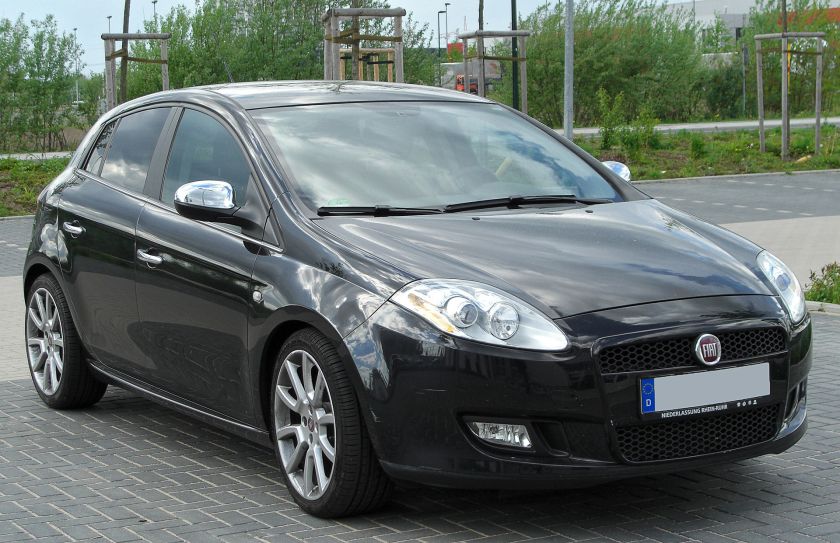 |
|
| Overview | |
| Manufacturer | Fiat |
| Also called | Fiat Ritmo (Australia) |
| Production | 2007–2014 (Italy) 2010–present (Brazil) |
| Assembly | Cassino (province of Frosinone),Italy Betim, State of Minas Gerais, Brazil(Fiat Automóveis) |
| Designer | Centro Stile Fiat |
| Body and chassis | |
| Class | Small family car |
| Body style | 5-door hatchback |
| Layout | FF layout |
| Platform | Fiat Group C-platform |
| Related | Fiat Stilo Lancia Delta (2008) |
| Powertrain | |
| Engine | Petrol: 1.4 L I4 Fire 1.4 L I4 TurboJet 1.8 L I4 E.torQ LPG: 1.4 L I4 Fire Diesel: 1.6 L Multijet I4 1.9 L Multijet I4 2.0 L Multijet I4 |
| Transmission | 5-speed manual 6-speed manual 5-speed Dualogic |
| Dimensions | |
| Wheelbase | 2,600 mm (102.4 in) |
| Length | 4,336 mm (170.7 in) |
| Width | 1,792 mm (70.6 in) |
| Height | 1,498 mm (59.0 in) |
| Curb weight | 1,205–1,360 kg (2,657–2,998 lb) |
| Chronology | |
| Predecessor | Fiat Stilo |
| Successor | Fiat Ottimo (China) |
The Fiat Bravo (Type 198) is a small family car produced by Italian manufacturer Fiat since 2007. It was introduced to the press in January 2007 in Rome, and later to the public in March at the Geneva Motor Show.Europe-bound production at the Cassino plant ended in July 2014, being part of FCA’s 5–Year Plan, presented by Sergio Marchionne on May 7, 2014; no direct replacement was launched.
History
The Bravo was produced in Fiat’s plant in Piedimonte S. Germano. The car was designed by Centro Stile Fiat. Austrian automotive company Magna Steyr engineered a large amount of the car’s body. CAD engineering and computer simulations were used on a very large scale with this model and the design was finished to a very tight schedule.
Blue&Me is a new feature first introduced with the Fiat Grande Punto and is fitted as standard on the Bravo Dynamic and Sport. Developed with Microsoft, this system offers Bluetooth hands-free use with a mobile phone. It is also capable of displaying SMS text on the dash screen and it has built-in voice activation. Another part of the system is the inclusion of a USB connector so that an MP3 player or USB flashcard can be plugged in, giving the car’s entertainment system access to MP3 files stored on the unit.
In Australia, the Fiat Bravo was sold as the Fiat Ritmo, as Mazda Australia owns rights to the “Bravo” name. It was introduced there in February 2008, however, it was discontinued the following year, due to slow sales – only 463 units were sold in total. The Bravo is also being built in Brazil since 2010, and is being sold there and throughout South America (with the exception of Argentina, Chile and Colombia, who receive the Bravo from Italy).
Fiat were working on an station wagon variant, in January 2007, set to be titled the Bravo MultiWagon, a very production-ready version of the 5-door Fiat Bravo that, however, never made it to production. Other sources say, that this was actually the facelifted Fiat Croma, launched in October 2007.
Brazilian version
The Brazilian-built Bravo went on sale in 2010 in Brazil. Its available with two engines and three trim levels (five trim levels since 2012), the Brazilian-built 1.8L 16V E.torQ (based on Tritec engine) fitted with a 5-speed manual transmission or Dualogic transmission and Italian built 1.4L engine with 152 PS (112 kW; 150 hp) (with Overboost option) and a 6-speed manual transmission. Trim levels are named as: Essence (1.8), Essence Wolverine Limited Edition (1.8), Sporting (1.8), Absolute (1.8) and T-Jet (1.4T).
Engines
The Bravo is powered by three different petrol and three diesel engines. ‘T-Jet’ is the name of the new range of turbocharged petrol engines.
The 150 PS (110 kW; 148 hp) T-Jet version has a Sport button to give an “overboost” function. At the end of 2007 the new 1.6 L M-jet diesel engine was launched, and a more powerful 120 PS (88 kW; 120 hp) version in spring 2008. The 105 PS (77 kW; 104 hp) version is available with the so-called “Eco” pack which features changes to the car’s aerodynamics and ECU, taller gear ratios and lower rolling resistance tyres. This gives better fuel consumption and lower CO
2 emissions (119 g/km) when compared to the standard car. This engine is also Euro 5 rated. A new 2.0 Multijet diesel was added to lineup at the end of 2008 that will slowly replace the 1.9 16v. In 2009 the Bravo got a new “eco” 90 PS (66 kW; 89 hp) variant of the Multijet diesel. In the Summer of 2010 two petrol engines were updated, the 1.4 T-Jet is fitted with the new Multiair technology and the base 1.4 T-Jet was also updated to Euro 5 specification.
- 2007 Fiat 500 (2007)
- 2007 Fiat 500 (2007) Abarth
- 2008 Fiat 500 (2007) Abarth Assetto Corse
Fiat 500 (2007)
| Fiat 500 | |
|---|---|
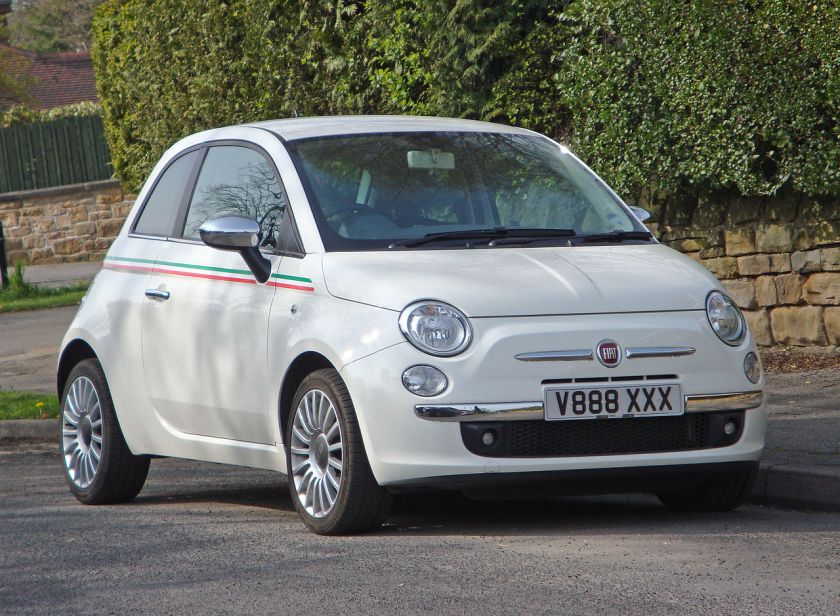 |
|
| Overview | |
| Manufacturer | Fiat |
| Production | 2007–present |
| Assembly | Tychy, Poland (Fiat Poland) Toluca, Mexico (Chrysler) |
| Designer | Roberto Giolito |
| Body and chassis | |
| Class | City car |
| Body style | 3-door hatchback 3-door cabriolet |
| Layout | Front-engine, front-wheel drive |
| Platform | Fiat Mini platform |
| Related | Fiat Panda Fiat Uno Ford Ka Lancia Ypsilon |
| Powertrain | |
| Engine | 0.9 L TwinAir Turbo I2 (petrol) 1.2 L Fire I4 (petrol) 1.4 L Fire I4 (petrol) 1.4 L Fire Turbo Jet I4 (petrol) 1.4 L MultiAir I4 (petrol) 1.3 L MultiJet I4 (diesel) |
| Transmission | 5-speed manual 6-speed manual 5-speed semi-auto (Dualogic) 6-speed automatic (Aisin) |
| Dimensions | |
| Wheelbase | 2,300 mm (90.6 in) |
| Length | 3,546 mm (139.6 in) |
| Width | 1,627 mm (64.1 in) |
| Height | 1,488 mm (58.6 in) |
| Curb weight | 865–980 kg (1,907–2,161 lb) (Europe) 1,072–1,149 kg (2,363–2,533 lb) (US) |
| Chronology | |
| Predecessor | Fiat 500 Fiat Seicento/600 |
The Fiat 500 (Type 312) is a city car built by Italian automaker Fiat since 2007. The car is currently produced in Tychy, Poland, by Fiat Auto Poland S.A. and in Toluca, Mexico, by Chrysler Group LLC. The 500 is a four-seater, three-door hatchback, designed as modern reinterpretation of Dante Giacosa‘s 1957 original rear-engined Fiat 500 or “Nuova 500”.
The car was announced on May 5, 2006, and the first images were presented on March 20, 2007. The car was launched officially on July 4, 2007, with 250,000 people in attendance. This was the largest launch party held in the last ten years, a testament to the Nuova 500’s huge popularity. The car was displayed in the squares of 30 cities in Italy for the launch.
The 500 is available with four different trim levels: Naked (not available in the United Kingdom or Italy; opting for this trim level means that the car does not have the seven airbags meaning that the passenger safety rating drops), Pop, Lounge, and Sport. Customers can also choose between 15 interior trims, nine wheel options, 19 decals, and 12 body colours. There are over 500,000 different personalized combinations of the 500 that can be made by adding all kinds of accessories, decals, interior and exterior colours, and trims. The car is also available with the Blue&Me navigation system. The American Sport version has the 1.4 litre Multiair engine, which is manufactured in Michigan.
The car was chosen to herald the marque’s official return to the American market after an absence of 27 years.
The 1 millionth Fiat 500 rolled out of production line on 19 November 2012.
Trepiùno Concept
The design of the 2007 Fiat 500 is based on the Fiat Trepiùno concept introduced at the 74th Geneva Motorshow in 2004. The Trepiuno was designed by Fiat Stile Centre. The designer who penned the Trepiùno concept was Roberto Giolito. This car featured a distinctive retro-look resembling the original Fiat 500, which proved to be an enormously practical and popular vehicle throughout Europe.
The name “Trepiùno” is a contraction of “tre più uno“, meaning “three plus one” in Italian; the car received this name because it was one step above a 2+2, as it was designed so that by deflating part of the dashboard around the front passenger’s legs, and using high-tech thin-layered materials which take up less room than conventional upholstery, the front passenger seat could be slid forward far enough to accommodate another full-sized adult seat behind it; the fourth passenger, behind the driver, would occupy the smaller seat.
Specifications
Engines
At launch three engines were available: two petrol/gasoline and one diesel engine. All the engines met the Euro5 standards. The 1.3 Multijet was equipped with a diesel particulate filter (DPF) as standard. Despite the vehicle’s name implication, the lowest displacement is 1242 cc with 69 metric horsepower (PS), notably larger and more powerful than both the 1950s “original” and the 1990s Cinquecento. A smaller, turbocharged TwinAir two-cylinder engine with 85 PS was later unveiled at the 2010 Geneva Motor Show and joined the production range the following year. However, at 875 cc (“0.9 L”), the TwinAir is still far from being a true “500”, and is only a few cc smaller than the Cinquecento base model engine – albeit twice as powerful. Regardless, the TwinAir claimed the Best New Engine Award for 2011, and is currently claimed (based on official Euro test cycle data for emissions and fuel consumption) as the “world’s greenest petrol engine”, although its real-world efficiency is often called into question in more detailed reviews. A naturally aspirated version of the TwinAir was introduced later. A longer stroke gives it a larger displacement of 964 cc (0.964 L; 58.8 cu in) and a higher compression ratio. This new base engine delivers 60 PS (44 kW; 59 hp). Availability is limited to selected markets, for example the Netherlands.
The 105PS 0.9 TwinAir engine model was unveiled in Frankfurt Motor Show 2013.
The new 500 has seven airbags in all models. There are also electric aids available such as ABS brakes, ESP (electronic stability program), ASR (antislip regulation), HBA (hydraulic brake assistance) and hill holder device. The 500 was awarded with five stars by EuroNCAP, succeeding the BMW MINI as the shortest car to have a five-star rating. Fiat also said that the 500 was engineered so that it would have been able to achieve a six-star rating had EuroNCAP adopted this classification.
The Fiat 500 passed the Euro NCAP car safety tests with following ratings:
| Euro NCAP test results | ||
|---|---|---|
| Fiat 500 (2008) | ||
| Test | Score | Rating |
| Adult occupant: | 35 | |
| Child occupant: | 28 | |
| Pedestrian: | 14 | |
Security
The Fiat 500 has remote locking and an immobiliser as standard. The Fiat 500 was tested by Thatcham’s New Vehicle Security Ratings (NVSR) organisation and achieved the following ratings:
| NVSR | Rating |
|---|---|
| Theft of car: | |
| Theft from car: |
Special versions
Abarth 500 (2008-)
The 500 Abarth is a performance model of Fiat 500. The 1.4 L engine with IHI RHF3-P turbocharger is rated at 135 PS (99 kW; 133 hp) at 5500 rpm and 180 N·m (130 lb·ft) (206 N·m (152 lb·ft) in sport mode) torque at 3000 rpm. It includes a five-speed C510 transmission, low ride suspension, dualdrive electric power steering with SPORT setting, 6.5 x 16” aluminium alloy rim with 195/45 R16 tyres, four-wheel disc brakes (front ventilated). Interior includes turbo pressure gauge, gear shift Indicator, aluminum foot pedals, Blue&Me MAP with Telemetry monitoring and GPS system. The car costs GB£13,600 in the UK.
The 500 Abarth was unveiled at the 78th Geneva Motor Show, a year after the rebirth of Abarth brand and company.
Abarth 500 SS
The 500 Abarth SS (Esseesse) is a conversion kit for the Abarth 500 within 12 months or 20,000 km (12,000 mi) of the car’s first registration. Engine is upgraded to 160 PS (120 kW; 160 hp) at 5750 rpm and 206 N·m (152 lb·ft) (230 N·m (170 lb·ft) in sport mode) at 3000 rpm. It also includes drilled and ventilated 284 mm (11.2 in) x 22 mm (0.87 in) front brake discs with new pads, 240 mm (9.4 in) x 11 mm (0.43 in) drilled rear brake discs, Abarth front and rear springs, 17-inch white or titanium colour alloy rims with 205/40 R17 tyres, tyre pressure monitoring system, and a unique key cover. The conversion costs GB£2,500 in the UK.
Abarth 500 Opening Edition
The 500 Abarth Opening Edition is a limited production model (100 cars) for the Italian market. It includes the upgrades found in the 500 Abarth Esseesse. The car is available in two colours (Campovolo grey or pearlised White), while there is also the option of special stickers including a red chequered flag on the roof (exclusive to the Campovolo Grey shade) that pays homage to the numerous sporting victories of the Abarth brand.
Abarth 500 Assetto Corse
Unveiled in 2008 Paris Auto Show, the 500 Abarth Assetto Corse is a limited production model (49 cars), designed by the Fiat Group Automobiles Style Centre and produced by a team of Abarth Engineers and Designers. Engine is rated at 200 PS (150 kW; 200 hp) at 6500 rpm and 300 N·m (220 lb·ft) at 3000 rpm. It includes white 17-inch (430 mm) special ultralight racing wheels, low ride, sports racing mirrors and a place for a number on the sides, pastel grey body with red Abarth side stripes.
500 Start&Stop
The 500 Start&Stop is a model based on the 1.2 Lounge, with parts built by Bosch and Fiat Powertrain Technologies. The Start&Stop system stops the engine automatically whenever traffic conditions bring the car to a complete halt, and restarts it when the driver wants to move off again. The car reduces fuel consumption by up to 12% over a regular 1.2 Lounge in urban driving, with 113g/km CO2 emission. Other standard features include hands-free telecommunications and entertainment system. It costs GB£11,300 in the UK.
500 PUR-O2 (2008-)
The 500 PUR-O2 is based on the Fiat 500 Start&Stop, but also includes an Eco Drive system. Beginning in January 2009, a Dualogic transmission option is also available. The vehicle was unveiled in 2008 Paris Motor Show.
500 by Diesel (2008-2009)
In 2008, Fiat launched a special edition ‘By Diesel’ 500. In a partnership with Fiat and Italian clothing brand Diesel, the special edition 500 will run, it is suspected, for two years, with a production run of 10,000 planned. The 500 by Diesel is available in a choice of three exclusive colours, and can be marked out from standard 500s with its unique alloy wheels, ‘Diesel’ logos and burnished metal inserts to the bumpers and side-rubbing strips. Inside, there are denim seats and a special ‘Diesel’ branded gear knob. Coloured stitching can also be seen throughout the car’s already unique interior. The 500 by Diesel is based on the 500 Sport, using the same 1.2 L petrol, 1.4 L petrol and 1.3 L diesel engines.
500 Aria (2008)
The 500 Aria is a concept car based on the 1.3 L Diesel vehicle, but with diesel particulate filter, Stop & Start system, Dualogic transmission, recycled rubber floor from used tires, recycled and woven leather upholstery (mataleather) by Matamata, Ecolabel polyester fabrics by Apollo company. The vehicle was unveiled in 2008 Geneva Motor Show.
Ferrari version (2008)
The Ferrari version is a limited edition model (200 units) of the 1.4 (100 bhp) Sport, mainly used by Ferrari dealers as courtesy cars for owners to use while their Ferraris are being serviced. It includes red body, aluminum pedals, red brake calipers, 16-inch wheels with 195/45 tires, sporty steering wheel and a few tuning and exhaust modifications. Sixty of the Ferrari edition cars were shipped to the UK.
Felipe Massa version (2008)
The Felipe Massa version is a customized 1.4 Sport presented to Formula 1 driver Felipe Massa. It includes a 1.4 L engine rated at 120 PS (88 kW; 120 hp), Pearl White body, brown Cordura interior trim, a Skydome electric sunroof, 16 inch alloy wheel with diamond alloy finish, red brake callipers. The vehicle was unveiled in Monte Carlo (Monaco).
Barbie version (2009)
A special edition of the 500 designed to commemorate the 50th anniversary of toy icon Barbie. Created by Fiat Centro Stile and Mattel, the car was unveiled on March 9, 2009, in Milan’s fashion district, and parked at the entrance to La Rinascente department store, in Piazza Duomo, where German singer Nena performed live in the background. The 500 Barbie Edition will also be making an appearance at Fiat UK’s flagship store at Marylebone in London.
Abarth 695 “Tributo Ferrari” (2009)
The Abarth 695 “Tributo Ferrari” is a limited edition version developed in collaboration with engineers from Ferrari based on Abarth 500. The 1.4 Turbo T-Jet 16v engine is further developed and uses a different Garrett turbocharger. Rated at over 180 PS (130 kW; 180 hp). It includes a MTA (Manual Transmission Automated) electromechanical transmission with paddle shifter, unique to this version 17 inch alloy wheels with performance tyres, Brembo 284 mm (11.2 in) multi-section discs with fixed 4-piston calipers, “Record Monza” variable back-pressure “dual mode” exhaust, Scuderia Red body with Racing Grey wheels and rear air intakes, Magneti Marelli Automotive Lighting xenon headlights, “Abarth Corsa by Sabelt” seats in black leather upholstery with carbon fibre shell and seat base, black leather steering wheel with red leather inserts and a tricolour hub, Jaeger instrument panel, non-slip aluminium foot wells, Scorpion racing pedals, special kick plates and a plate bearing the vehicle series number. This version will eventually be released also in blue, yellow and grey. The vehicle was unveiled in 2009 Frankfurt Motor Show.
Abarth 500 SpeedGrey (2009)
The Abarth 500 “SpeedGrey” is a very limited edition version model (10 cars only) produced by Neubauer, the official Abarth distributor in France, exclusively for the French market. Starting from the “Essensse” version of the Abarth 500, Neubauer added the “Record Monza” variable back-pressure “dual mode” exhaust system (boosting output to 165 PS (121 kW; 163 hp)), as well as a pair of “Abarth Corsa by Sabelt” seats in black leather upholstery with carbon fibre shell and seat base. Tinted windows were added, along with the Blue&Me GPS system. Finally, Neubauer repainted the car in a special “Maserati Grey” paint.
Pink (2010)
A limited edition 500, featured in pink, based on the 1.2 Lounge.
BlackJack (2010)
A limited edition 500 in a special Matte Black paint. It is the first vehicle in the small car segment to feature this unique paint finish. Other special features include:
- Mouldings, door handles, door mirrors and plate holder in metallic effect
- 16-inch alloy wheels in matt black with red coach line
- Red brake callipers (1.4 only)
- Special carpet mats
500 by Gucci (2011-)
It is a version of Fiat 500 celebrating 150th anniversary of the unification of Italy and Gucci‘s 90th anniversary, customized by Gucci Creative Director Frida Giannini in partnership with Fiat’s Centro Stile. It included choice of 2 body colours (black, white), custom rims for 195/45 R16 wheels, green-red-green stripe at the car’s perimeter. The black version has detailing in shiny chrome with an interior that contrasts sharp black and white for a contemporary and racy feel, whilst the white version complete with satin chrome detailing and ivory and black interior creates a softer look. Versions with 1.4 of 100 horsepower engine includes rear brake calipers in Gucci green.
The vehicle was unveiled in metropolitan cities such as Paris, London and Tokyo, followed by the European commercial launch in July. Production order was available between April 1 and June 30 in Europe, and become available in the rest of the world at the end of 2011.
The vehicle was unveiled in 2011 New York Fashion Week.
Fiat 500 “First Edition” (2011)
It is a limited (100 units) version of Fiat 500 Lounge with 1.4 litre MultiAir 101 HP engine, for China market. The vehicles came in 5 designs from 5 different Chinese designers.
Leilei’s car incorporated elements from national popular culture.
Mee Wong (illustrator and teacher at the Guangzhou Art Institute)’s car is inspired by panda.
Benny Luk’s car combines graphics and web design.
Visual artist Nod Young produced the 4th design.
Illustrator Yan Wei’s car incorporates traditional Chinese patterns.
Orders for a Fiat 500 from July 12 to September 15 took part in a final draw entitling them to replace the car they ordered with a Fiat 500 “First Edition”.
500C by Gucci (2011)
It is a cabriolet version of 500 by Gucci. It included a choice of 2 body colours (white with matte chrome-plated elements, glossy black with shiny chrome-plated accents), black soft top with green-red-green Gucci web pattern printed lengthwise (the same graphic pattern is sported on the side of the car), 16-inch alloy wheels, two-tone Frau leather seats with Guccissima print.
The vehicle ordering began in August 2011. As part of the product launch, beginning in 19 August, 500C by Gucci car took tour in Saint Tropez (from 19 to 27 August) followed by Berlin (8–14 September), Barcelona (25 September – 2 October), London (16–23 October) and Geneva (23–30 October). In Italy, the tour started from Forte dei Marmi (22–28 August) and then reach Rome (4–11 September), Florence (19–26 September) and Milan (8–16 October).
Abarth 500 “Cabrio Italia”, Abarth 695 Competizione (2011)
Abarth 500 “Cabrio Italia” is a limited (150 units) model commemorating 150th anniversary of Italian unity. It includes the 1.4 Turbo T-Jet engine from the Abarth Esseesse, 5-speed manual gearbox, Torque Transfer Control device, Esseesse brake system, Abarth Corsa by Sabelt natural leather seats, Blu Abu Dhabi shade dashboard, Abarth Blue&Me MAP satellite navigation unit with a telemetric function developed by Magneti Marelli, black leather with double stitching steering wheel, magnesium shade mirror covers, 10-spoke 17″ rims with diamond effect, yellow Brembo front callipers.
Abarth 695 Competizione is inspired by Abarth 500 Assetto Corsa. It includes only 2 seats with rear roll bar, Grigio Competizione Opaco body colour, Abarth Corsa by Sabelt seats in black leather with Alcantara red inserts and a carbon fibre shell and seat base, black leather steering wheel 5-speed “Abarth Competizione” gearshift paddles, instrument panel made by Jaeger, Abarth Blue&Me MAP satellite navigation unit with a telemetric function developed by Magneti Marelli, Abrath logo racing pedals, Xenon headlights with dipped and main beam functions, 17-inch rims from Abarth 695 Tributo Ferrari, red Brembo brake calipers and hub cap, 1.4 Turbo T-Jet engine rated 180 PS (130 kW; 180 hp), Abarth Competizione electromechanical transmission, Brembo 305 mm disc brakes with fixed four-piston caliper disc and special shock absorbers, Record Monza variable back-pressure “dual mode” exhaust.
The vehicles were unveiled in 64th Frankfurt International Motor Show.
500 “America” (2012)
It is a limited (500 coupe, 500 convertible) version celebrating the country where the model was sold in 2011 and where its collaboration with the American pop singer Jennifer Lopez started, available in European market. It includes mirror covers with “Stars & Stripes” graphics, stickers, dedicated beltline and 16″ alloy rims with red cap edge; interior red/ivory seats and contrasting white dashboard; manual air conditioning, exterior chrome-plating. Hard top model also includes metallic shade America Blue body.
The number one car was won by Adelheid D. Kieper from Rosche, Germany, in a TwitBid campaign.
Abarth 695 Tributo Maserati (2012)
It is a limited (499 vehicles) version of Fiat 500 convertible with 1.4 Turbo T-Jet 16v engine rated 180 PS (130 kW; 180 hp), 5-speed electrically-operated manual Abarth Competizione gearbox with steering wheel controls, Maserati “Neptune” 17″ alloy wheels with performance tyres, Brembo 305 mm brake discs with fixed four-piston caliper and special shock absorbers, Record Monza variable back-pressure “dual mode” exhaust, Pontevecchio Bordeaux body colour, Xenon headlights with dipped and driving light functions, sand beige Poltrona Frau leather seats with containment strips featuring single-layer padding and the pista grey contrasting electro-welding, black leather steering wheel, aluminium pedal unit and sill plate, carbon fibre kick plate, boosted hi-fi audio system.
The vehicle was unveiled at the 2012 Geneva Motor Show.
Abarth 500, 595 Turismo, 595 Competizione (2012)
Abarth 500, 595 Turismo, 595 Competizione are versions of 500 and 500C for the UK market. Abarth 500 is equipped with 1.4 L T-Jet engine rated 135 bhp (manual) or 140 bhp (MTA), Abarth 595 Turismo has a 1.4-litre T-Jet engine 160 bhp (manual and MTA) and Abarth 595 Competizione 1.4-litre T-Jet engine 160 bhp (manual and MTA).
Abarth 595 ’50th Anniversary’ (2013-)
It is a limited (299 vehicles) version of Fiat 500 coupe commemorating 50th anniversary of Abarth 595, with 180 PS (132 kW; 178 hp) 1.4 T-Jet engine, Abarth Competizione gearbox, 17-inch alloy wheels with 695 Magnesio Grey design embellished and red liner, Brembo 305 mm floating brake discs, fixed four-piston caliper, special shock absorbers, ‘Record Monza’ variable back-pressure dual mode exhaust, matt three-layer white body colour, Xenon headlights with dipped and driving light functions, red leather sports seats with white inserts and red stitching, Abarth logo at black leather steering wheel with red inserts and finder and the kick plate.
The vehicle was unveiled at the 2013 Frankfurt Motor Show.
500C (2009-)
A softtop version (cabriolet) 500C was unveiled at the Geneva Motor Show in March 2009. It is the same size as the basic model, and features the same three engine options. It will also have the Start&Stop system.
Abarth 500C (2010)
The Abarth version of 500C (cabriolet) was unveiled at the 2010 Geneva Motor Show. Abarth 500C has top speed of 205 km/h (127 mph) and it can accelerate from 0–100 km/h (0–62 mph) in 8.1 seconds.
The new 500 in Mexico
The new 500 was introduced in Mexico in September 2008, powered the 1.4 L 16V 100 PS (74 kW; 99 hp) engine, transmissions are dualogic for the ‘500 Classic’, ‘500 Lounge’ and ‘500 Vintage’ trims or six-speed manual gearbox for the ‘500 Sport’ Trim. The ‘Abarth 500’, ‘Abarth 500 esseesse’, ‘Abarth 500C’ and the ‘Abarth 695 Tributo Ferrari’ variants have been sold through independent importers. Mexico became the first country in the Americas in which the new 500 is sold. As of 2011, the Fiat 500 is also manufactured in Mexico.
North American version
The Fiat 500 had its US debut at the 2010 North American International Auto Show, and production started in December 2010. It resurrected the Fiat brand in the United States and Canada, where the brand had not been sold since 1984.
The North American version, built in Toluca, Mexico, by Chrysler, has the same trim levels as the European 500: Pop, Lounge and Sport. The American version has some exterior differences compared to European version, including a more rounded centre grille and a plastic lip that wraps onto the bottom of the spoiler. The cabriolet version 500C comes for sale a bit later in Spring 2011. The 500 Abarth is also confirmed for North American markets. The US 500 version was rated at 38 mpg-US (6.2 L/100 km; 46 mpg-imp) highway by United States Environmental Protection Agency.
The North American 500 has a 1.4-litre Multiair engine produced at the Global Engine Manufacturing Alliance in Dundee, Michigan, United States. The engine produces 101 hp (75 kW) at 6,500 rpm and 98 lb·ft (133 N·m) at 4,000 rpm. The North American model has been reworked for North American roads and buyers. Key differences include increased body strength; suspension reworked for the US market; over 20 specific hardware changes for reduced noise, vibration and harshness; BiHalogen projector headlamps and amber front and red rear sidemarker lights and reflectors on each wheel arch edge to comply with FMVSS 108; new four-wheel anti-lock disc brake system with new front calipers for better brake performance; larger 10.5 US gal (40 L; 9 imp gal) fuel tank; upgraded heating and cooling system; new front seats with a new armrest and seat cushion for improved comfort; easier entry system designed into the new front seats; new steering wheel controls and revised steering and new Bose brand audio system. The North American 500 has two gearbox choices: a 6-speed automatic transmission which has also driver-selectable gear changes or 5-speed manual.
The Toluca-built version of the 500 is for sale in the U.S., Canada and Mexico and was launched in mid-2011 in Brazil and Argentina where it replaces the European version made in Poland.
Fiat Cinquecento Prima Edizione (2010-)
It is a limited (500 units) version of Fiat 500 with 1.4L MultiAir engine, for the US market. It include a choice of 3 body colours (Bianco (White), Rosso (Red) and Grigio (Gray)), manual transmission, exclusive Prima Edizione badge, sequential VIN and badge.
Fiat 500 Abarth
The Abarth version for North America was introduced in the LA Auto Show in November 2011. The Abarth has 1.4 L turbocharged Multiair engine producing 160 hp (119 kW) and 170 lb·ft (230 N·m) of torque.
2012 “Pink Ribbon” Edition (2011)
It is a limited (250 units) version of 2012 Fiat 500 Lounge model produced in partnership with The Breast Cancer Research Foundation. It includes a choice of Argento (silver) and Bianco (white) body, with a signature dark pink bodyside stripe, Nero leather front and rear seats with pink accent stitching on the perimeter and signature “500” logo embroidered on the front seatbacks and a pink ribbon embroidered on the floor mats, pink accents on Nero leather steering wheel.
Fiat 500 Stinger (2012)
It is a production version of the 2011 Specialty Equipment Market Association (SEMA) Hottest Sports Compact Car award-winning car, but based on 2012 Fiat 500 Sport with 2-stage options.
Stage 1 includes Giallo (yellow) exterior body, Black Chrome exterior door handles and mirror caps, 17-inch by 7-inch Abarth Hyper Black aluminum wheels with wider 205/40 R 17 performance tires, tinted head and taillamps and license-plate brow, Mopar’s vinyl bodyside and roof graphics in black checker, Mopar’s Katzkin leather seats, Alcantara seat centres, Giallo black leather bolsters and Giallo accent stitching, Mopar carbon-fiber instrument panel decal, Mopar shifter ball finished in Gloss Black.
Stage 2 includes Mopar’s cold-air intake and free-flowing cat-back exhaust, performance brakes with cross-drilled rotors.
Fiat 500 Turbo
It included a 1.4 L turbocharged Multiair engine rated 135 hp (101 kW) and 150 lb·ft (203 N·m) of torque, 16-inch aluminum wheels with Nero (black) painted pockets, semi- metallic brake linings at all four corners, larger 11.1-inch ventilated front rotors, brake calipers lacquered in Rosso (red) paint, taillamps with Gloss Black bezels, black-accented rear diffuser, choice of 7 body colours (Argento (silver), Bianco (white), Grigio (gray), Nero (black), Rame (copper), Rosso (red) and all-new Verde Azzurro (green & blue)), leather-wrapped shift knob and steering wheel with Argento (silver) stitching, a Grigio/Nero (gray/black) seating and interior environment, optional Nero/Nero (black/black) or vivid Rosso/Nero (red/black) heated leather seating, optional Beats by Dr. Dre audio system (6 premium speakers, an 8-inch dual-voice coil (DVC) subwoofer with trunk-mounted enclosure and 8-channel 368-watt amplifier with Beats Audio digital sound processing (DSP) algorithm).
Production model went on sale as 2013 model year vehicle.
2014 Fiat 500c GQ Edition (2014-)
It is a version of 2014 Fiat 500c produced in association with Condé Nast, with 1.4-liter MultiAir Turbo (160 hp) engine, five-speed manual transmission, 16-inch split five-spoke aluminum wheels with Hyper Nero (black) with a Rosso (red) center cap and accenting inner backbone, a cloth-top mounted spoiler, a rear-fascia diffuser with dual exhaust, Gloss Nero headlamp, taillamp and parking lamp bezels, a “GQ 500” badge located on the B-pillar, a thick-rim three-spoke steering wheel wrapped in Nero leather with a contrasting Steam (white) inner leather ring, a large concentric instrument cluster with 160-mph speedometer, tachometer and trip computer sits behind the steering wheel with a Nero leather-wrapped cluster brow finished with Tungsten accent stitching; a Nero shift knob with Tungsten accent thread stitching, satin chrome interior accents, Nero leather-wrapped tightly contoured seat bolsters, Alcantara inserts and a Steam leatherette center stripe on the seat cushion, Tungsten accent stitching and a “GQ” embossed in the seatbacks, instrument panel bezel matching body colour with a matte finish, a choice of 4 body colours (Nero Puro (straight black), Argento (silver), Granito Lucente (granite crystal) and Bianco (white)).
The vehicle was unveiled in 2013 Concorso Italiano auto show, followed by Frankfurt Motor Show 2013, 2014 Toronto Auto Show.
US model was scheduled to arrive to FIAT studios nationwide in early 2014.
2014 Fiat 500 1957 Edition (2014)
It is a limited version of 2014 Fiat 500 Lounge for North American market, commemorating 57th anniversary of the original 1957 “Nuova” Cinquecento. It included 1.4-liter MultiAir engine, choice of 3 body colurs (Bianco (white), Verde Chiaro (light green) or exclusive Celeste (celestial blue) with Bianco roof and mirror caps, 16-inch retro wheel design with a wide chromed lip, body-color accent and large center cap with historic “FIAT” emblem; a sport-tuned suspension and all-season performance tires, “FIAT” badges on the front fascia and rear liftgate, Avorio (ivory) interior, Marrone (brown) leather seats, Avorio accent stitching at the seatbacks and seat cushions and perimeter; Grigio (grey) door panels with a unique Avorio inner panel, Marrone door armrests and shift boot (with manual transmission) are color-keyed to the leather seats; exclusive Avorio leather-wrapped steering wheel with Marrone leather on the “inner ring” and features a retro “FIAT” badge; a uniquely styled key fob with Marrone casing and Avorio-painted “1957” graphic, six-speaker and 276-watt FIAT premium audio system with SiriusXM Radio, C514 five-speed manual transmission (optional six-speed automatic transmission with driver-selectable gear changes), driver-selectable “Sport” mode on the instrument panel.
The vehicles arrives at FIAT Studios in the Spring of 2014. Ordering for US model was set to begin in early 2014.
Safety
On October 18, 2011, the North American Fiat 500 earned the IIHS (The Insurance Institute for Highway Safety) Top Safety Pick award. In 2011 Fiat sold 19,769 units of the Fiat 500 in the United States. Fiat 500 sales between January and September 2012 is 32,742 units.
Concept models
Fiat 500 Coupé Zagato concept (2011)
It included a double hump roof, a turbocharged Twin Air engine rated 105 PS (77 kW; 104 hp)@5500rpm and 155 N·m (114 lb·ft)@2500rpm, 17-inch “chrome shadow” wheels with a brand new double spoked shape and synthetic inserts (made of APP-TECH), 205/40R17 tyres, 4 perforated brake discs.
The vehicle was unveiled at 2011 Geneva Motor Show.
The Zagato version was confirmed for production but no date has been given.
Zender Abarth 500 Corsa Stradale Concept (2013)
The vehicle was unveiled at 2013 Frankfurt Motor Show.
Fiat 500L (2012-)
Fiat 500L at the 2012 Geneva Auto Show.
A larger vehicle with many styling cues of the Fiat 500 but with five-doors and based on a different platform is known internally as SUSW (Small US Wide).
The vehicle was unveiled in 2012 Geneva International Motor Show. The model was officially made available in the United States in the spring of 2013 as a 2014 model.
Fiat 500X (2015)
The five-door B-SUV segment version of 500 family based on SUSW platform.
The vehicle is expected to start production in 2014 in the SATA plant of Melfi along with Jeep‘s new mini SUV model.
Electric models
- Micro Vett
The Micro Vett electric Fiat 500 has been presented at the London Auto Show by the NICE Car Company. The Micro-Vett electric Fiat 500 is powered by a Lithium polymer – Kokam battery with a 22 kWh capacity and is able to get to a top speed of 60 miles per hour (97 km/h). The range of the Micro-Vett electric Fiat 500 is 70 miles (110 km) and after that will need 6–8 hours to re-charge it.
- Fiat 500 EV
The Italian automaker gave Swedish company EV Adapt permission to buy the stock 500, swap out the combustion motor for an electric one, and then resell the car as an EV. The vehicle is now available throughout Europe. Buyers have the option of purchasing a battery-less car for a reduced price, and then renting its battery pack (in partnership with Alelion Batteries, all vehicles from EV Adapt are equipped with Lithium iron phosphate batteries). The range is 120 kilometres (75 mi) and the max speed is limited to 120 kilometres per hour (75 mph).
Fiat 500 Elettra (2010)
Fiat 500 Elettra BEV exhibited at the 2010 Washington Auto Show.
Chrysler unveiled the Fiat 500 Elettra concept electric car in the 2010 North American International Auto Show. The carmaker announced its decision to build an electric version of the 500 for the U.S. market, with a powertrain to be developed at its Auburn Hills, Michigan headquarters. Initially the electric car was scheduled go into production in 2012.
Fiat 500e (2013-)
The design of production Fiat 500e is based on Fiat 500 Elettra.
The vehicle was unveiled in November 2012 Los Angeles Auto Show, followed by Frankfurt Motor Show 2013.
Deliveries began in California by July 2013, and around 645 units were sold in the U.S. in 2013. The American rollout is scheduled to continue to other states with mandates of sales of zero emission vehicles, but Fiat-Chrysler does not have plans to make the 500e available in Europe.
- Specifications
The 500e is powered by a 111 hp (83 kW) and 147 lb·ft (199 N·m) permanent-magnet, three-phase synchronous drive electric motor, and its 24 kWh liquid-cooled/heated li-ion battery delivers a range of 80 mi (130 km), and up to 100 mi (160 km) in city driving according to Chrysler. The official U.S. Environmental Protection Agency (EPA) range is 87 mi (140 km). Charge time is less than four hours with the Level 2 (240 volt) on-board charging module. Under its five-cycle testing, the EPA rated the 500e combined fuel economy at 116 miles per gallon gasoline equivalent (MPGe) (2.0 L/100 km equivalent), 122 MPGe (1.9 L/100 km equivalent) in city driving and 108 MPGe (2.4 L/100 km equivalent) on the highway.
Designers and engineers of the Fiat 500e work to minimize drag while keeping the iconic styling of the conventional powered Fiat 500. For the 500e to achieve a 0.311 coefficient of drag (Cd), as compared to the 2013 Fiat 500 Lounge model’s 0.359 Cd, eight exterior refinements were developed in the wind tunnel to enable the 48 count drag reduction. The result of hours of wind-tunnel testing allowed the 500e to achieve an additional five miles of range compared to its gasoline-powered sibling. Among these changes are front fascia sealing, aerodynamically optimized front fascia design, drag reducing rear fascia design, liftgate-mounted aerodynamic spoiler, and Under vehicle bellypans.
Production version of the Fiat 500e exhibited at the 2013 Geneva Motor Show.
Fiat describes the 500e’s unique exterior design as retro-futuristic, and the vehicle is has a smartphone app that notifies the owner of vehicle status. Behind the steering wheel the 500e has an all-new 7-inch thin-film transistor (TFT) display to provide increased functionality with more intuitively delivered information of the power gauge, driving range and state of charge. In addition, the new Electronic Vehicle Information Center (EVIC) utilizes its full-color capabilities with the use of picture graphics to illustrate vehicle functions including a trip computer, tire-pressure monitoring and vehicle status messaging system. The available TomTom navigation pairs with the Fiat 500e’s standard BLUE&ME Handsfree Communication technology and features a 4.3-inch touchscreen display mounted on top of the instrument panel.
- Pricing
The Fiat 500e pricing starts at US$32,500 including a US$700 destination charge and before any applicable government incentives. Leasing is available with a down payment of US$999 due at signing and US$199 per month lease for 36 months. The leasing pricing is the same as the current lease offer on a gasoline-powered Fiat 500 Pop.
In April 2013, Fiat North America announced that to avoid range anxiety concerns and allow customers to cover longer travel distances, each 500e purchase will include the use of rental vehicles for up to 12 days a year for free through the first three years of ownership. The program, called ePass, entitles 500e owners to a business account with enough points to rent a gasoline-powered standard car with Enterprise Holdings, which owns Enterprise Rent-A-Car, National Car Rental and Alamo Rent a Car. Fiat will deposit additional points the following two years to extend the program. The gasoline-powered cars available for the ePass program are the Fiat 500, the upcoming Fiat 500L, the Dodge Dart or the Chrysler 200. Customers will also have the option to upgrade to a larger vehicle such as a minivan or a pickup truck subject to terms of the program.
- Recall
In August 2013 Chrysler issued a recall to replace bolts that secure the Fiat 500e half drive shafts. The recall is not related to the 500e’s electric powertrain and affected 291 model year 2013 Fiat 500e electric cars, including vehicles at dealer’s lots. When an investigation was launched after a customer’s 500e exhibited power loss, engineers discovered two assembly steps had not been properly completed, thereby creating a condition that could lead to half shaft separation. Fiat 500e owners affected by the recall will receive free rental vehicles while their electric cars are being repaired at no charge.
Production and sales
Within three weeks of the 500’s launch, the entire year’s production of 58,000 had been sold out. To date, Fiat has received more than 205,000 orders for the 500. While Italy has been the 500’s main market (in October 2007, some 9,000 cars had been sold in Italy, making it the 3rd bestselling car there), the 500 has gained a strong following in many countries. Fiat France had received more than 10,000 orders by the end of October 2007. To cope with demand, Fiat has announced that production has been increased to 200,000 in 2008. The 500 was launched on January 21, 2008 in the UK. 500,000 500s have been produced up to March 2010.
By the end of 2013, the Fiat 500 had accumulated over 1 million sales in Europe. In 2013, the 500 outsold the Fiat Panda to become Europe’s best selling minicar for the first time since its launch.
In North America, initial sales were lower than anticipated, as of December 2011, only 16,000 500’s were sold in North America, short of the initial goal of 50,000. Poor marketing and a shortage of dealers were blamed for the low numbers, Chrysler Group replaced North American head Laura Soave with Timothy Kuniskis, who was director of marketing for the Chrysler brand.
Marketing
The launch show
The launch show, which took place in the Turin‘s Murazzi del Po region, was a huge firework spectacle that also celebrated the 50th anniversary of the old 500 launch. The show was coordinated by Marco Balich, who was also responsible for Turin’s 2006 Winter Olympic Games, and was an event never made before for a car launch. Several artists performed during the show, including Lauryn Hill, Israeli dancing group Mayumana, and others. In the first part of the show, artists reproduced scenes of the 60s, such as scenes from films by Federico Fellini, a Beatles show made by a cover band and Marilyn Monroe‘s iconic “Happy Birthday, Mr. President“, which became “Happy Birthday, dear Cinquecento” (sung by a Marilyn cover to celebrate the original 500’s fifty years). Several bikes also represented the Giro d’Italia competition, filmed by a camera man inside an original 500, just like in the 60s. Both the 500 and the bikes floated on the river.
The show was broadcast live by Italian Canale 5 and by a live video stream at fiat500.com, which was watched by over 100,000 people online.
“500 wants you”
A project called “500 wants you” was launched by Fiat as part of a major online advertising campaign. The project uses the Internet to involve the public in planning the evolution of the new vehicle. The official 500 Internet page has been visited by over four million people.
Black bear/Black panther
Print ads titled Black bear and Black panther were produced Leo Burnett agency for French market. The ads were premiered in September 2010.
Fiat 500 Cinema Challenge
As part of the Fiat 500C launch in Germany, an interactive game event was held inside movie theatre. Theatre attendants would find steering hands with a coupon that allows attendant to win a weekend with Fiat 500C. Attendants play the interactive game by trying to collectively drive two on-screen Fiat 500C cars around a uniquely designed race track.
The campaign was produced Leo Burnett agency.
Fiat 500 hand dryer
To demonstrate Fiat’s Start & Stop system, Leo Burnett, Frankfurt developed the Fiat 500 hand dryer to promote its eco-friendly image.
500 by Gucci
As part of the 500 by Gucci product launch, a commercial featuring model Natasha Poly was produced. The commercial was shot by Mert Alas and Marcus Piggott in Rome, and conceived by Giannini. In addition, single and double-page print ads were also produced.
500 by Gucci short film collection
It is a series of 5 films starring the 500 by Gucci.
Papillon Polaroid (produced by Olivier Zahm (Editor in Chief of Purple Fashion magazine)) featuring Betony Vernon, is set at the Museo Casa Mollino, Torino, former home and now museum dedicated to Italian designer and architect, Carlo Mollino. This film would create a poetic combination of three pillars of Italian design: Fiat, Gucci, and Carlo Mollino.
The Race (produced by photographer and director Will Davidson) features Fiat 500 by Gucci.
Assembly line (produced by Chris Sweeney (Film Director for NOWNESS)) fuses two power houses of Italian design with a playful twist that brings the 500 to life in a completely unexpected way.
Reverse to Perfection (produced by Francesco Carrozzini) features luxury restores order with the Fiat 500 by Gucci.
Divergence (produced by Alexi Tan (Film Director)) features two lovers are having a secret affair. They long to be together and at the same time they know they shouldn’t be. Just like their passionate encounters, their one of a kind cars, two Fiat 500 By Gucci also reflect the state of their relationship, moving fast apart but always finding a way to come back. She decides to leave once and for all, he makes the chase… will they return to one another one more time?
The films were premiered at the Independent Ideas headquarters in Milan, during a special event for a select audience of international journalists and opinion leaders, in the presence of Lapo Elkann.
North American launch campaign
A tagline ‘Simply More’ was used to define ‘The Fiat 500 as everything you need and nothing you don’t. It represents the notion that the simple things in life are treasures, alongside the thought that the richness and fullness of a life well-lived is defined by one’s view of self-expression.’
In the ‘Life Is Best When Driven’ campaign, Jennifer Lopez was featured in the “My World” ad. The Smoking Gun reported the Big Block-produced commercial was shot in Los Angeles, and a body-double was used for the scenes showing the car driving through Lopez’ ‘hometown of the Bronx’. Following the production of the ad, the artists behind a copyrighted mural in the Bronx sued Chrysler for using the image in the commercial without their permission, which was later settled out of court in undisclosed terms.Jennifer Lopez later appeared in 2011 American Music Awards with a 2012 Fiat 500 during her performance of “Papi”, a 30 and 60-second versions of Fiat 500 Pop commercial, and the Fiat 500C Gucci Edition ad titled ‘Elegance’.
In the 500 Abarth ‘Seduction’ ad, Jennifer Lopez was replaced by Romanian model Catrinel Menghia. A Pop-Up Video version of the ad was also produced.
Another Fiat 500 TV commercial titled ‘Liberation’ debuted at the 2012 Golden Globes Award Show.
A new Fiat 500 Abarth TV commercial starring Charlie Sheen and the Abarth model Catrinel Menghia that debuted during the 2012 NCAA Tournament.
Abarth 595 ’50th Anniversary’
As part of Abarth 595 ’50th Anniversary’ launch, a series of commercial activities across the Abarth range and by an extremely digital communication plan which revolves around the new commercial: the essence of the Abarth brand concentrated in 5.95 seconds through an evocative and epic slow motion. The communication also goes through the channels more customary for the brand with the organisation of the first digital “rally” (where at least virtual 595 Abarth cars will be involved) and the most numerous anniversary ever, also celebrated with a fun App for iPhone, iPad, Android and Facebook through which Abarth fans can “play” their favourite tunes substituting the musical notes with the powerful sounds of the engines of the Abarth cars. There will also be events celebrating the anniversary.
2014 Fiat 500c GQ Edition
As part of 2014 Fiat 500c GQ Edition launch, the FIAT brand sponsored the ‘How GQ Are You?’ online photo sharing platform, where participants can upload photos of themselves to compete in online style contests, with winning participants awarded monthly prizes, culminating in December with the give-away of one Fiat 500c GQ Edition to the ‘Most GQ Guy of the Year,’ chosen by the public and the editors of GQ Magazine.
- 2008 Fiat Fiorino Qubo (people carrier)
- 2009 Fiat 500 (2007) Abarth 695 “Tributo Ferrari”
- 2009 Fiat 500C (cabrio)
- 2009 Fiat Punto Evo
- 2011 Fiat Panda (third generation)
- 2009 Fiat 500 (2007) Abarth 695 Competizione
- 2011 Fiat Panda 4×4 (third generation)
- 2011 Fiat 500 (2007) Gucci
- 2012 Fiat Panda 4×4 Steyr
- 2012 Fiat 500 (2007) Abarth 695 “Tributo Maserati”
- 2013 Fiat Panda 4×4 Antarctica
- 2014 Fiat Panda Cross
That was the History of FIAT. I’m curious what comes next.
I’ll show it to you in the near future
Solong
